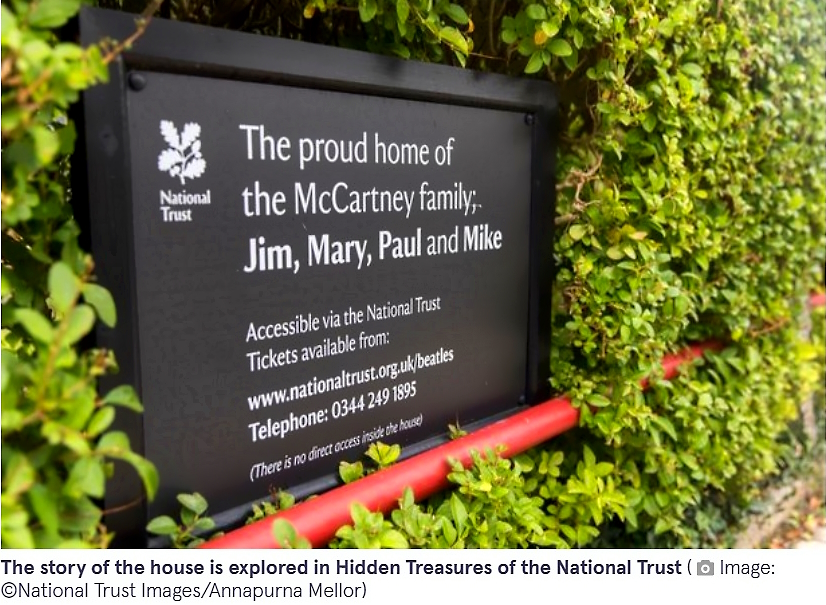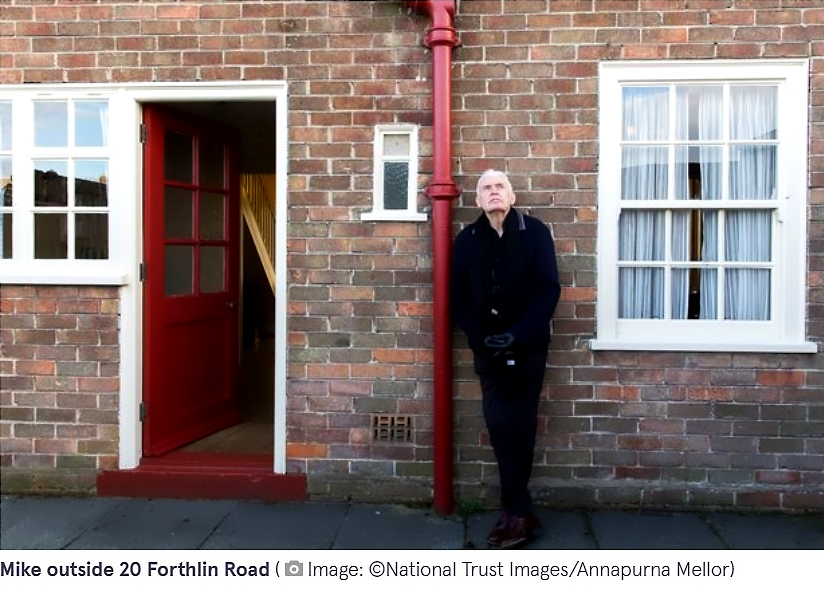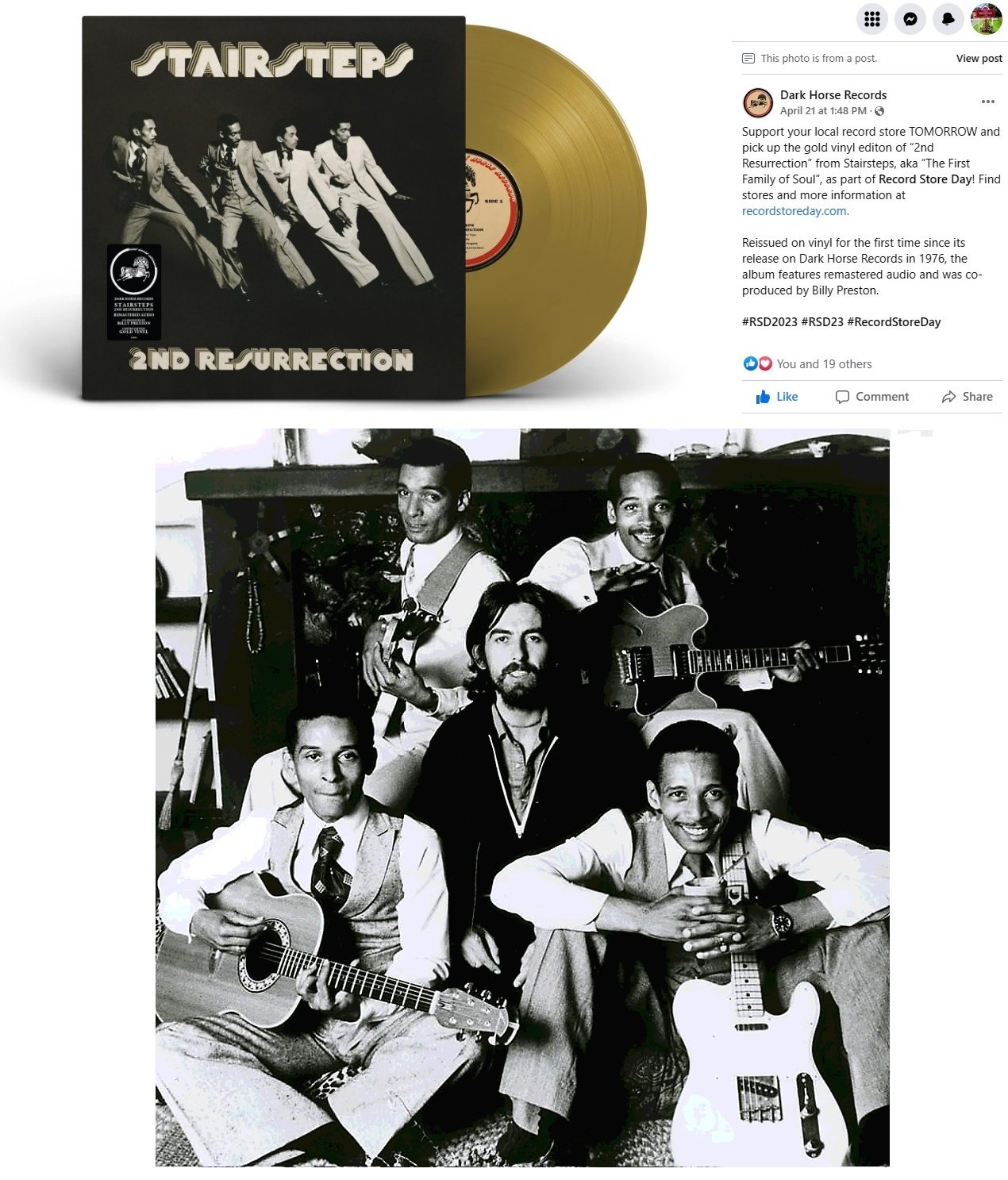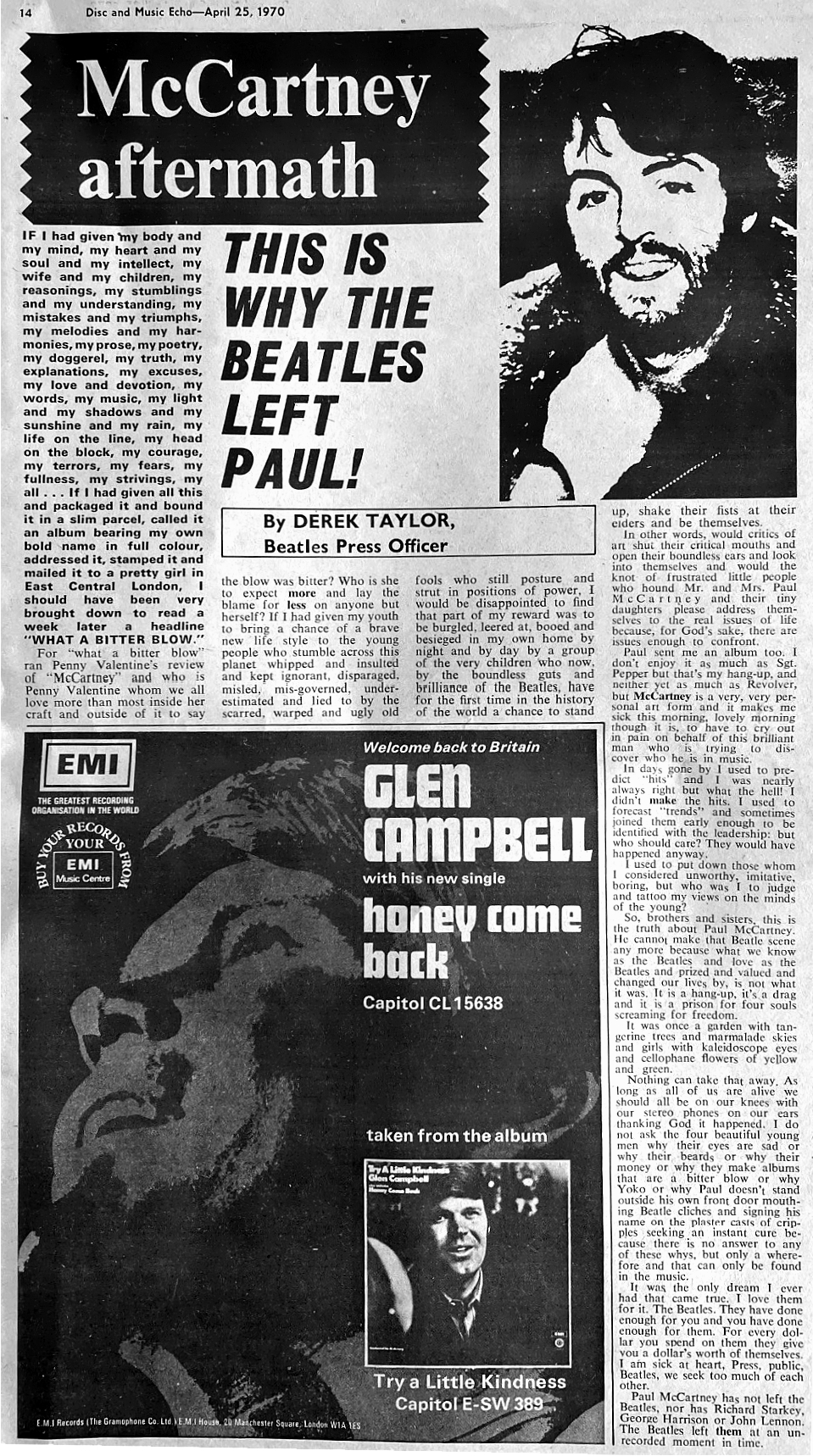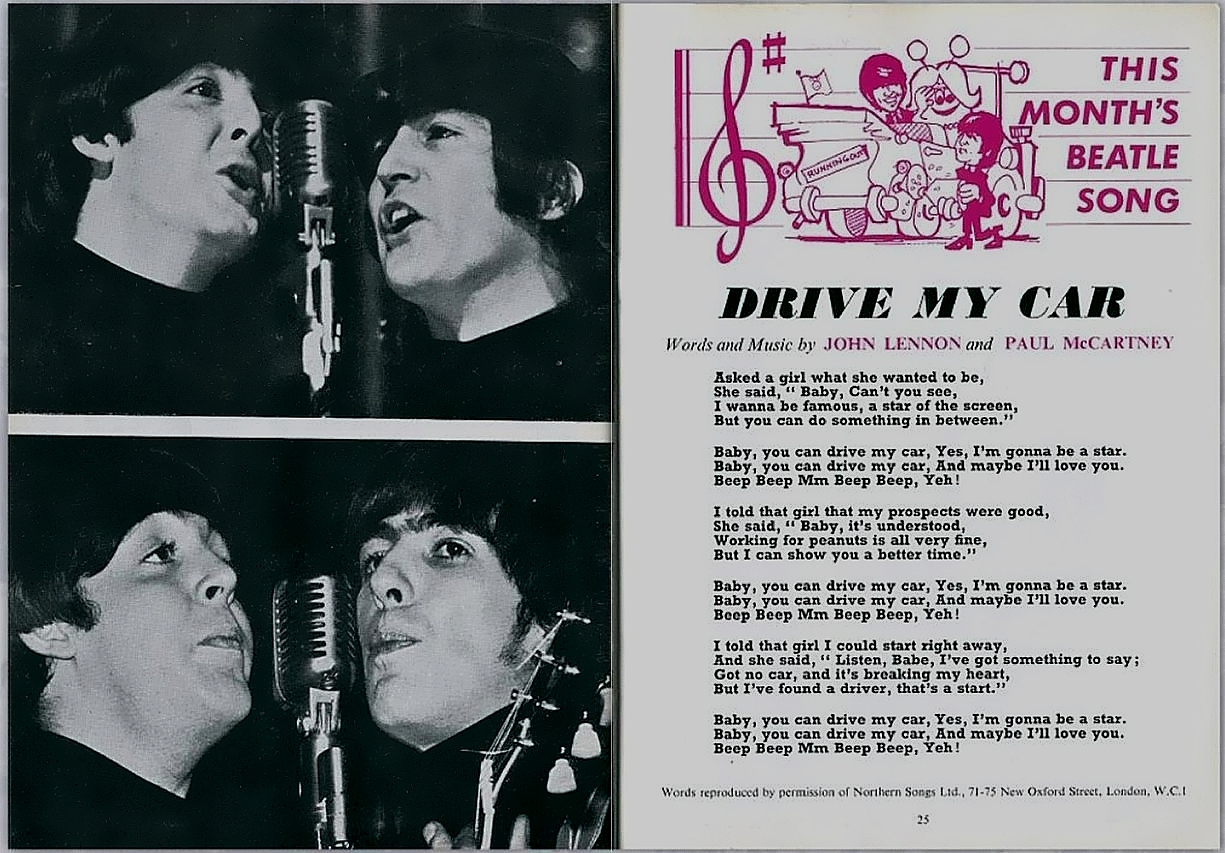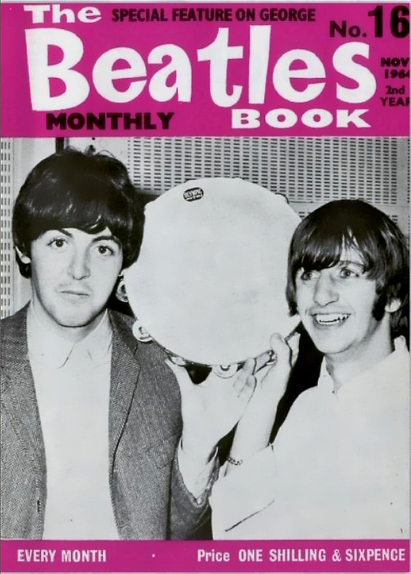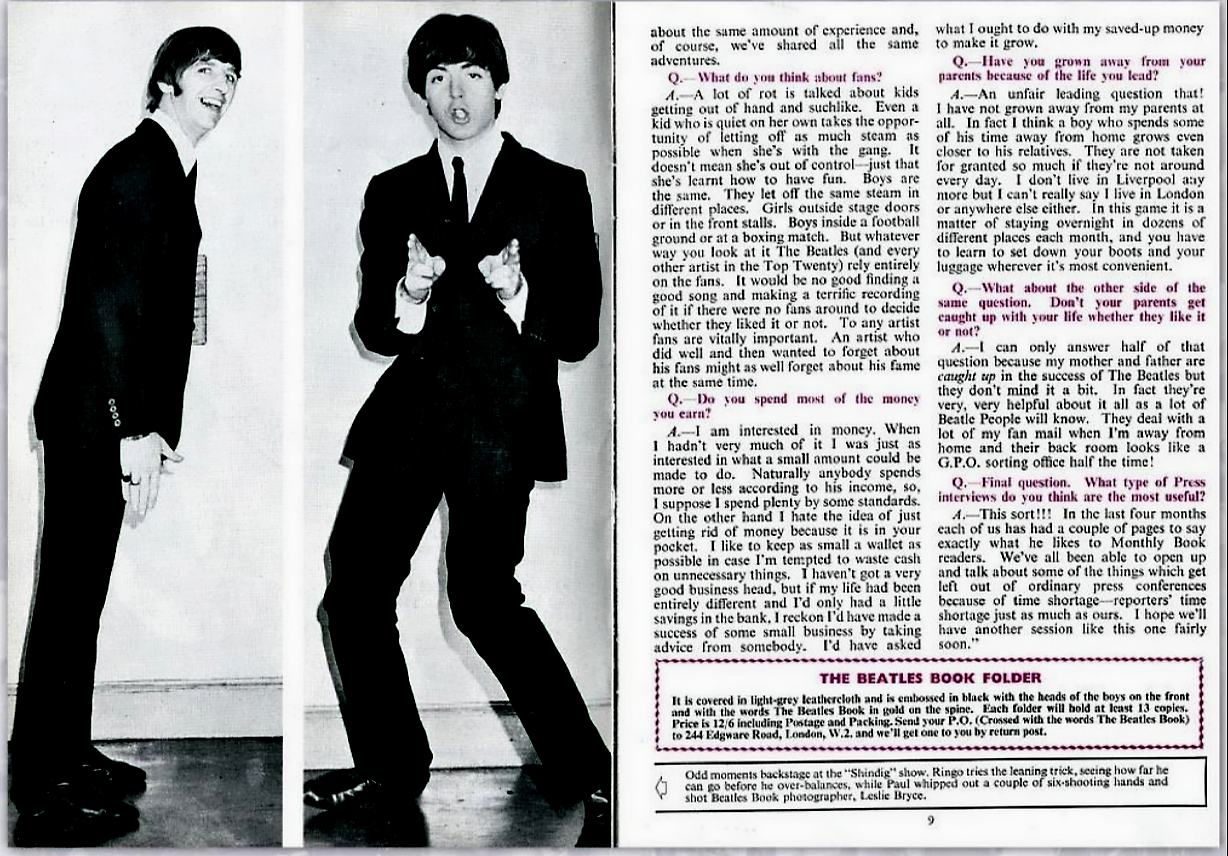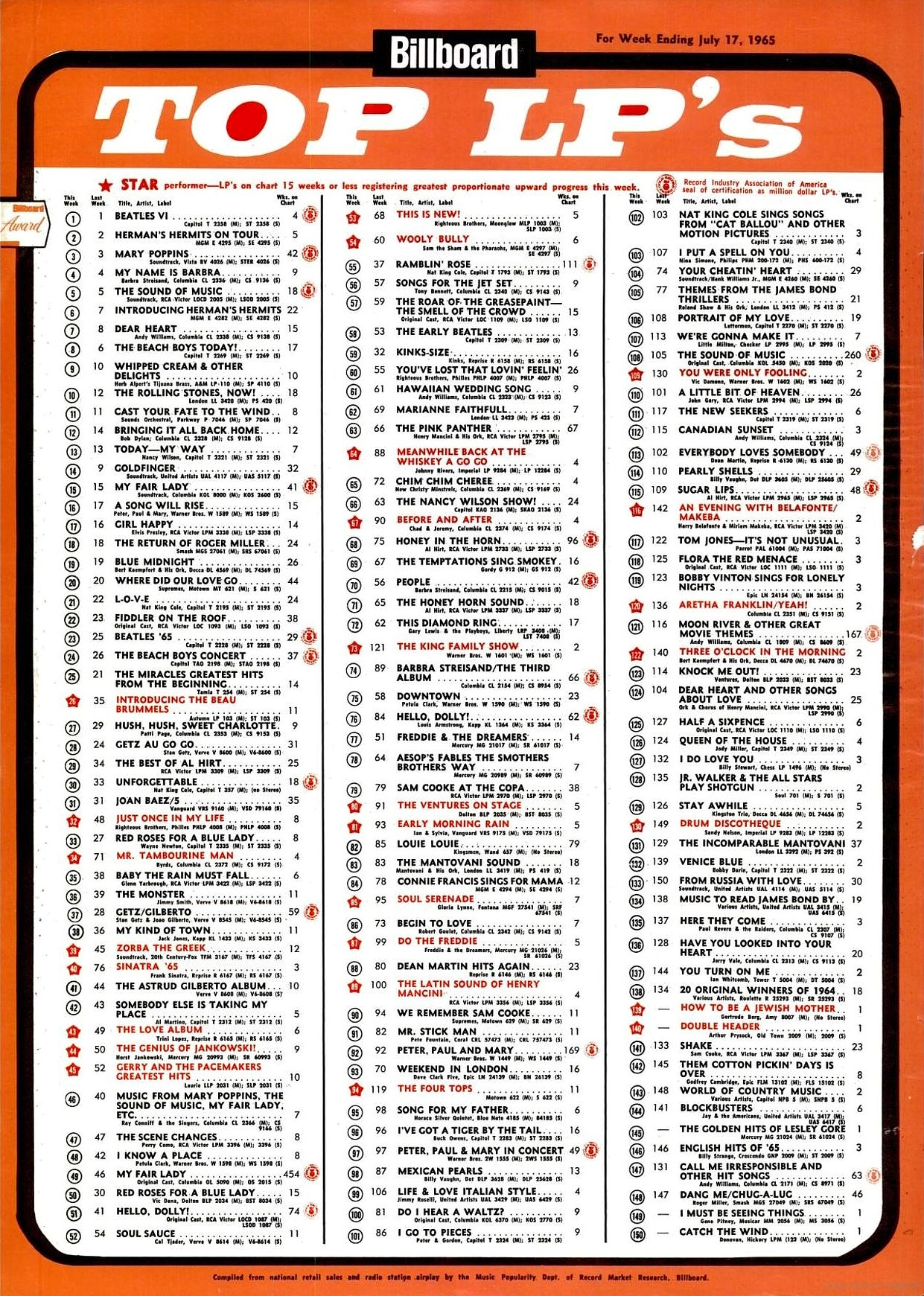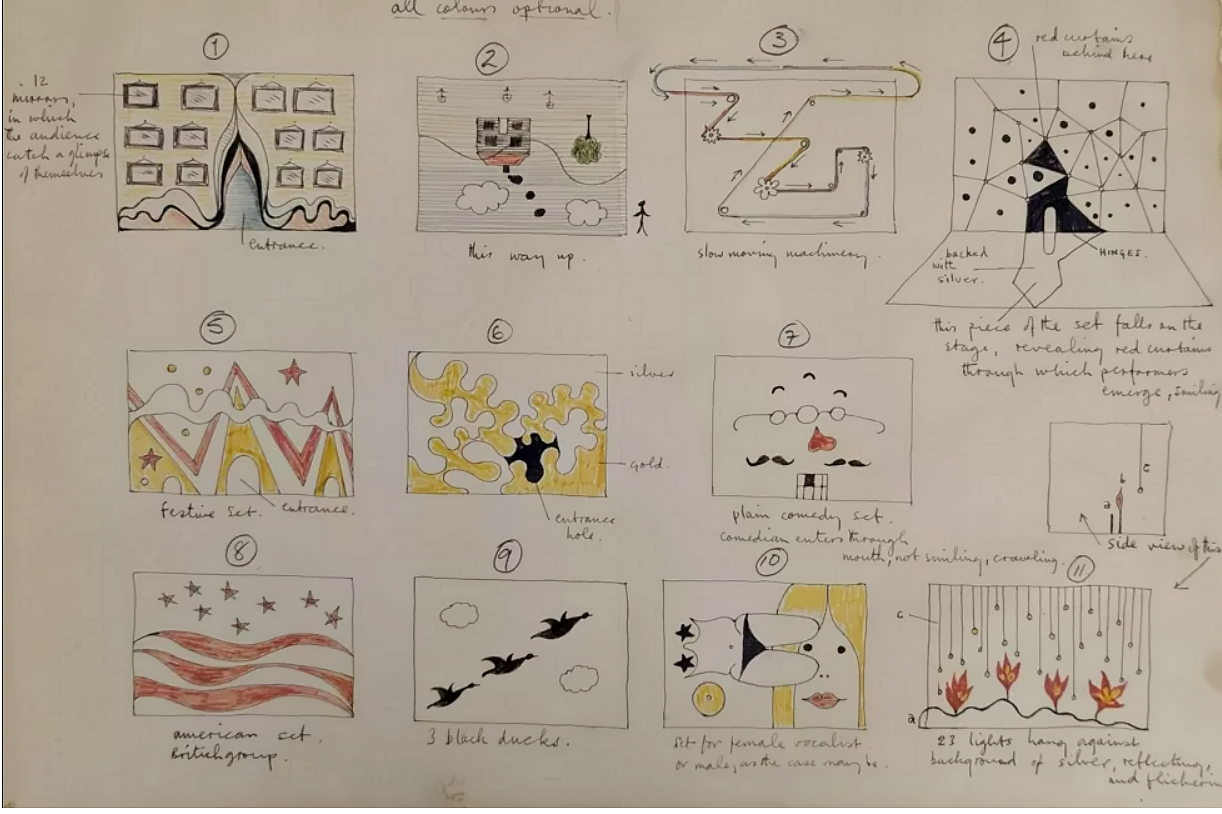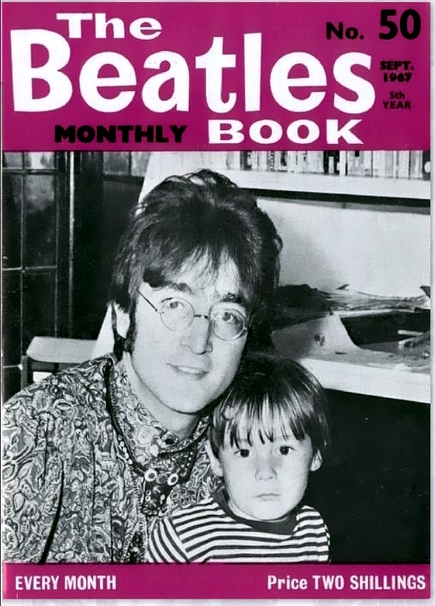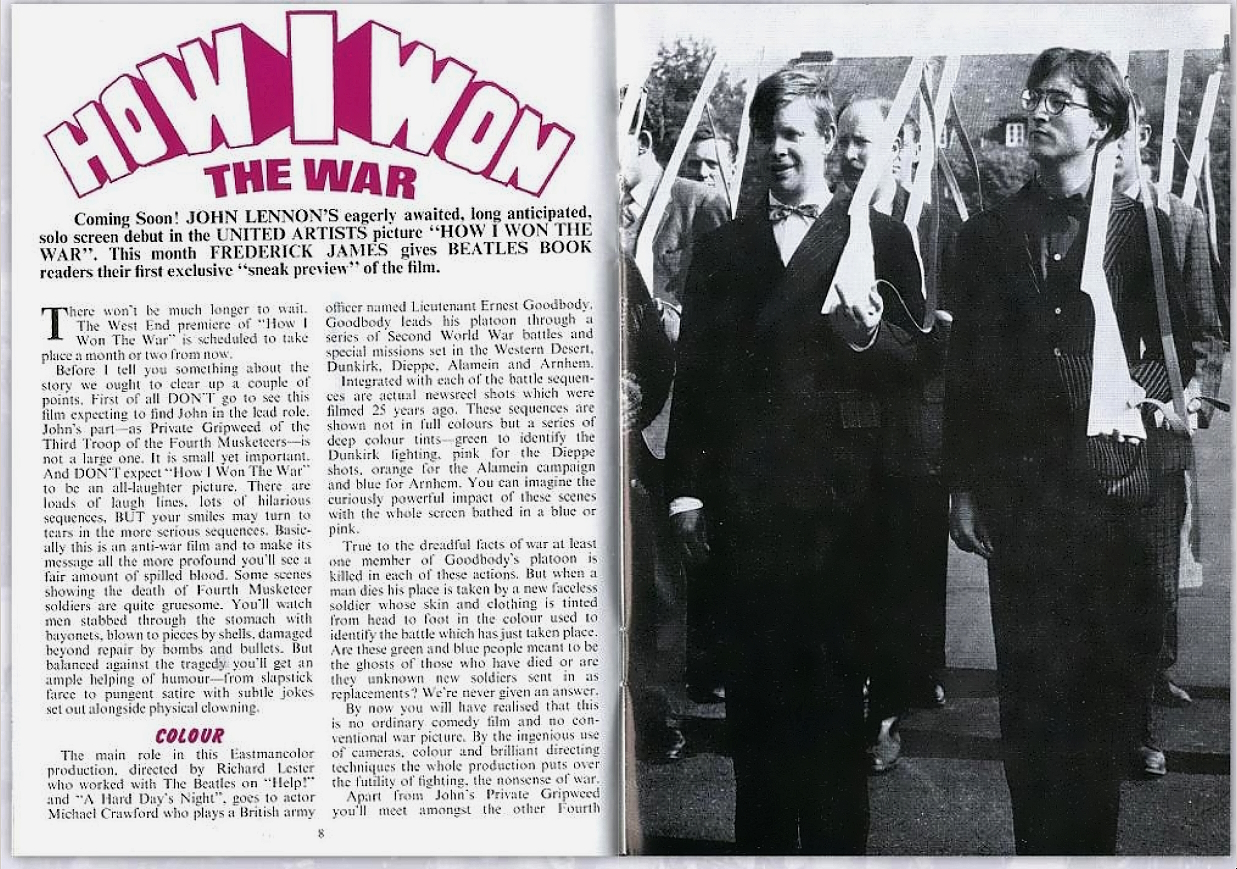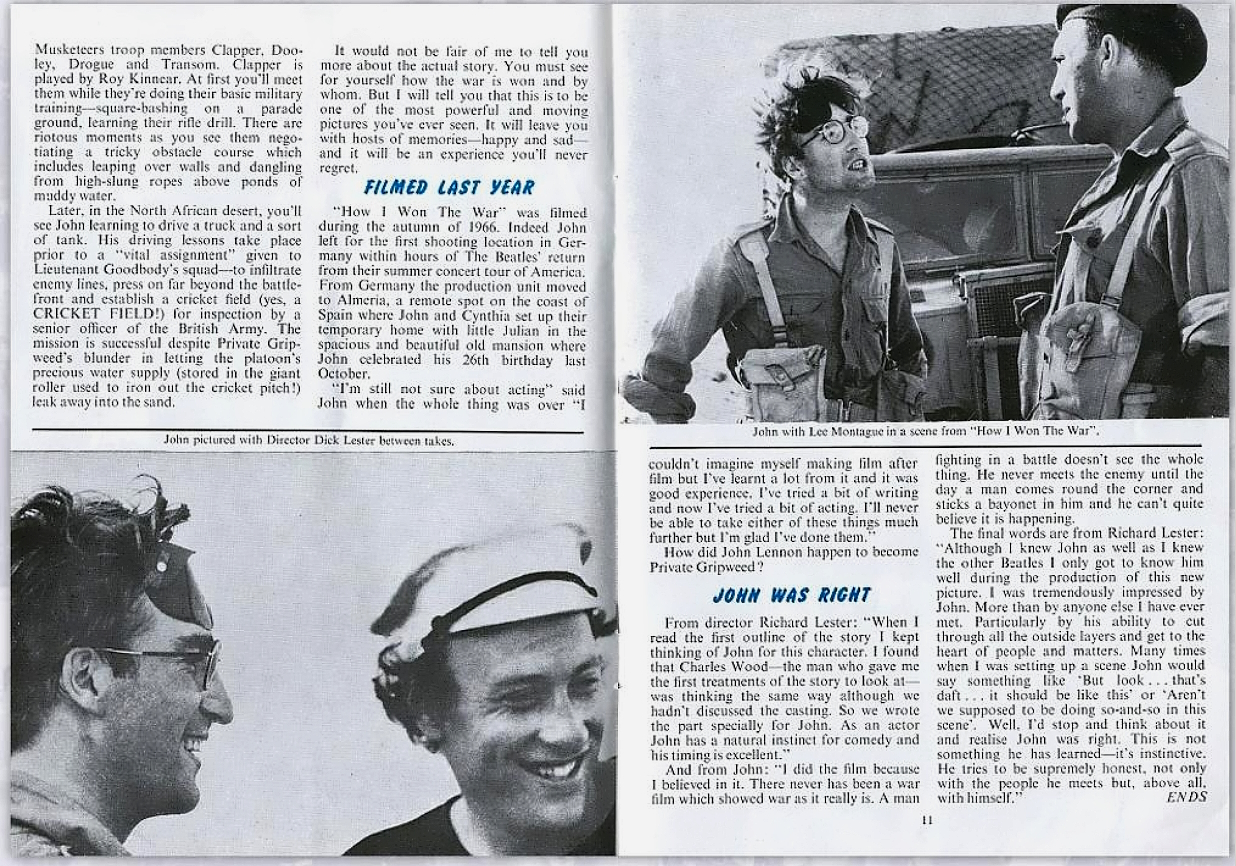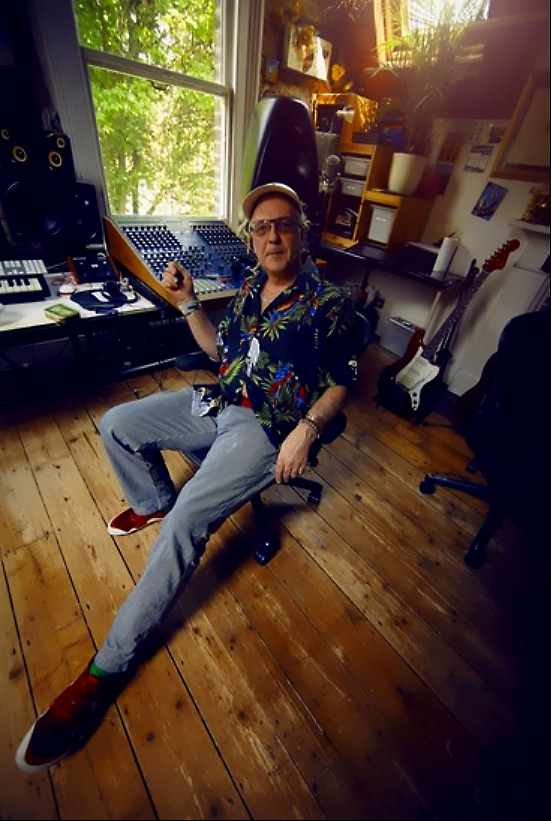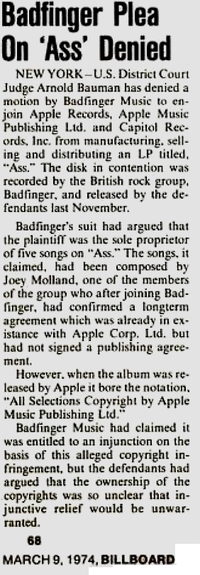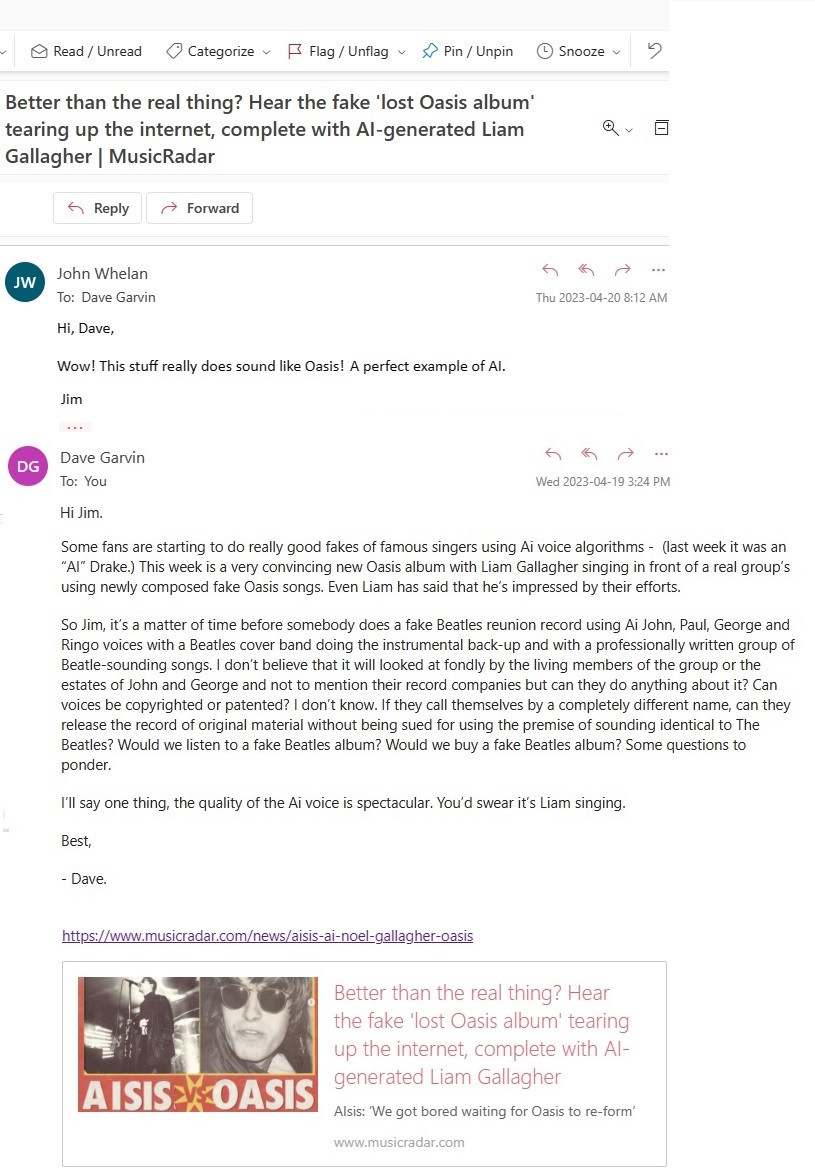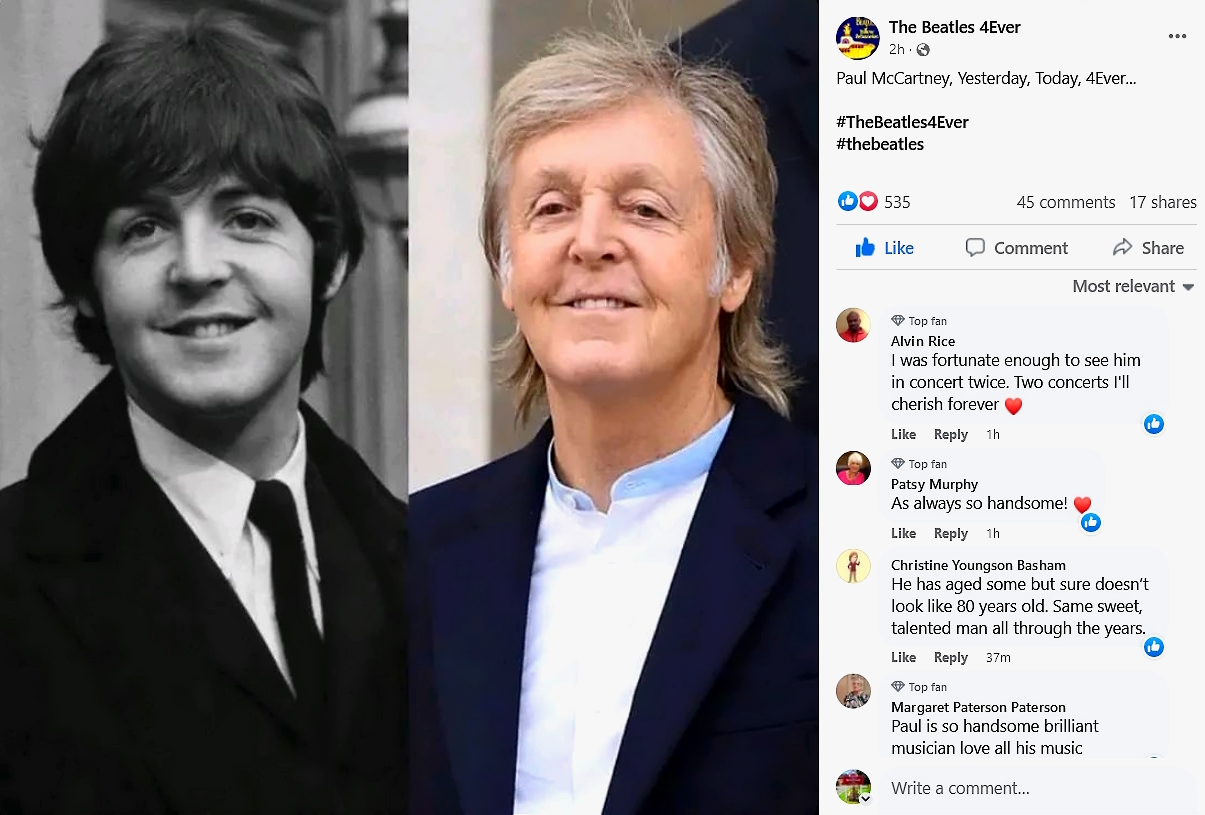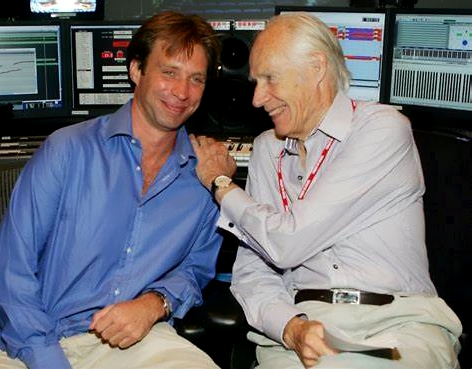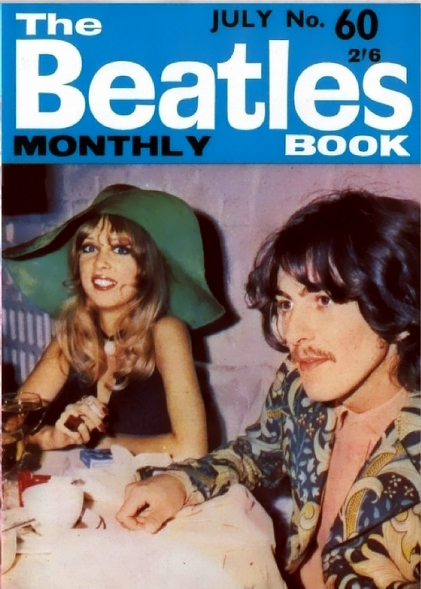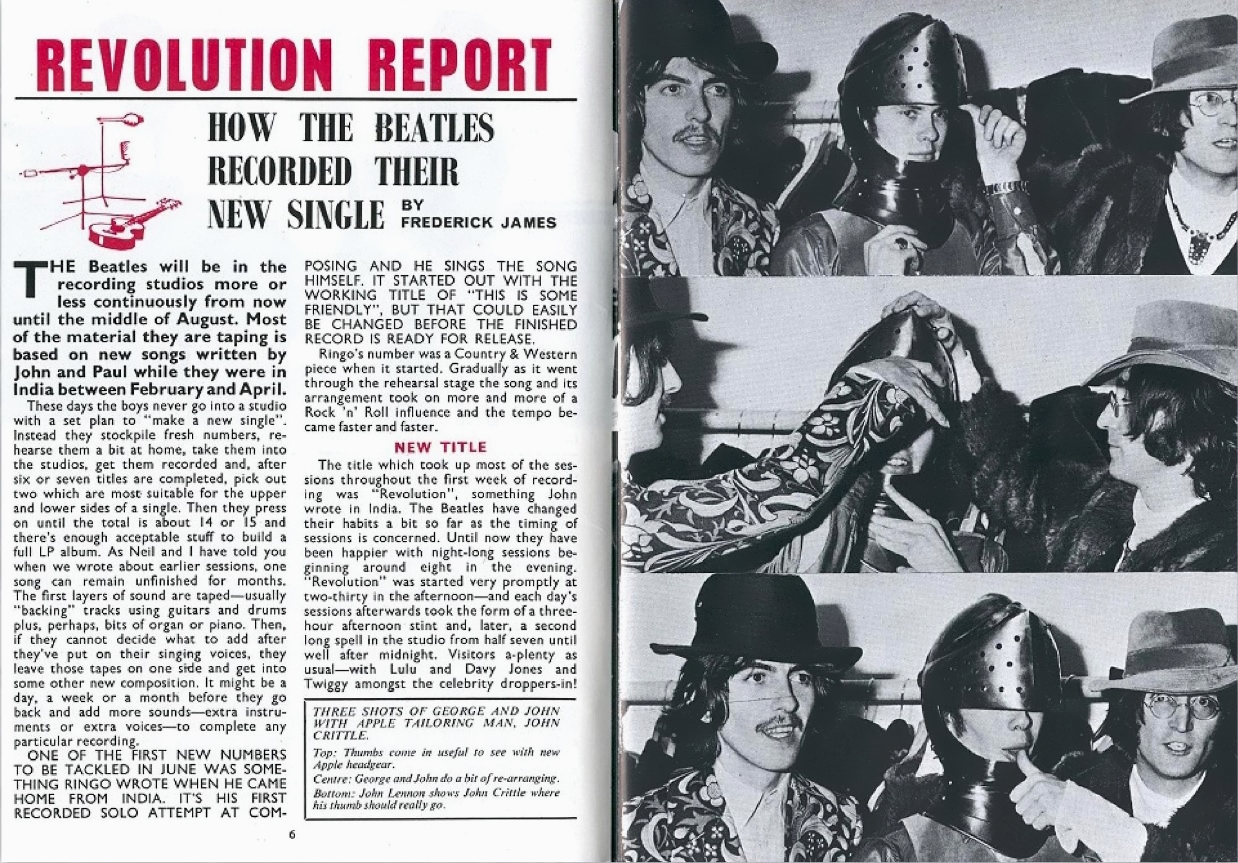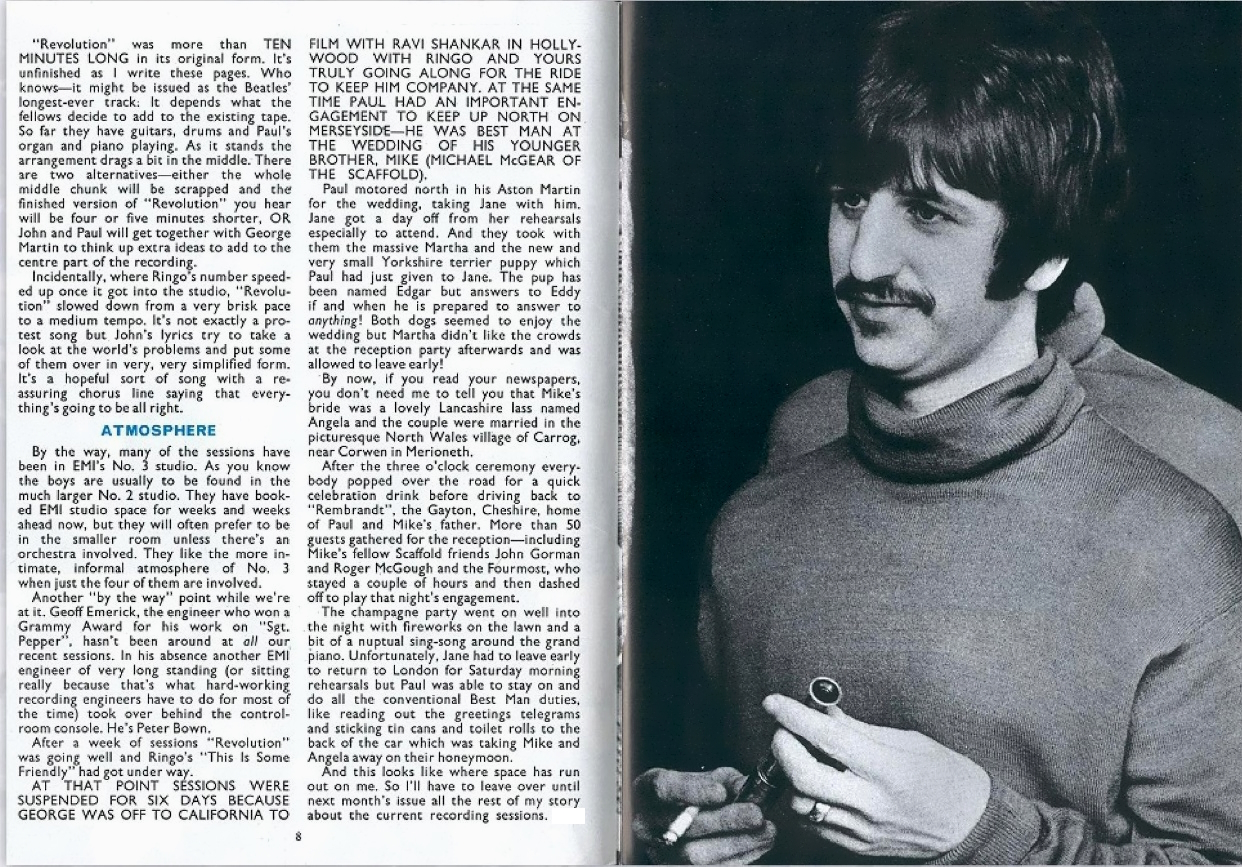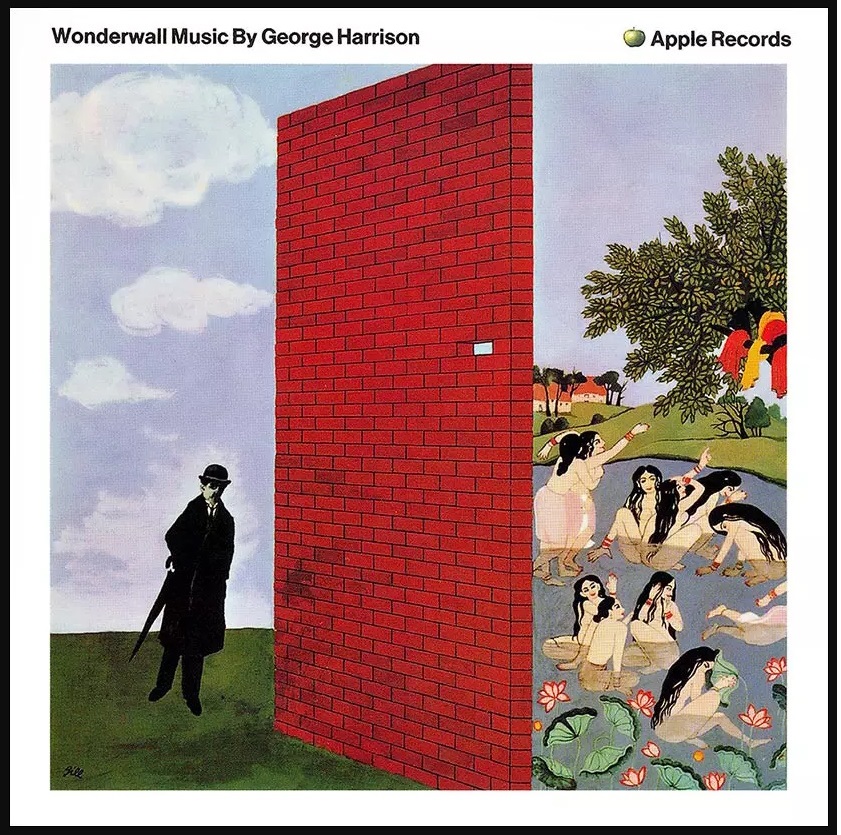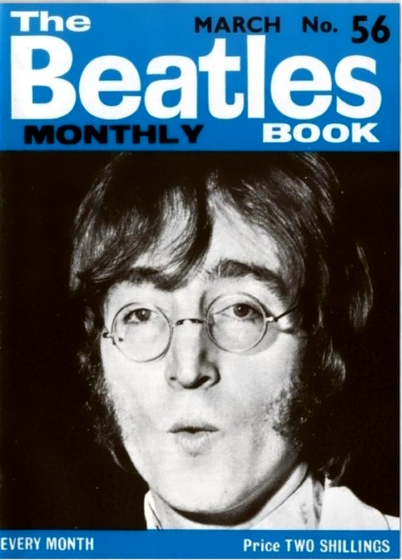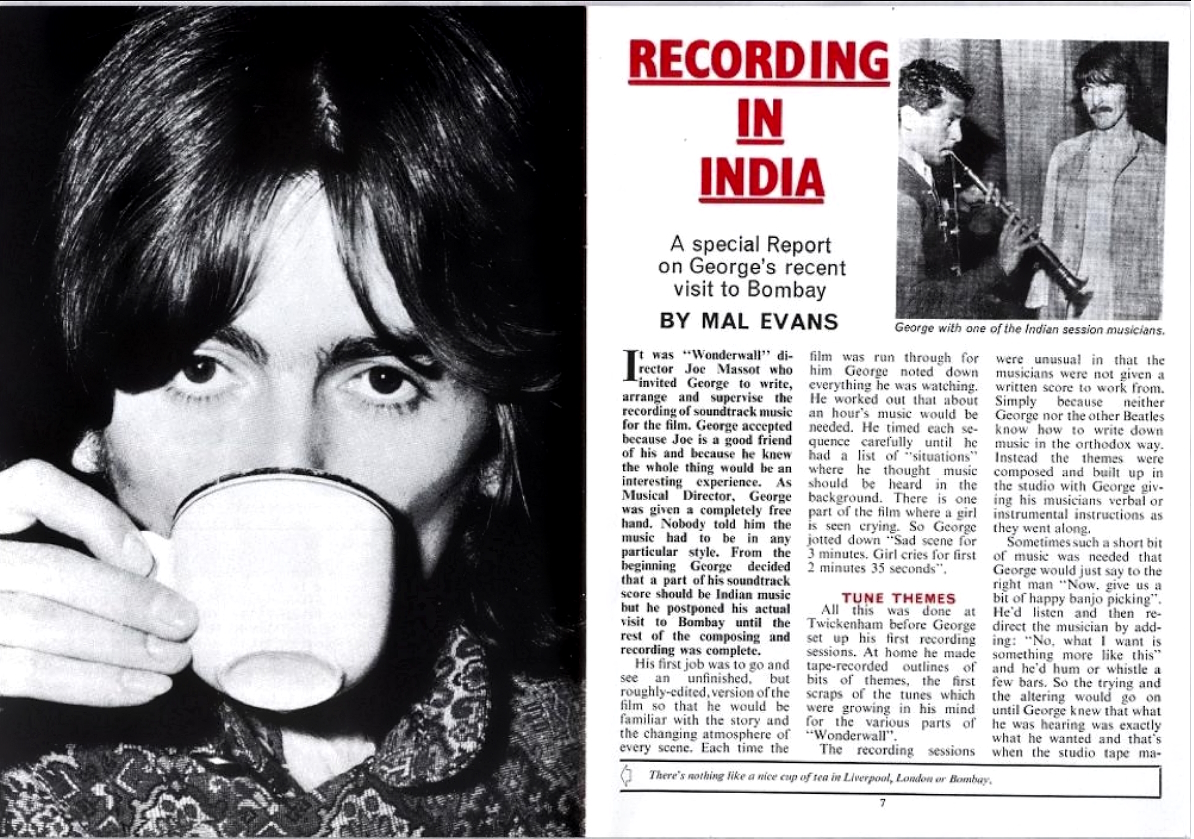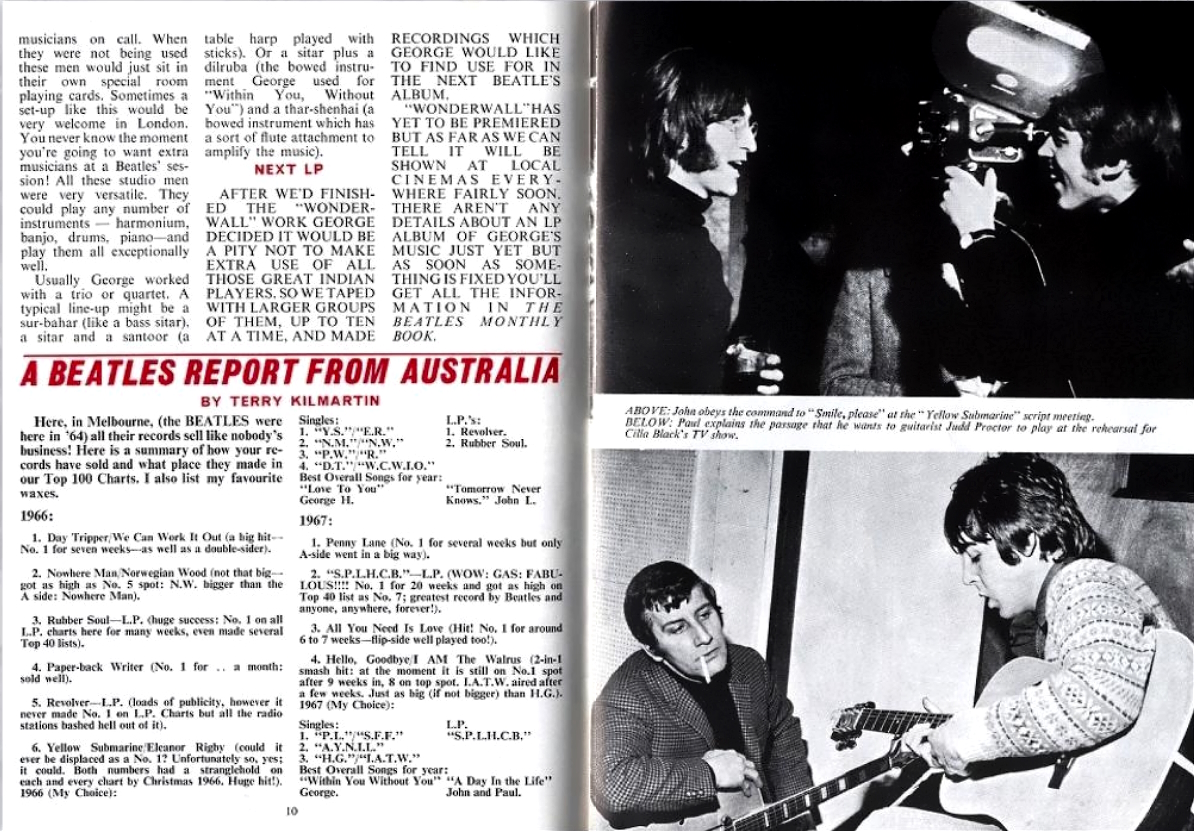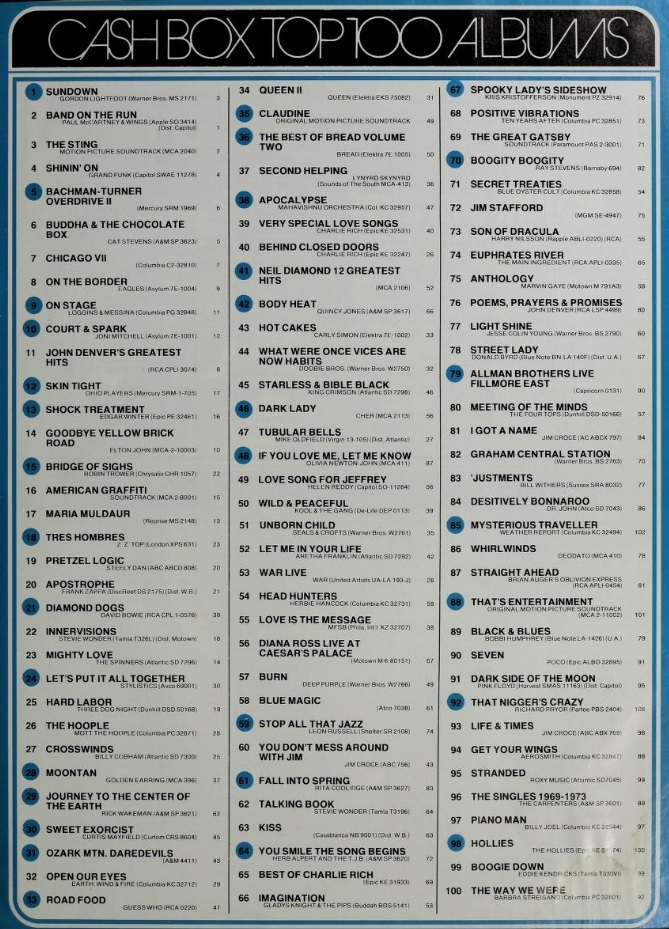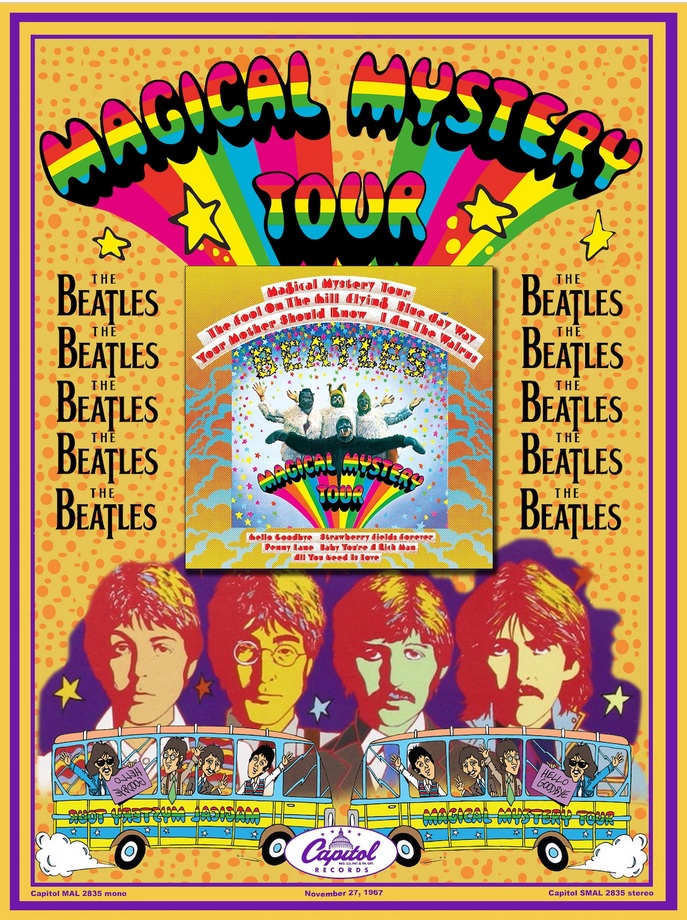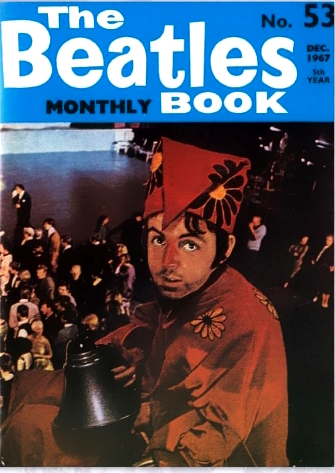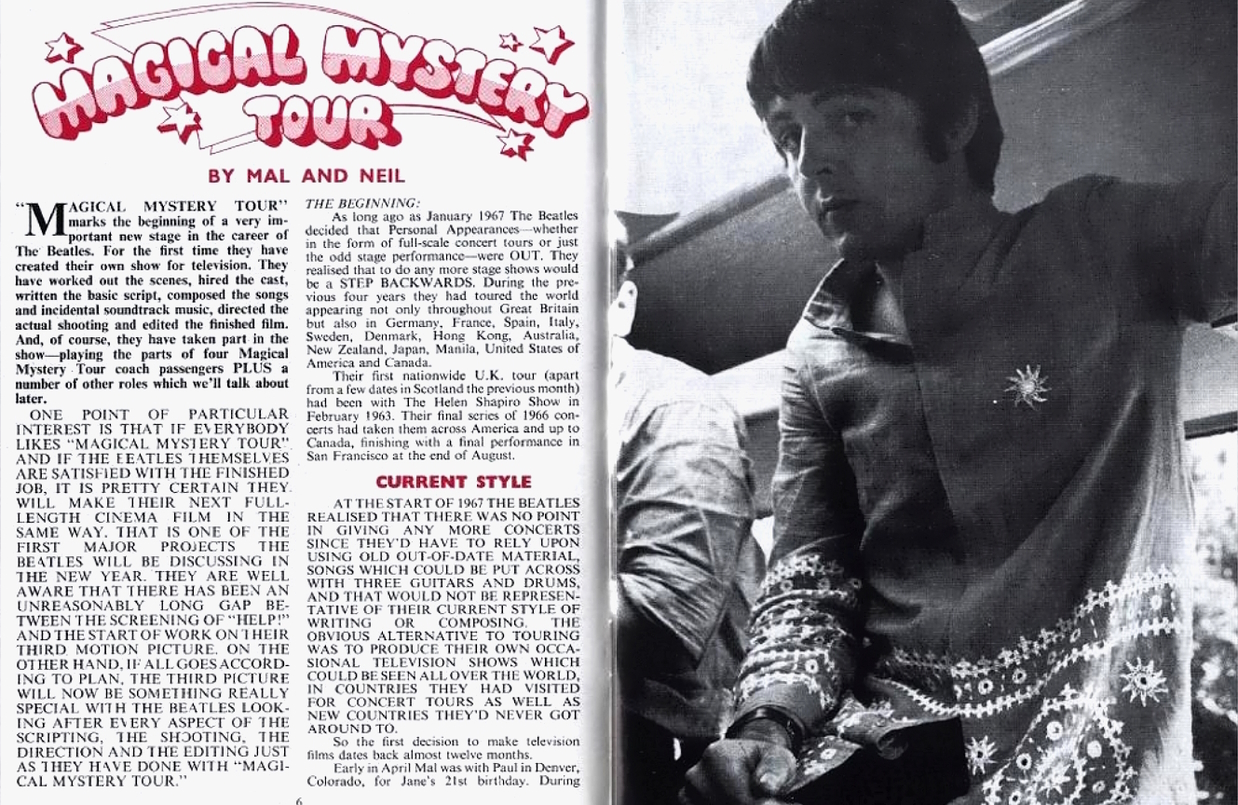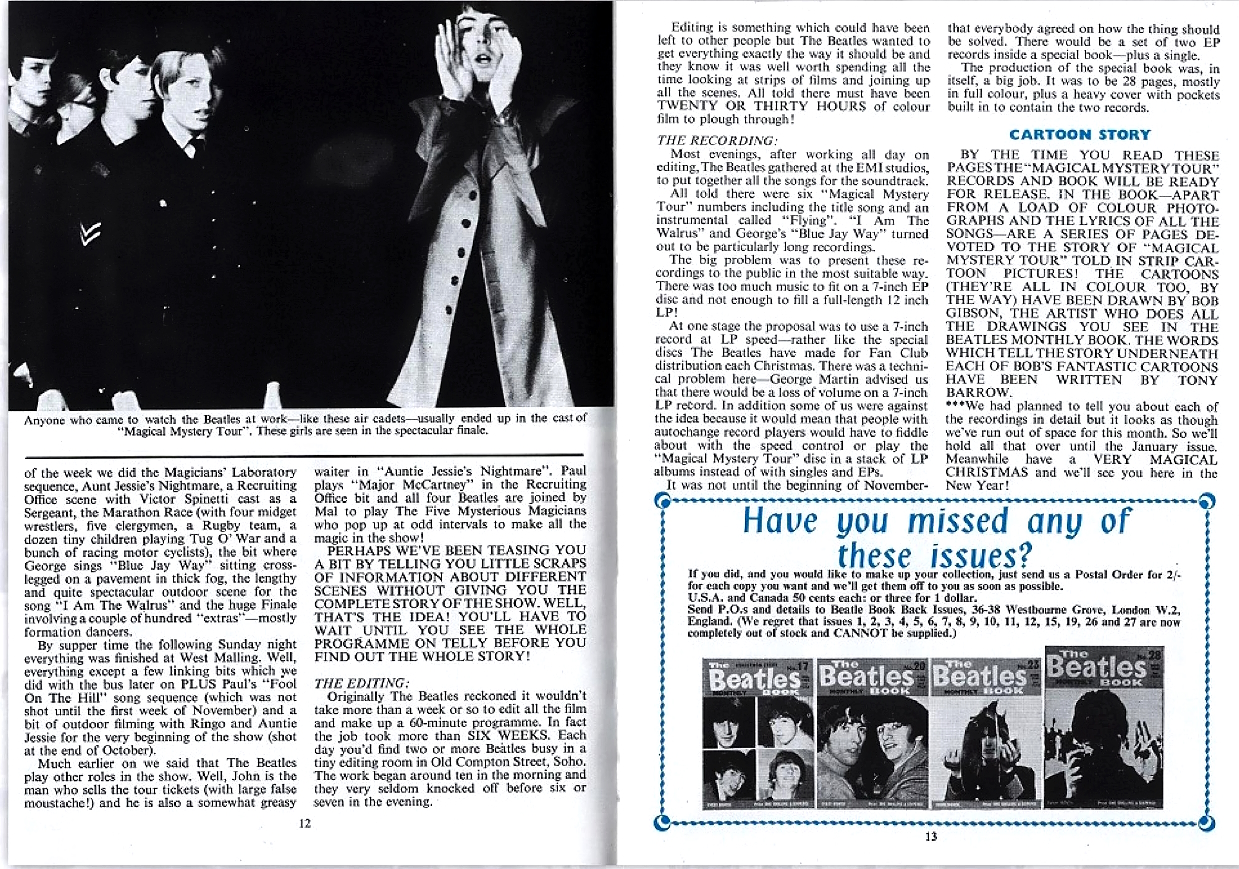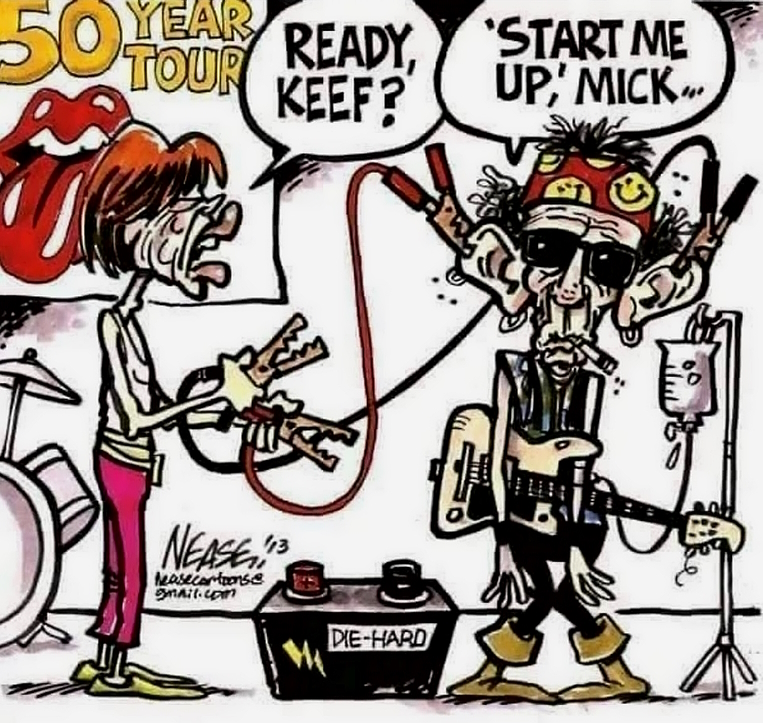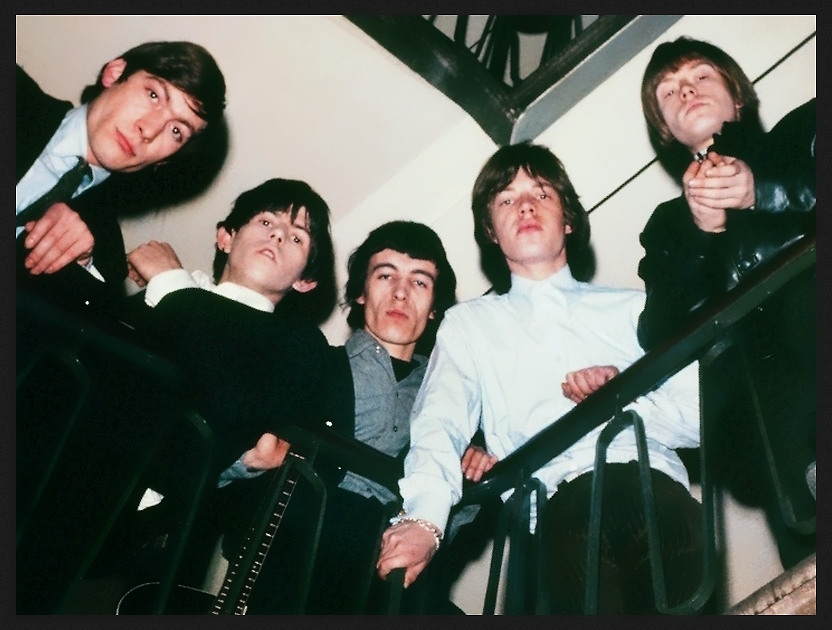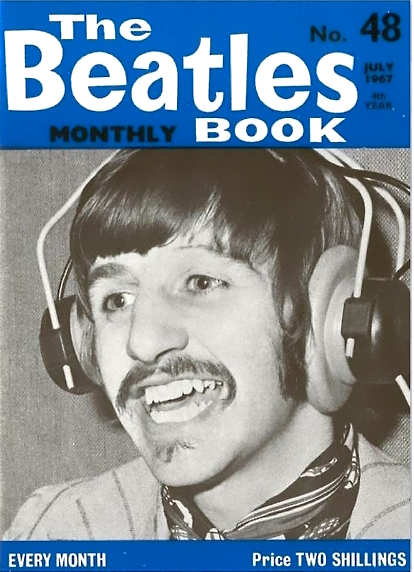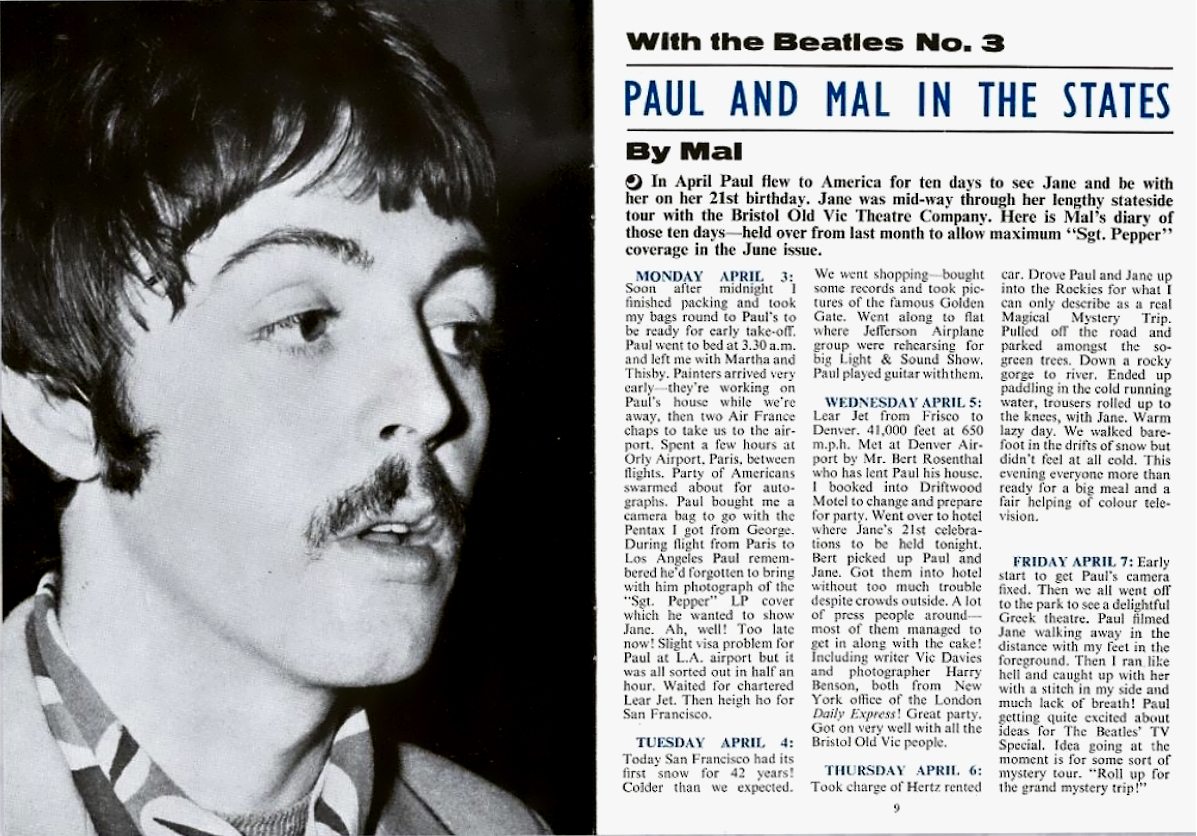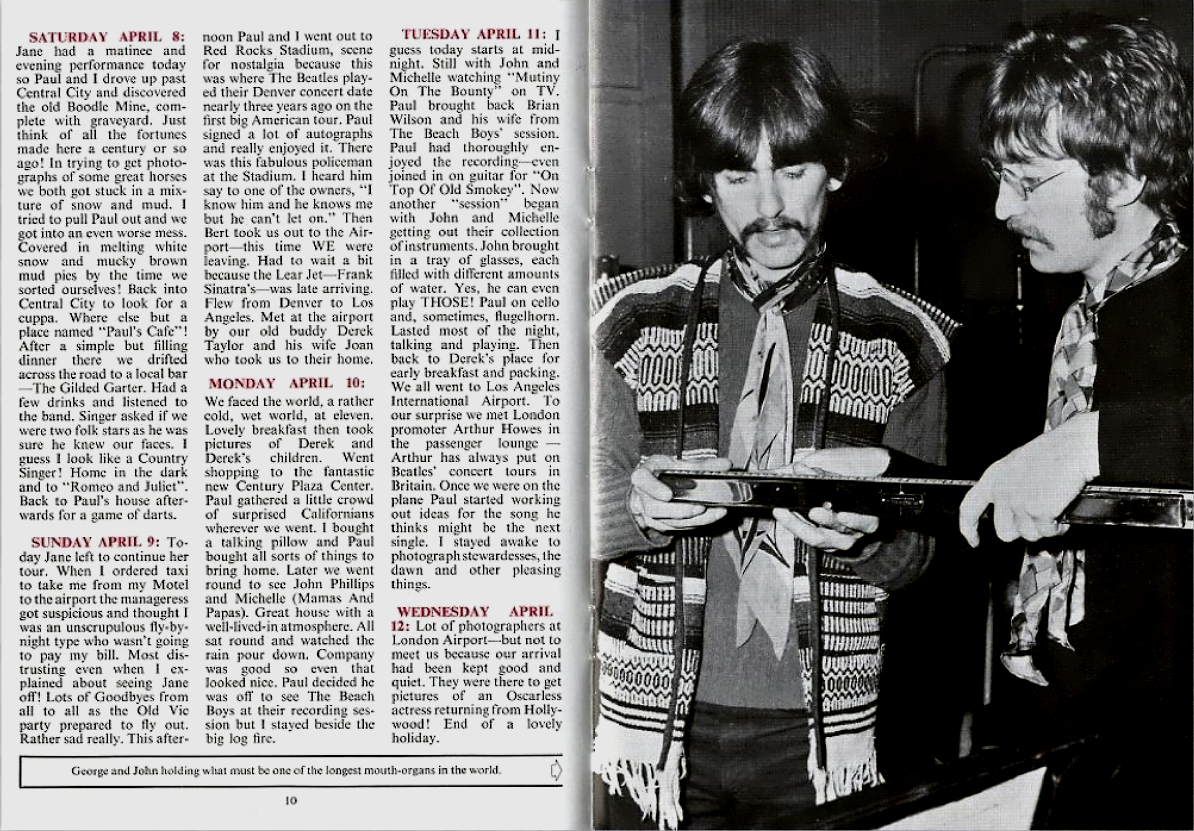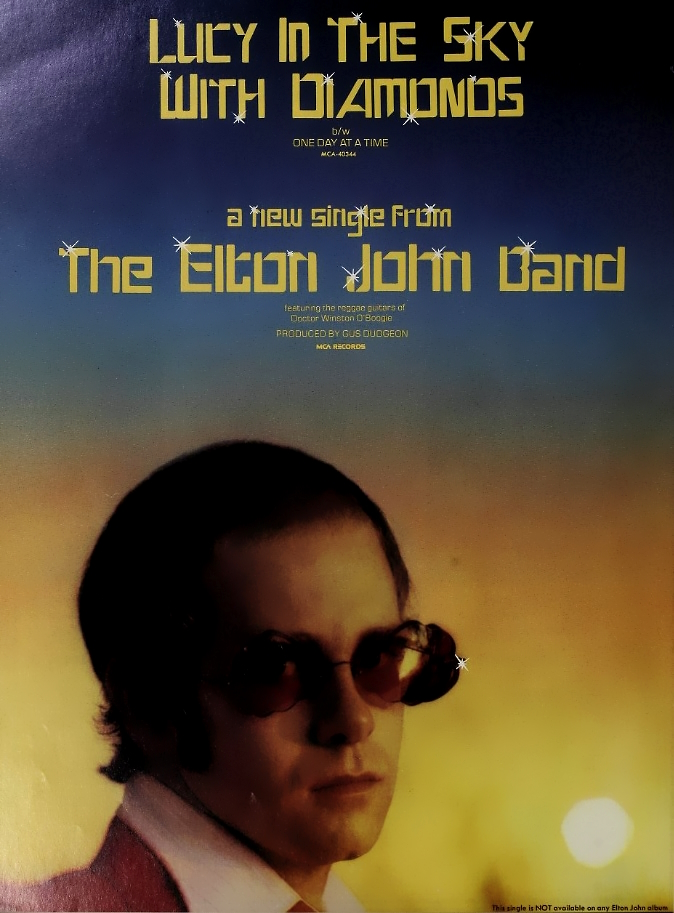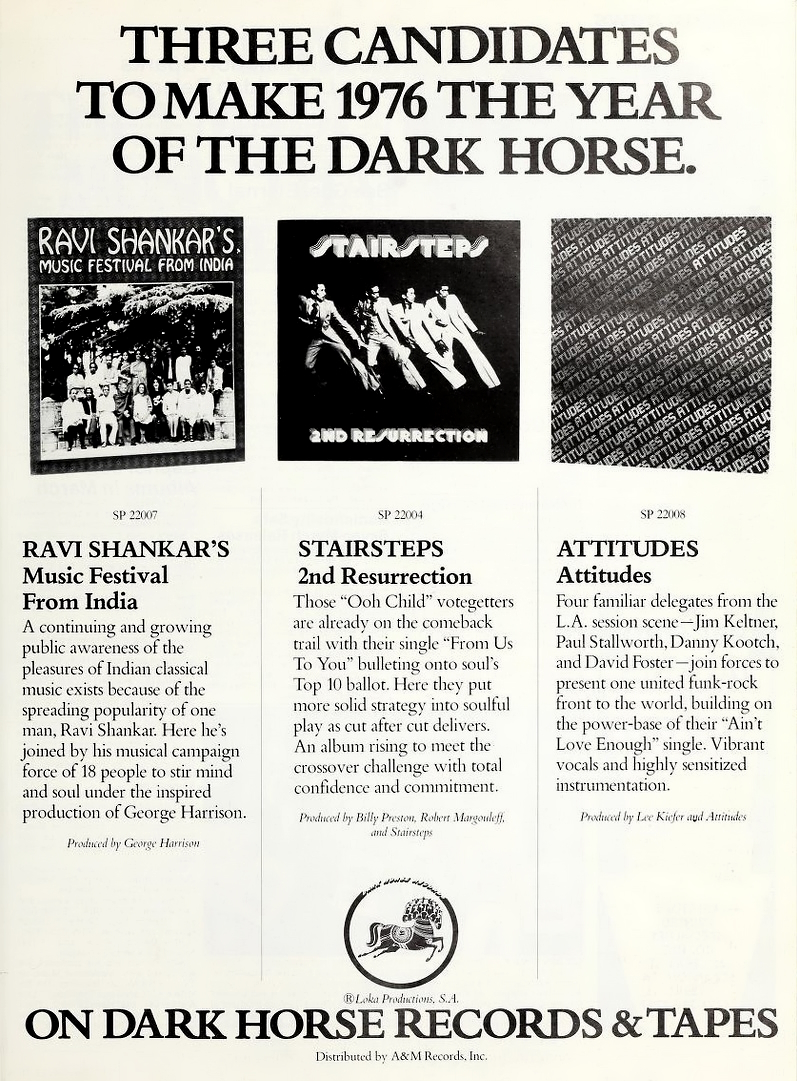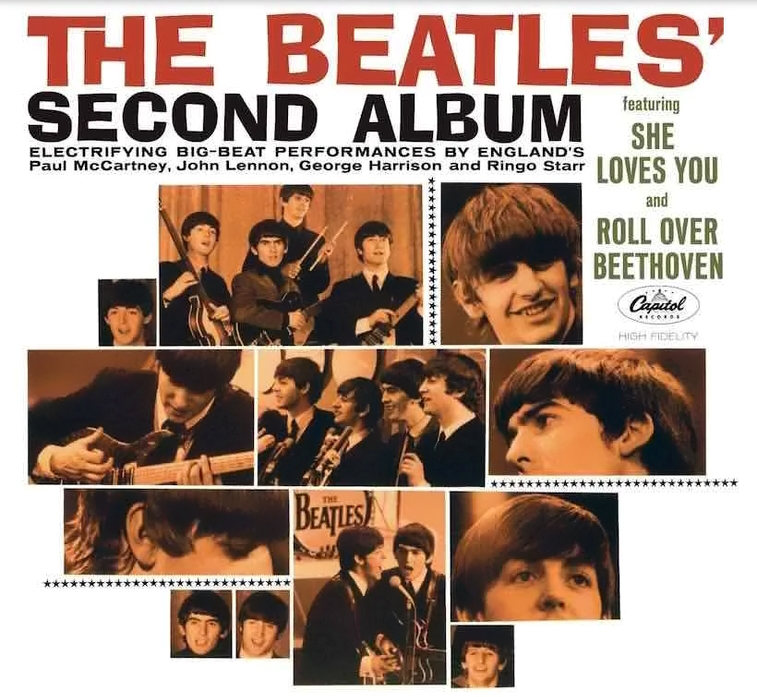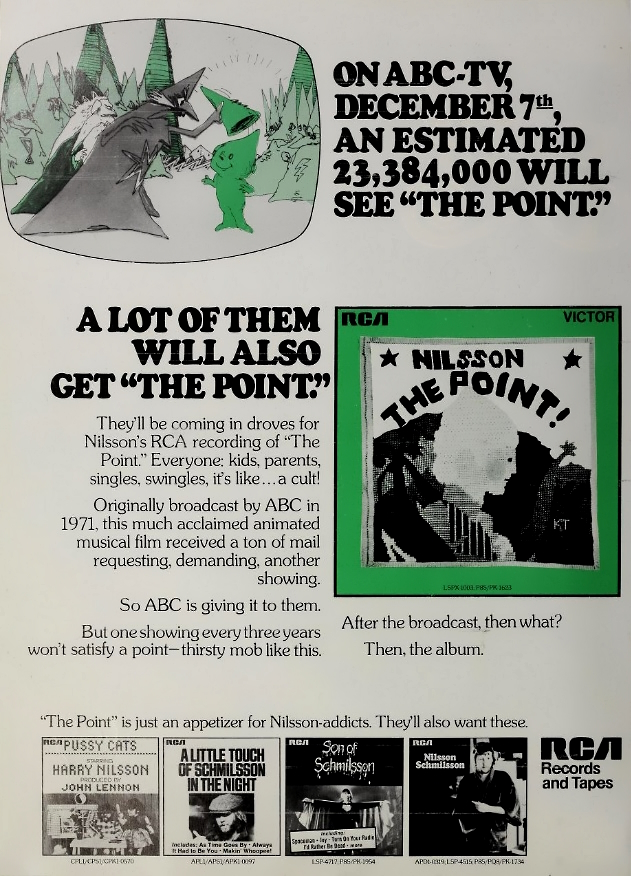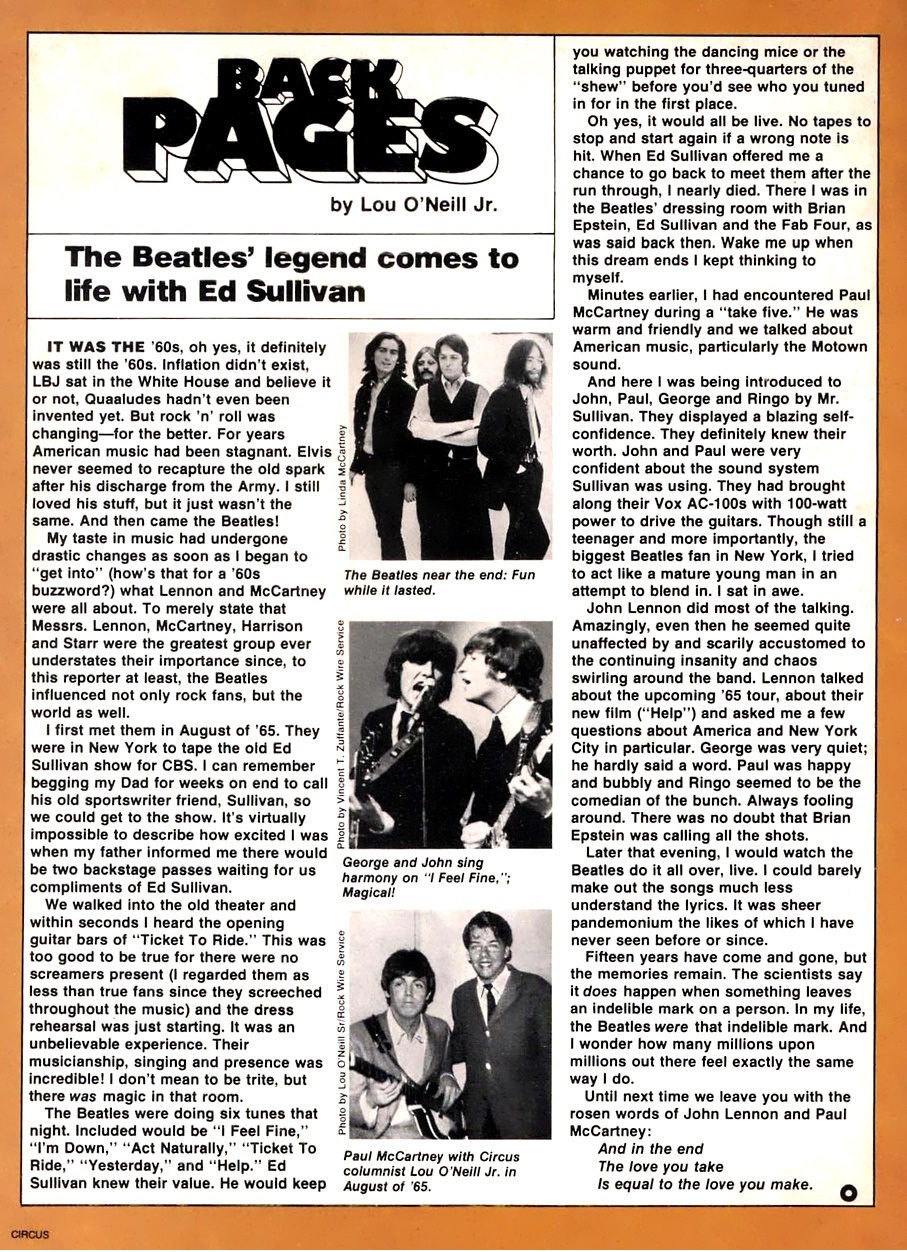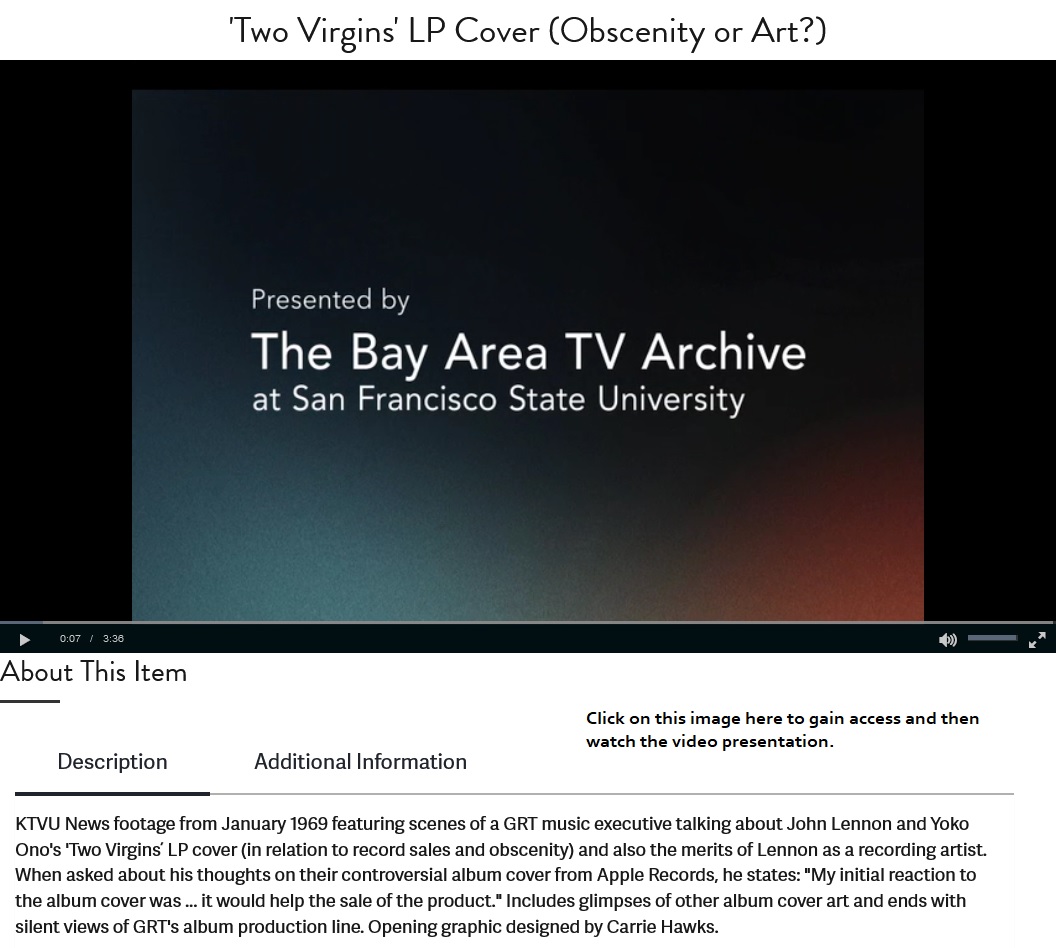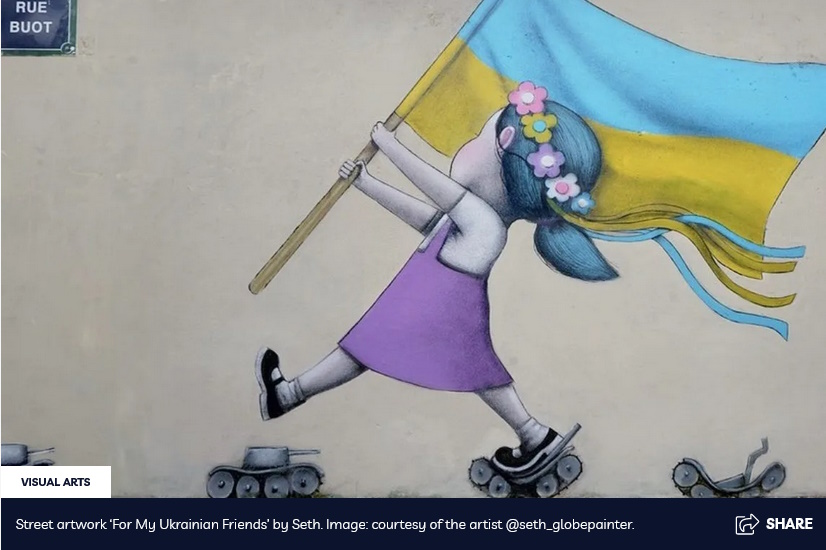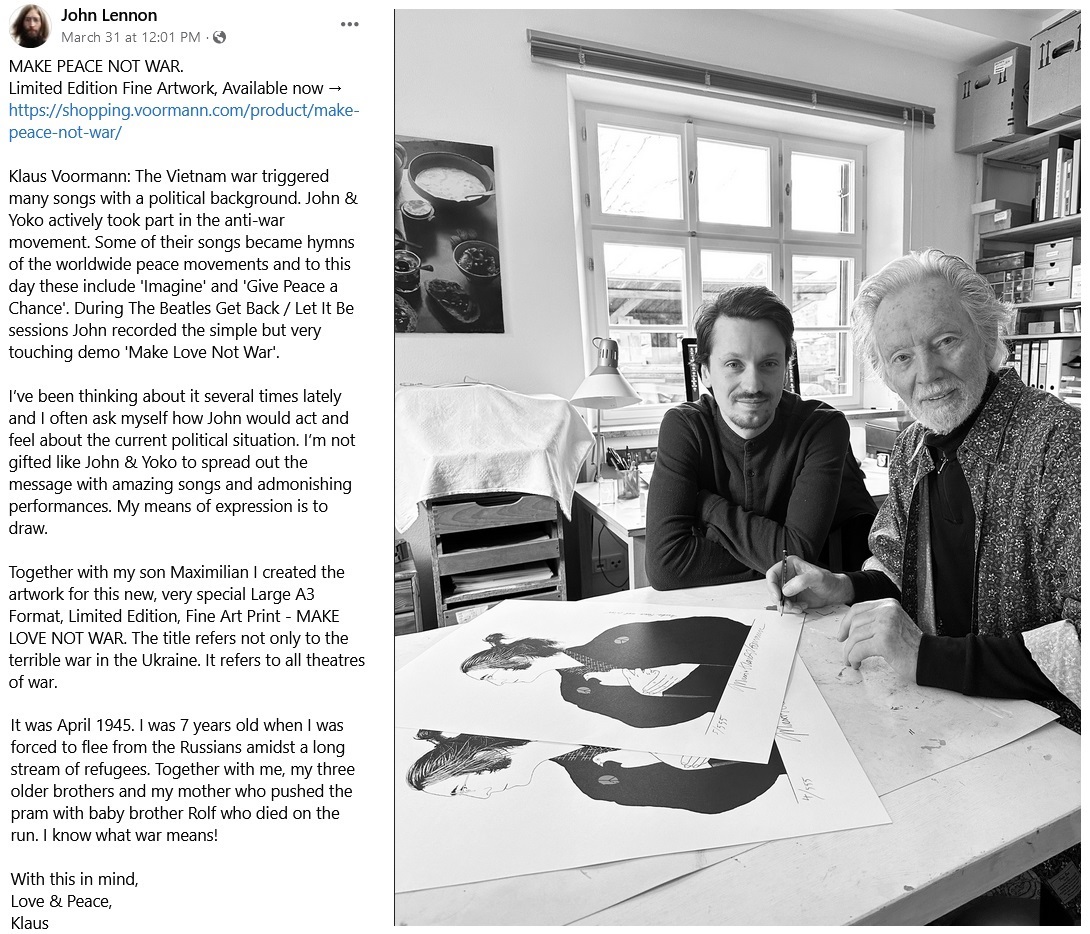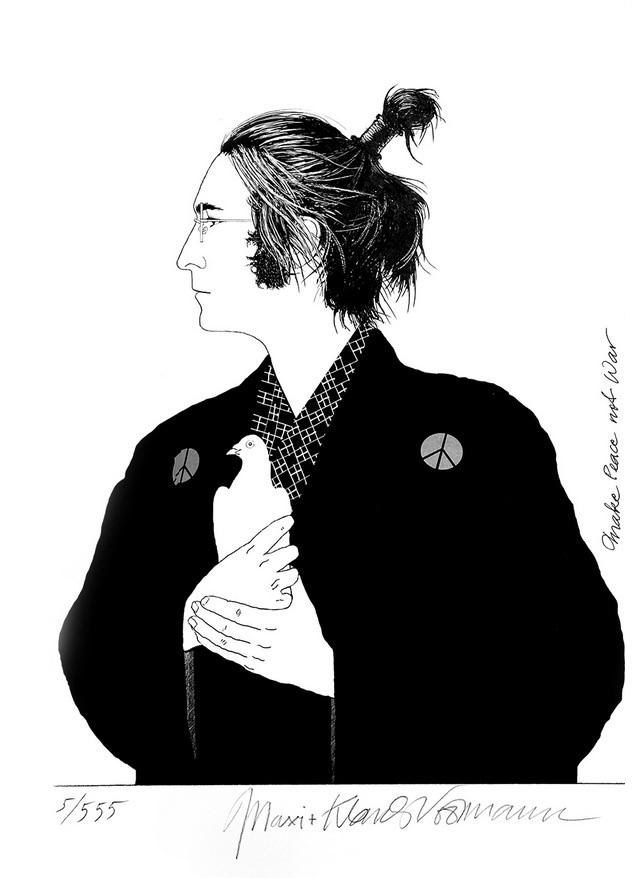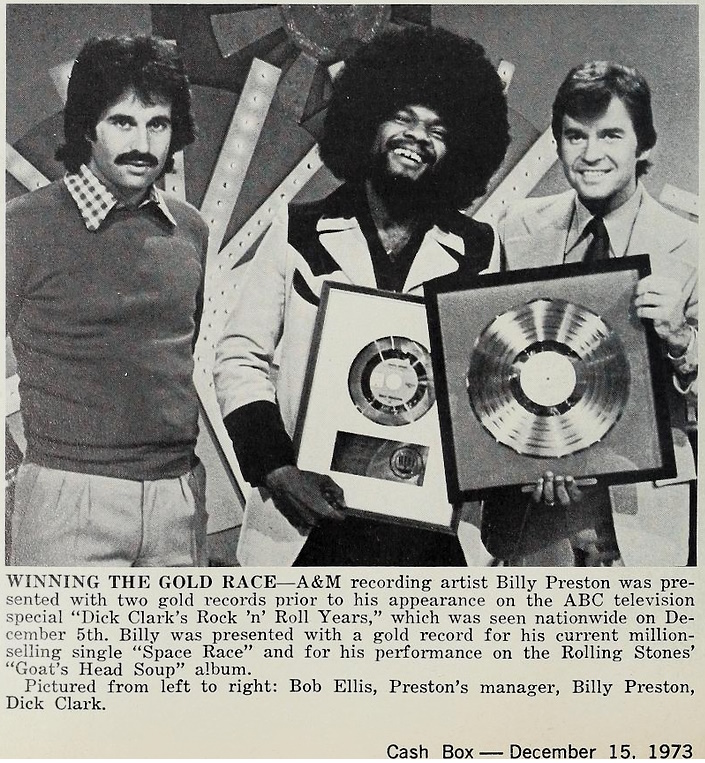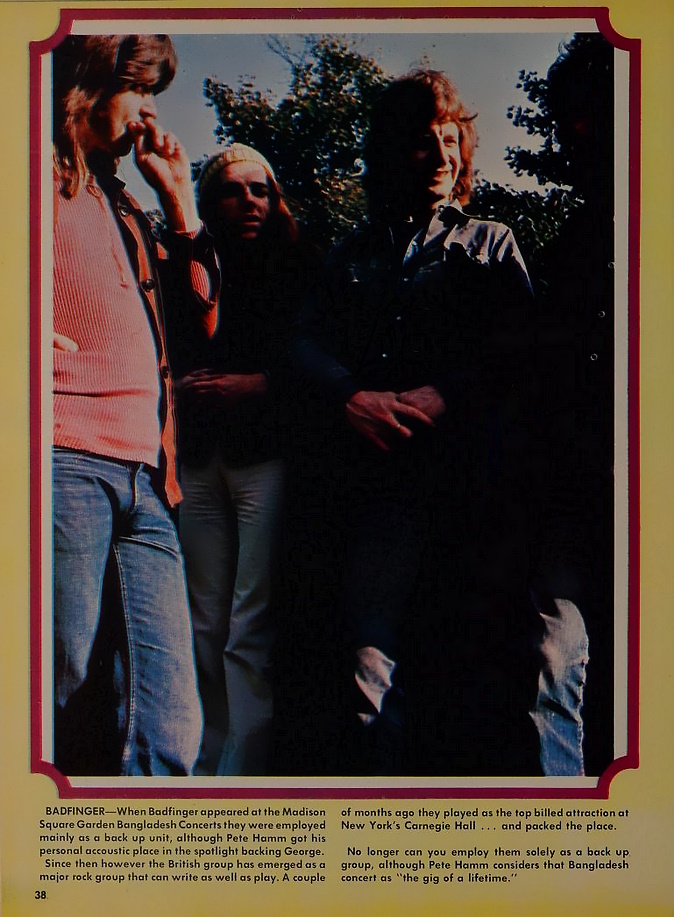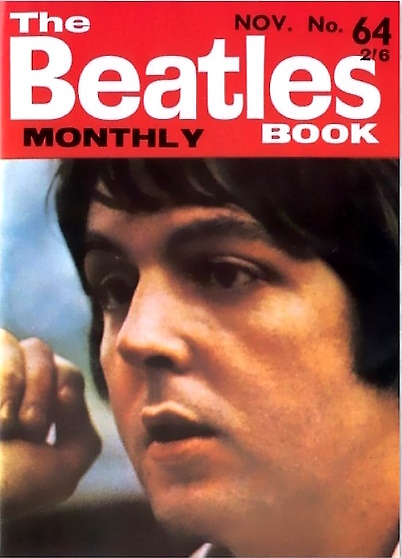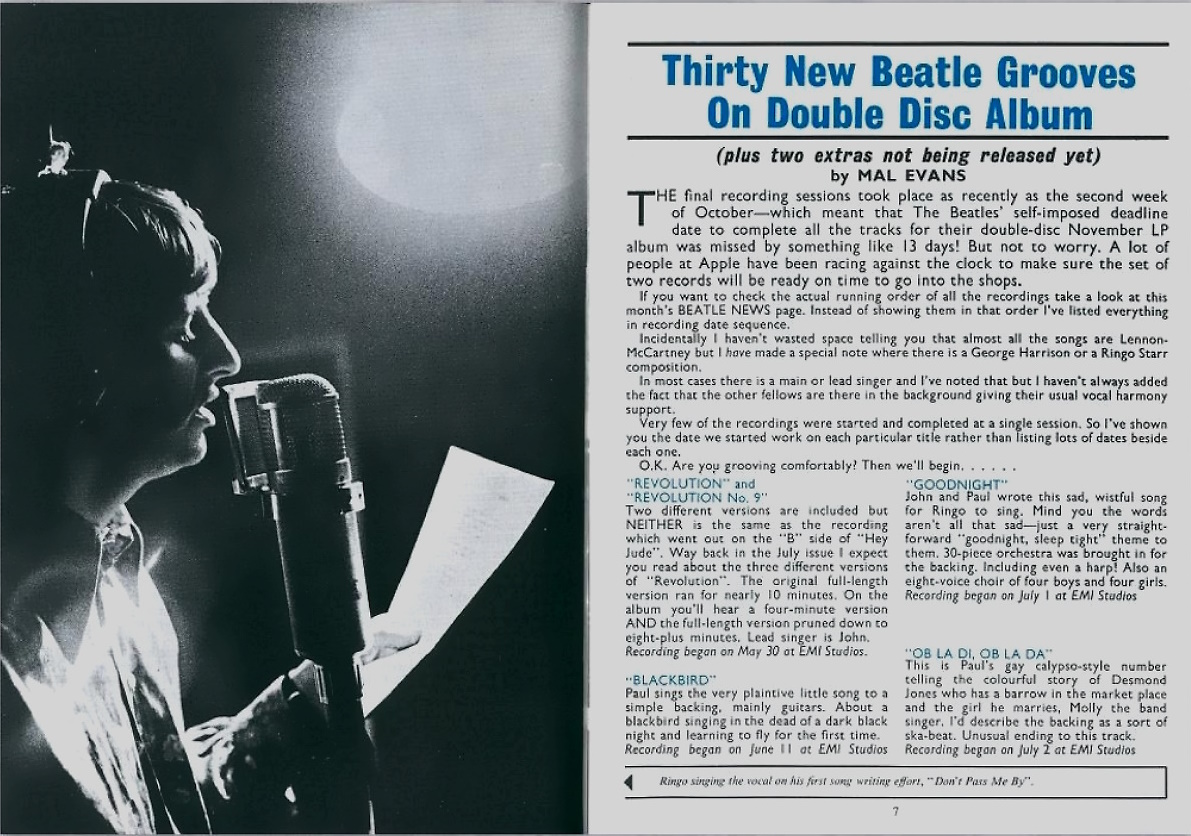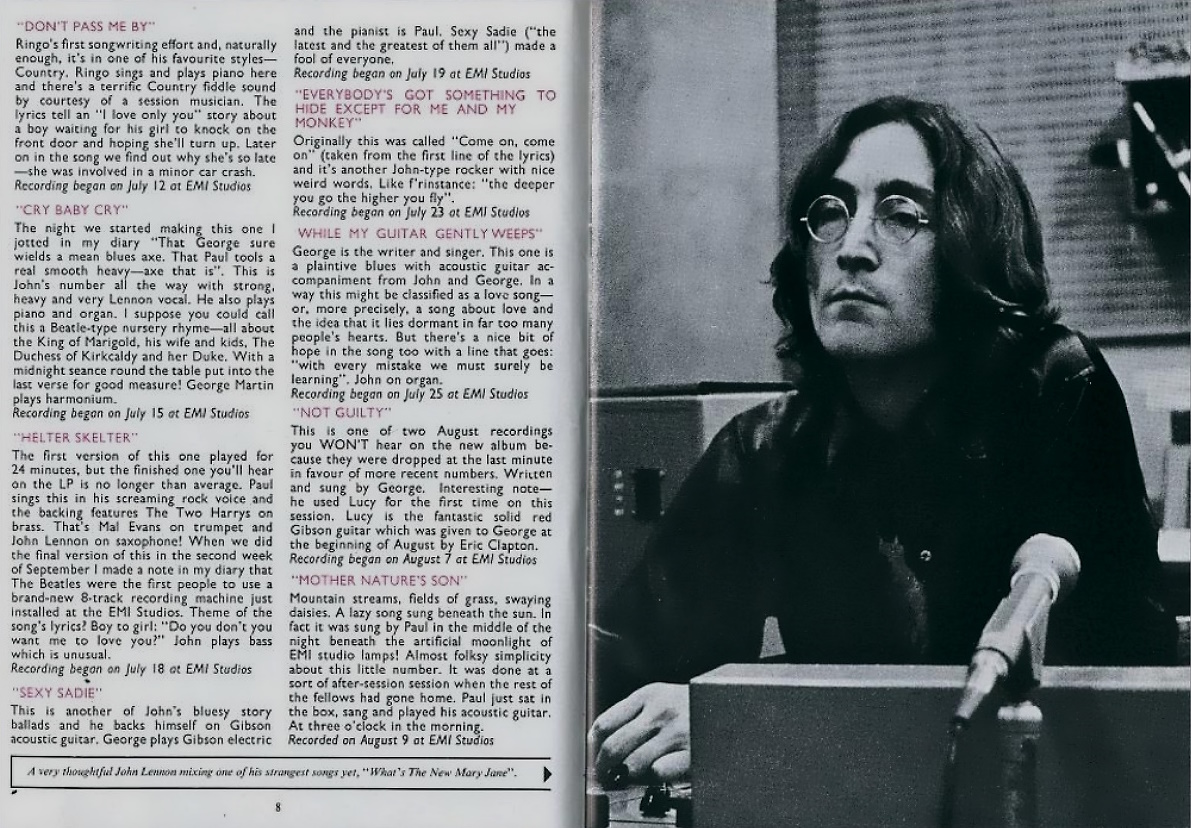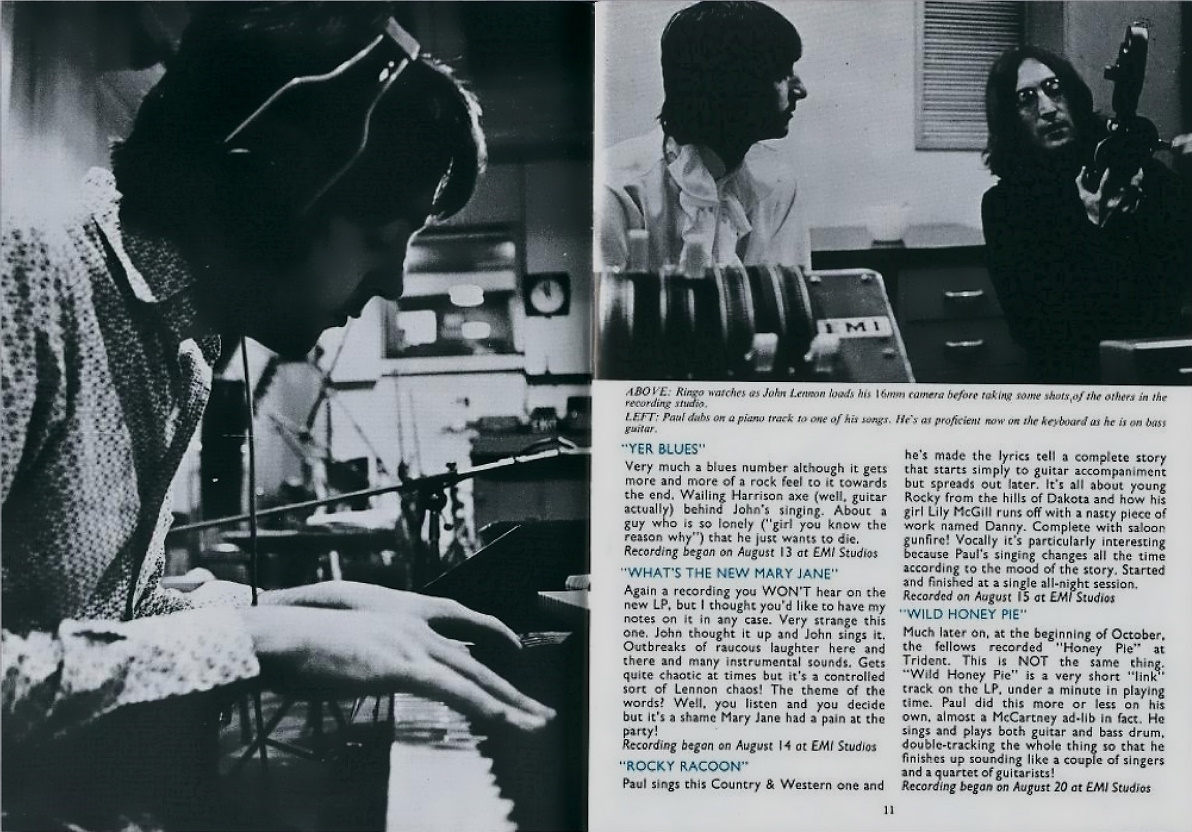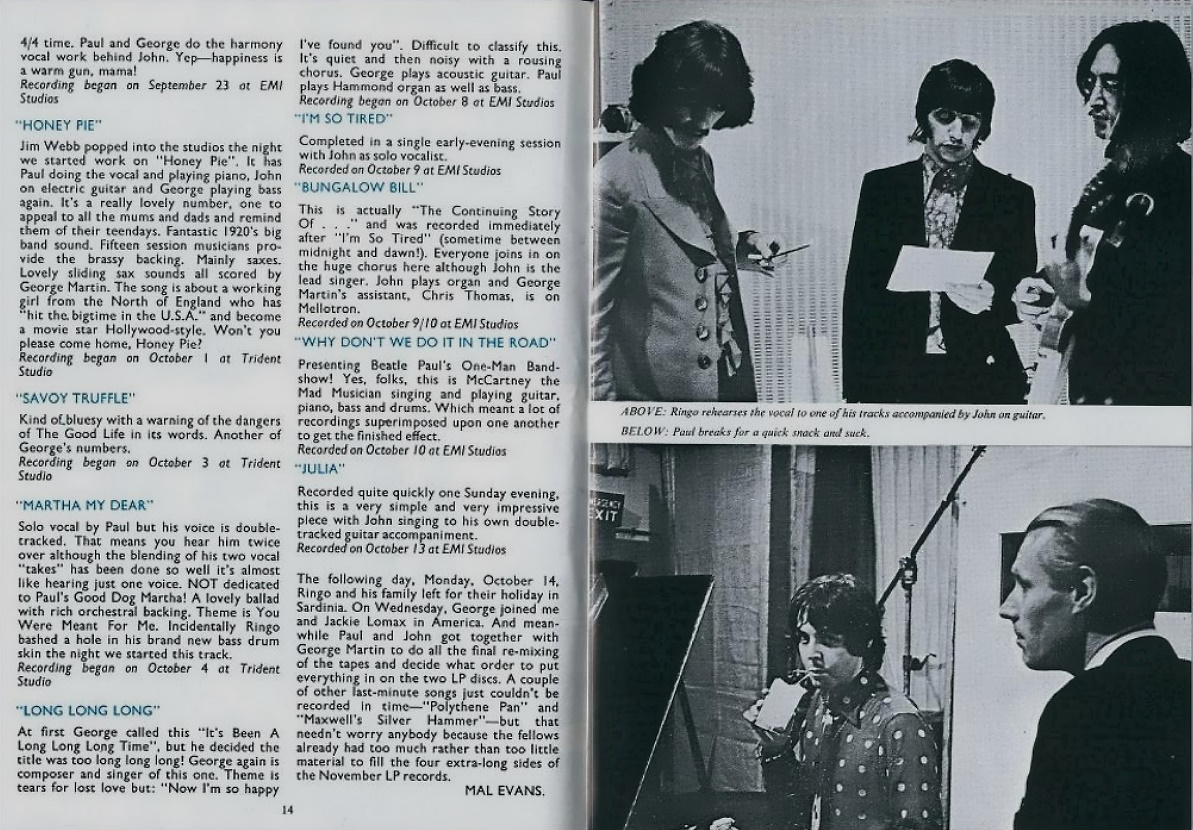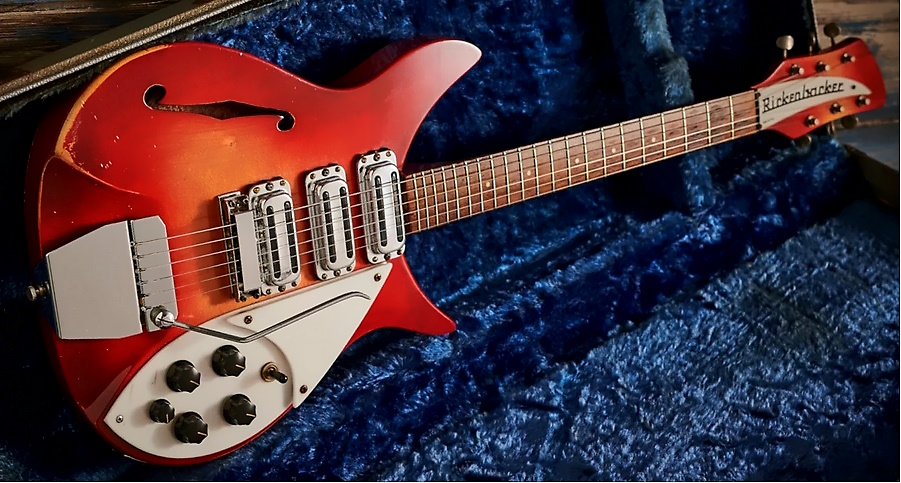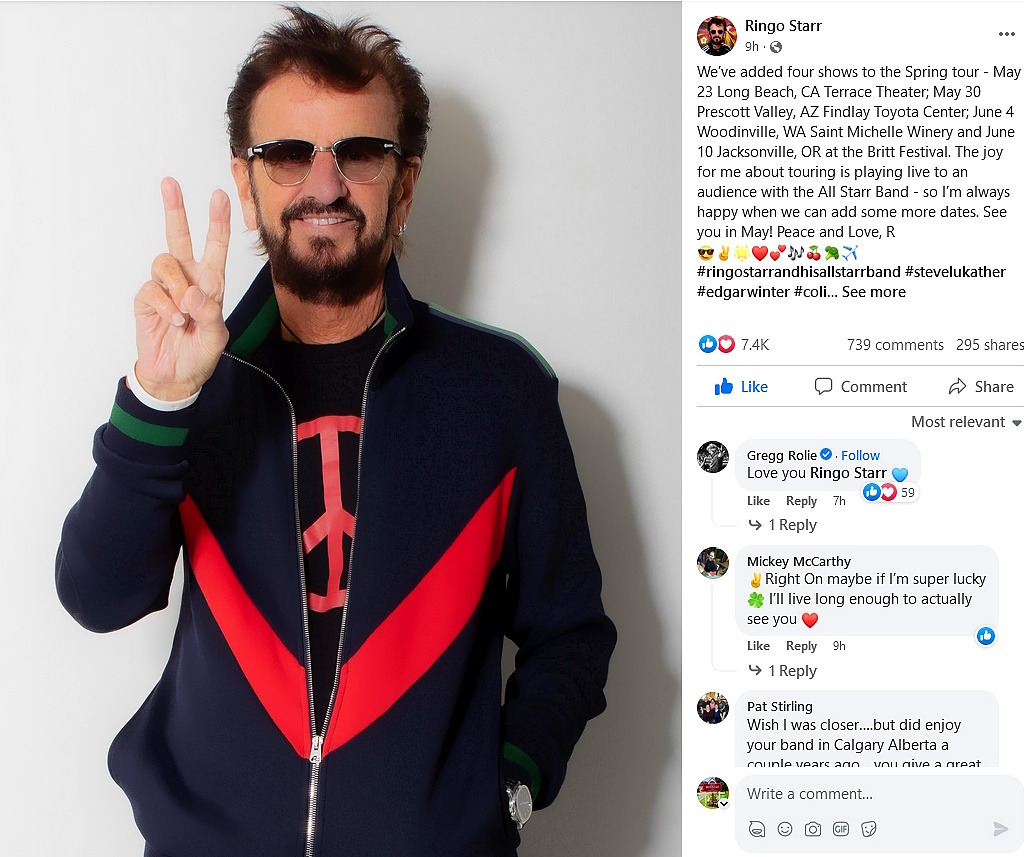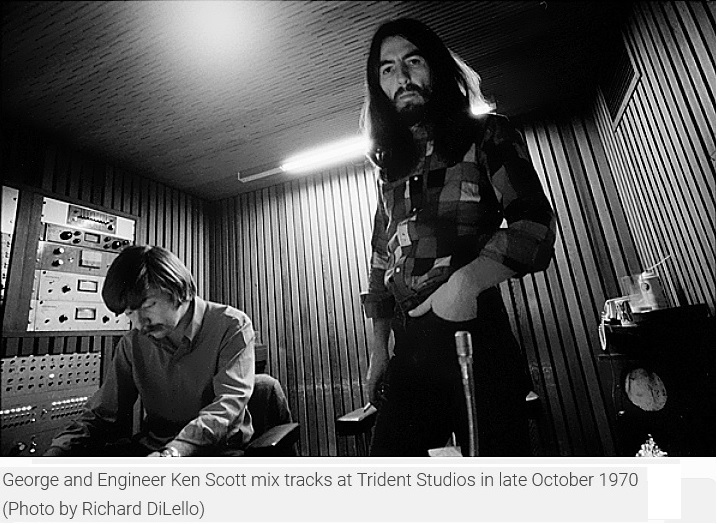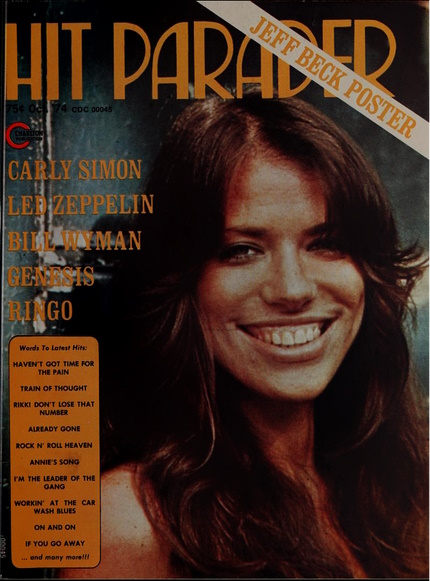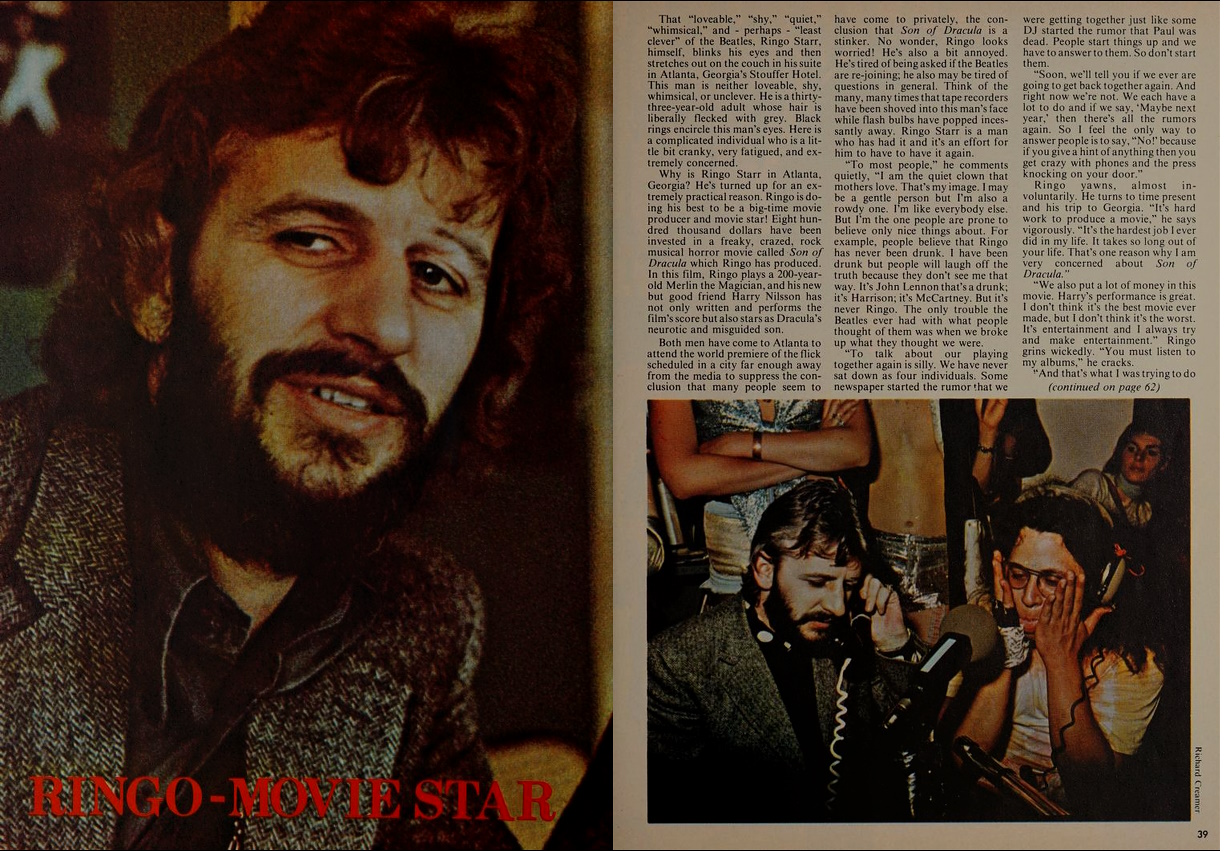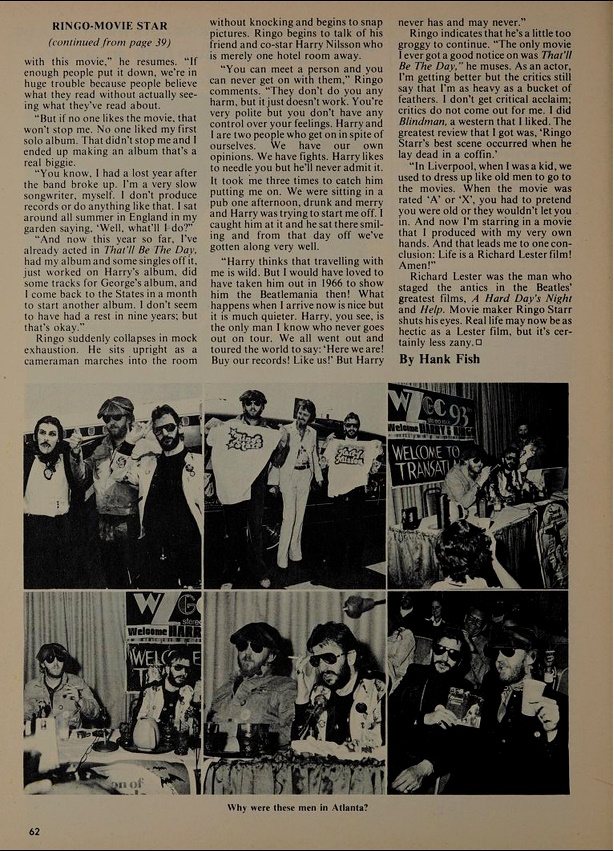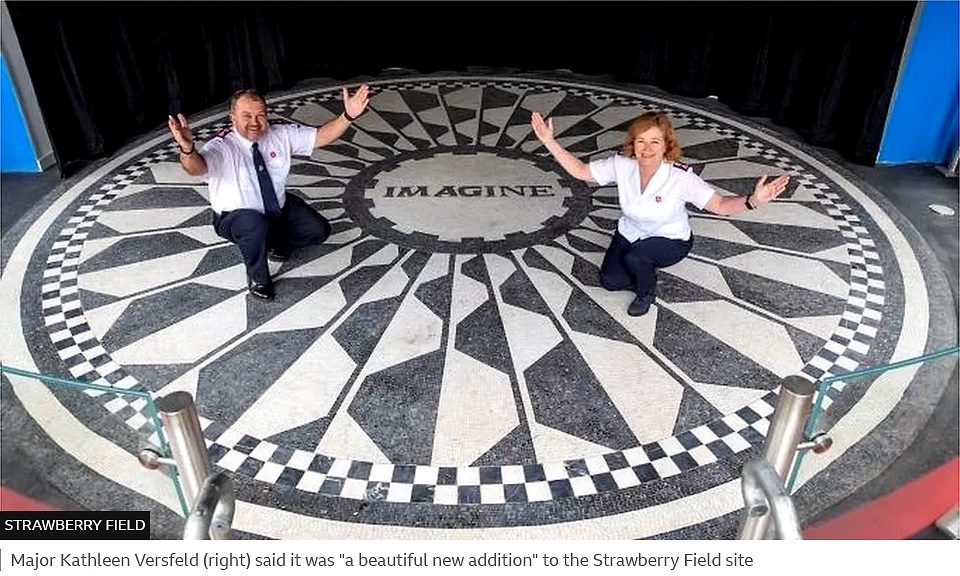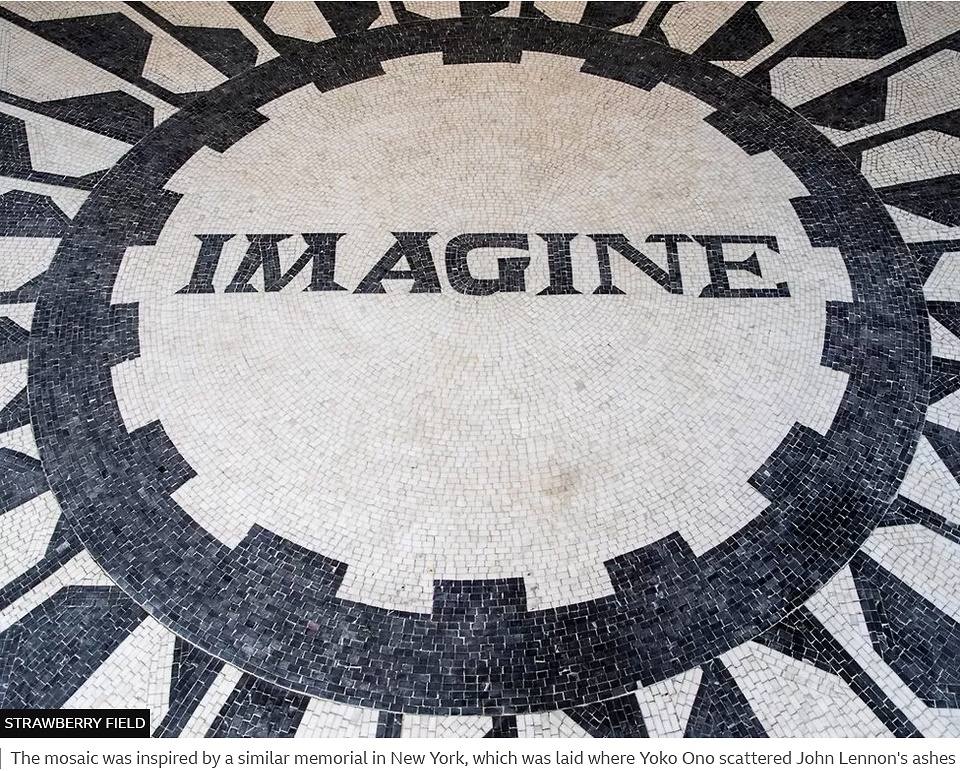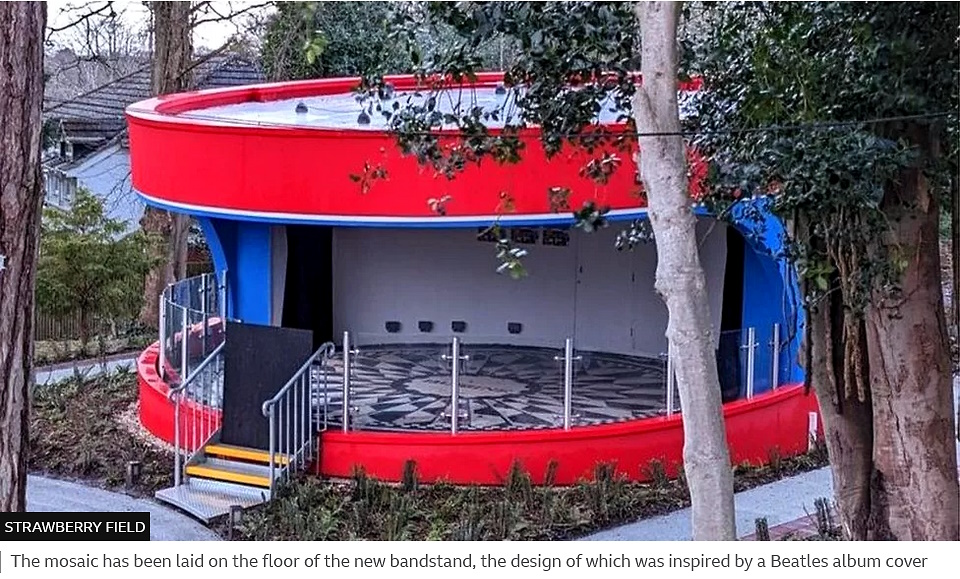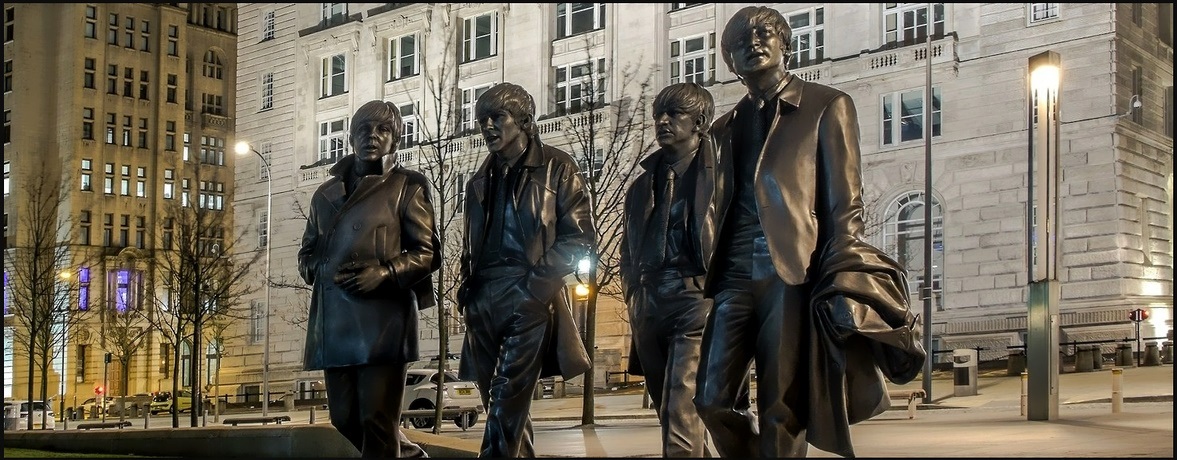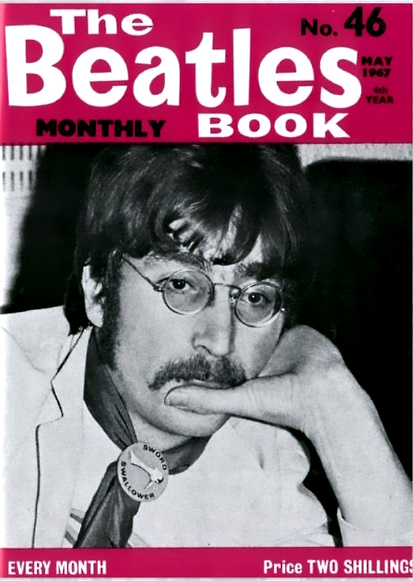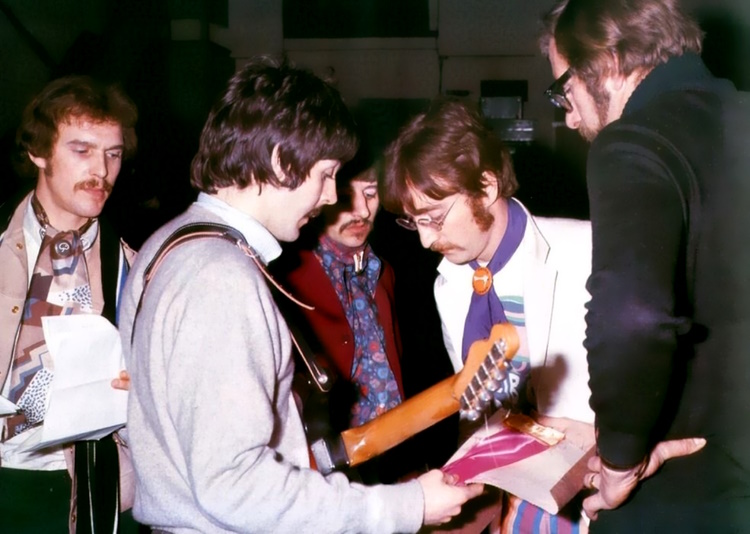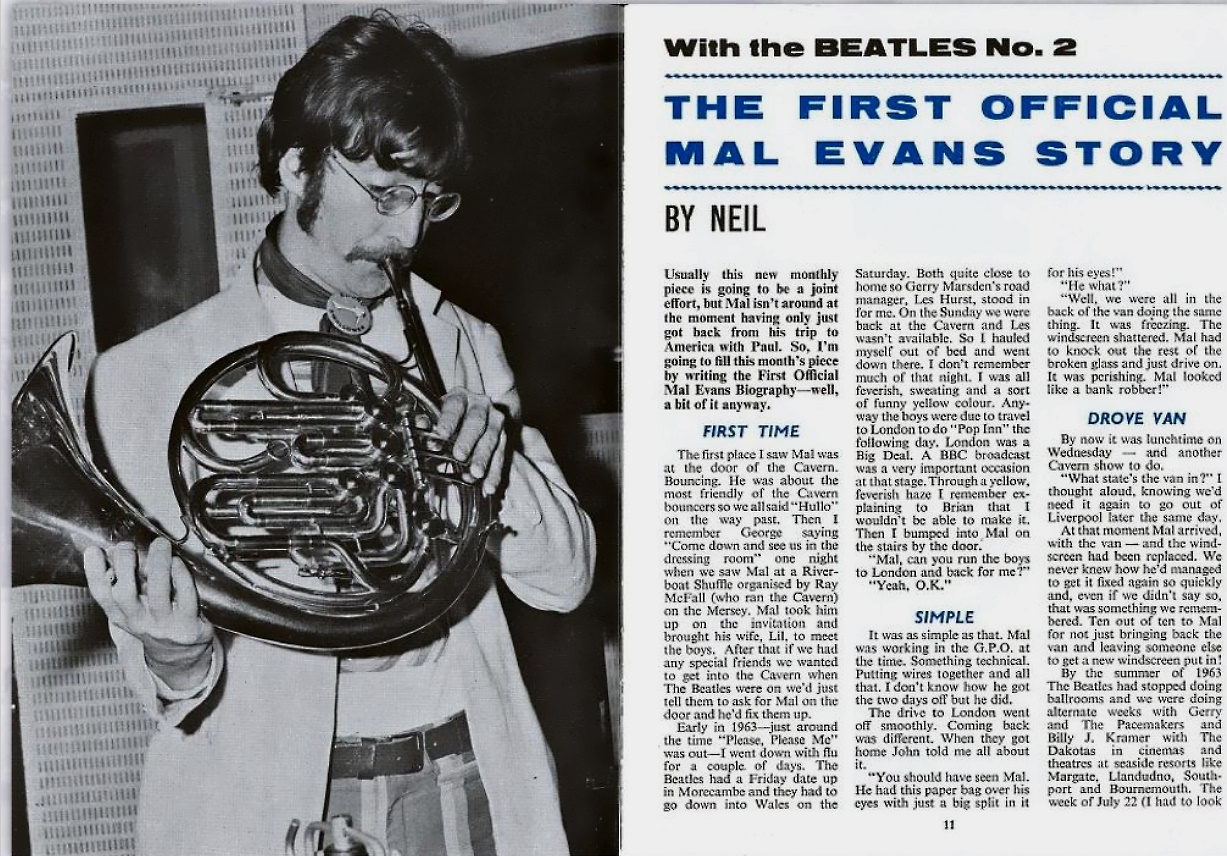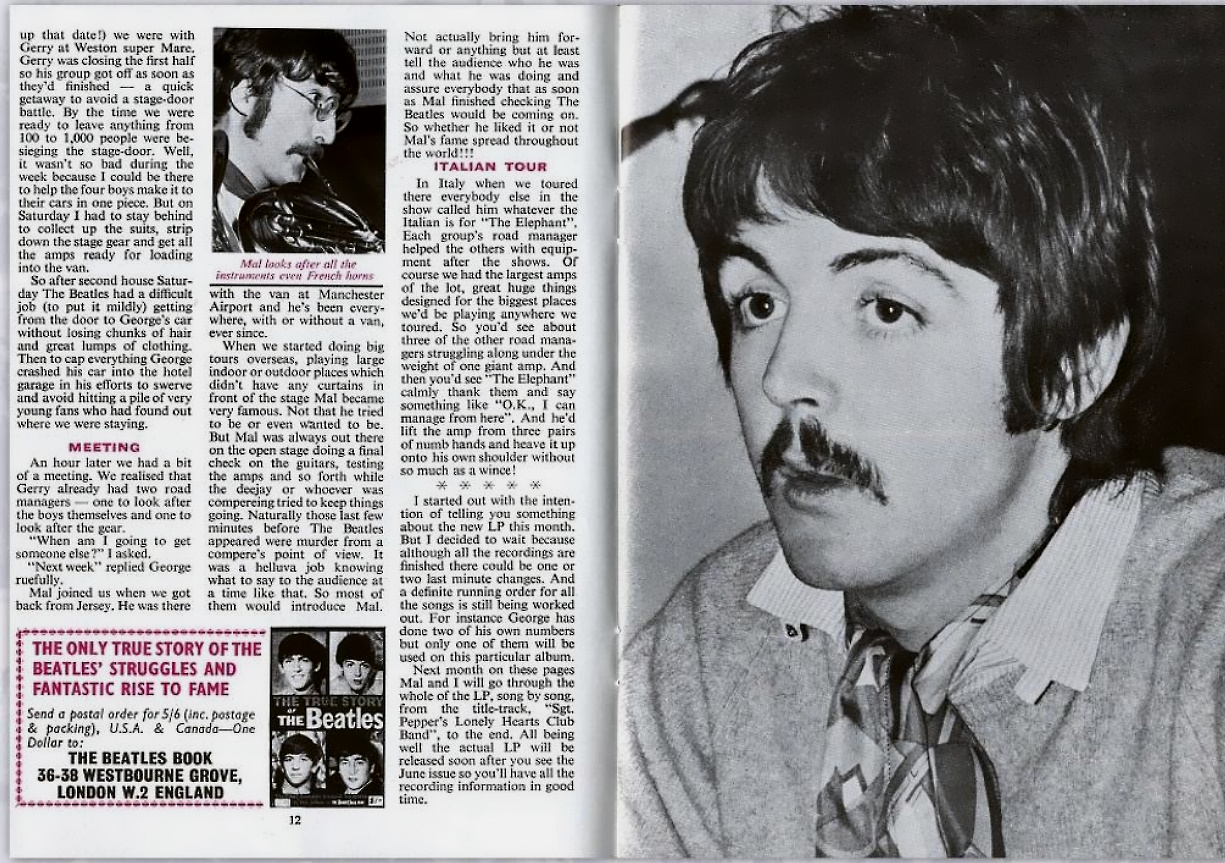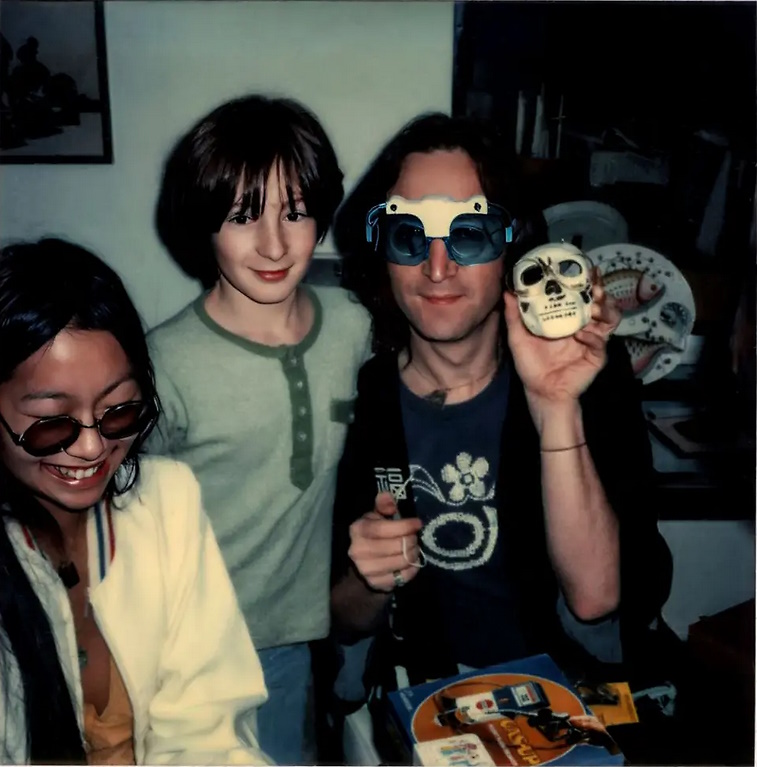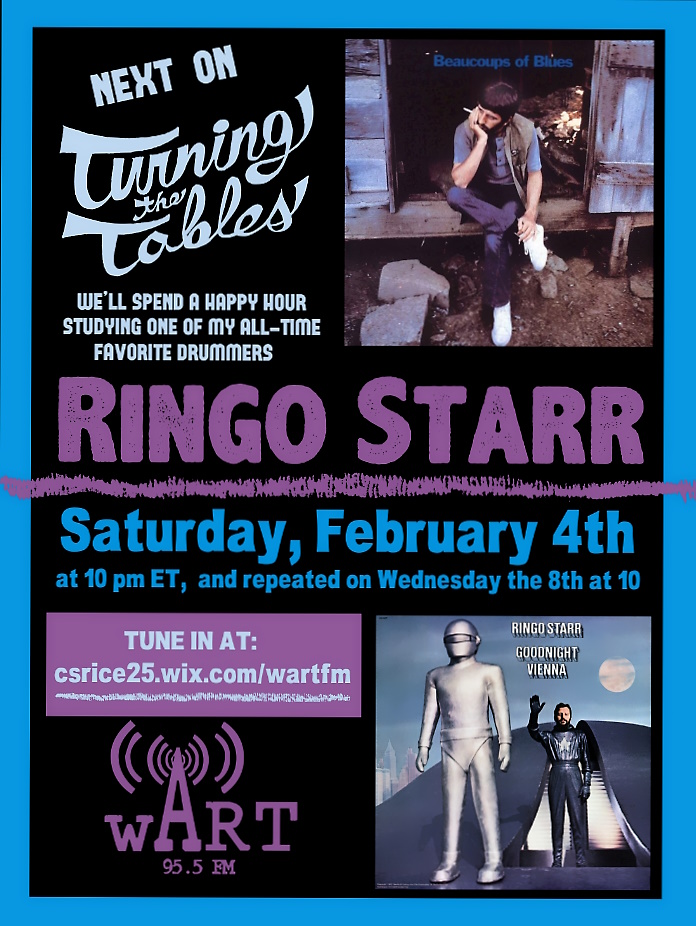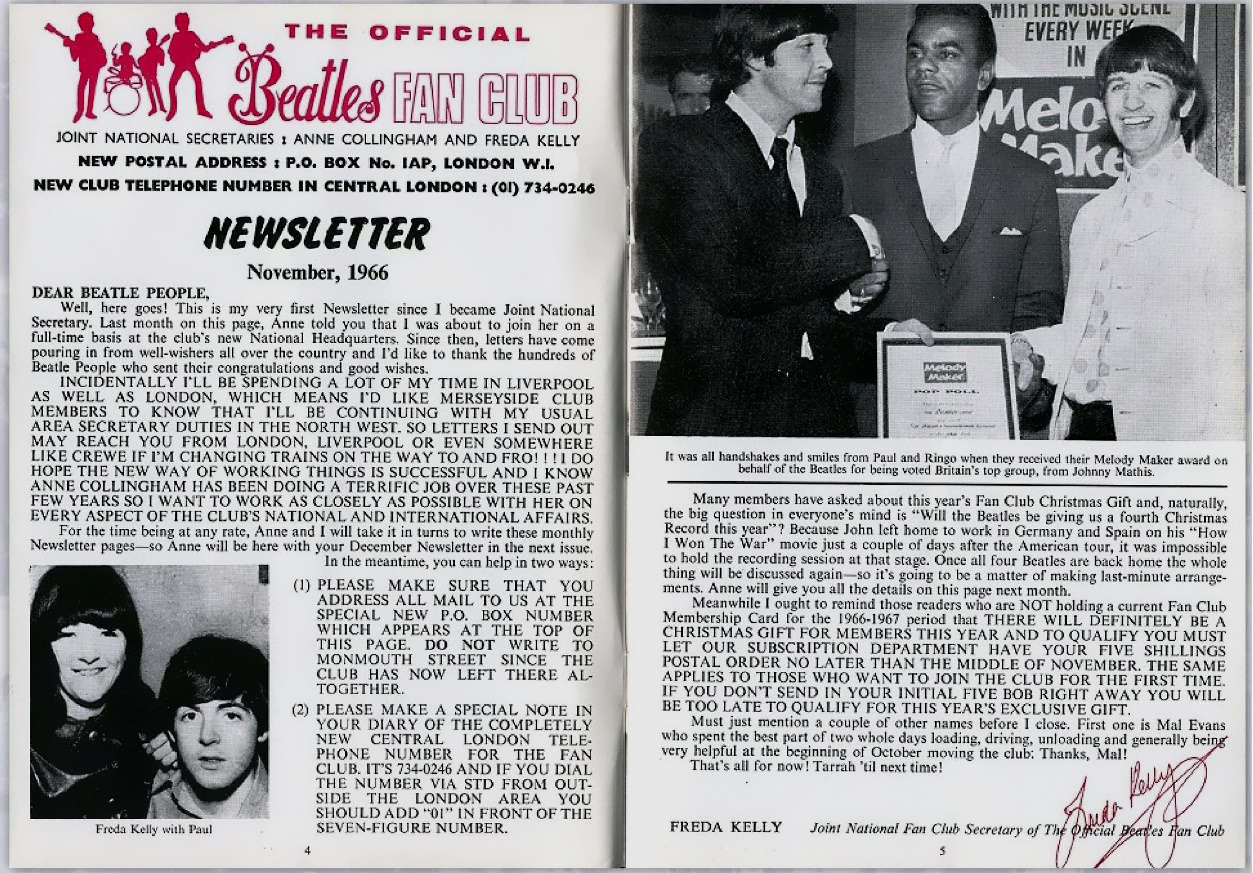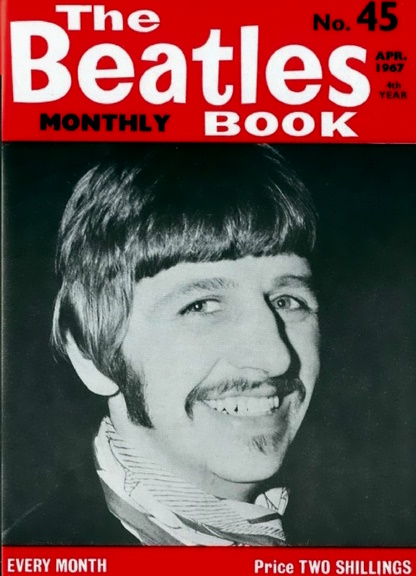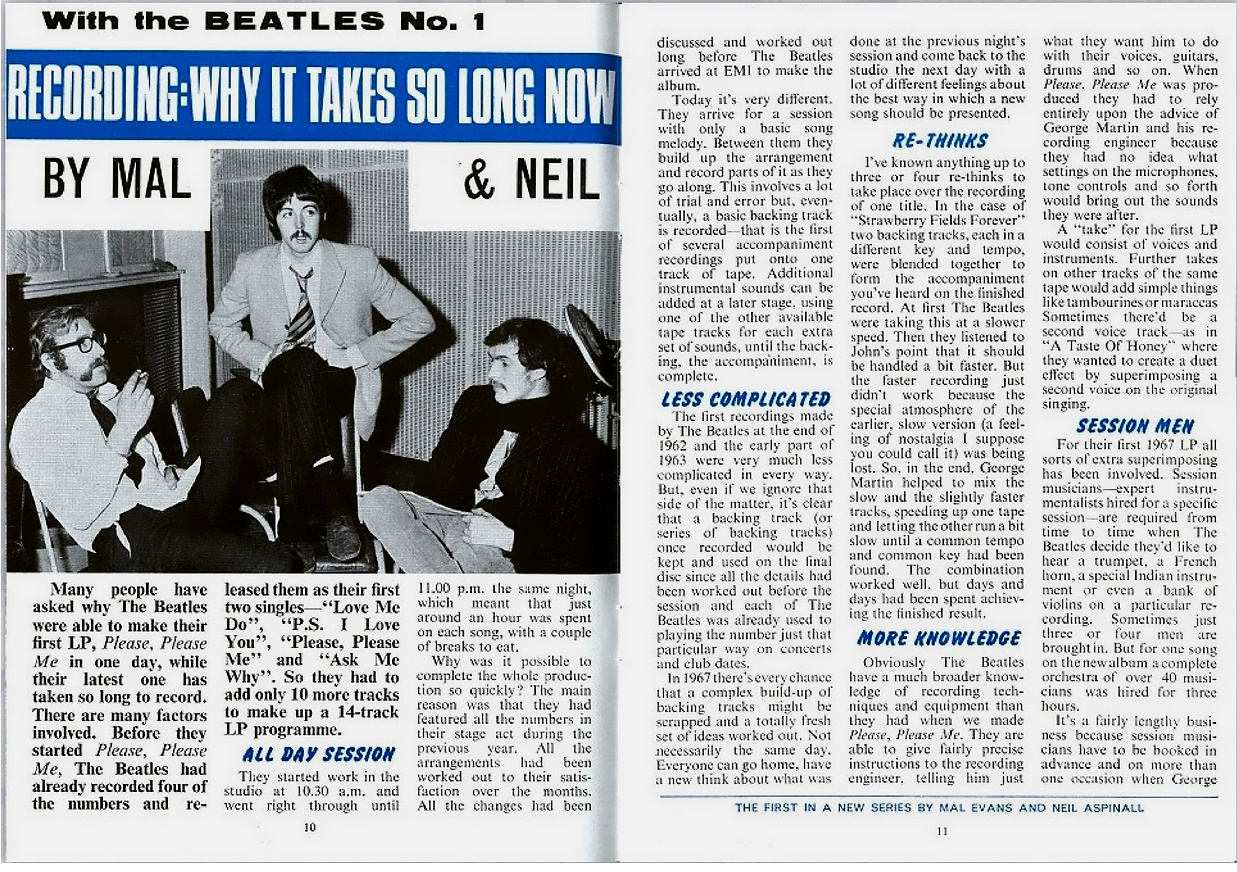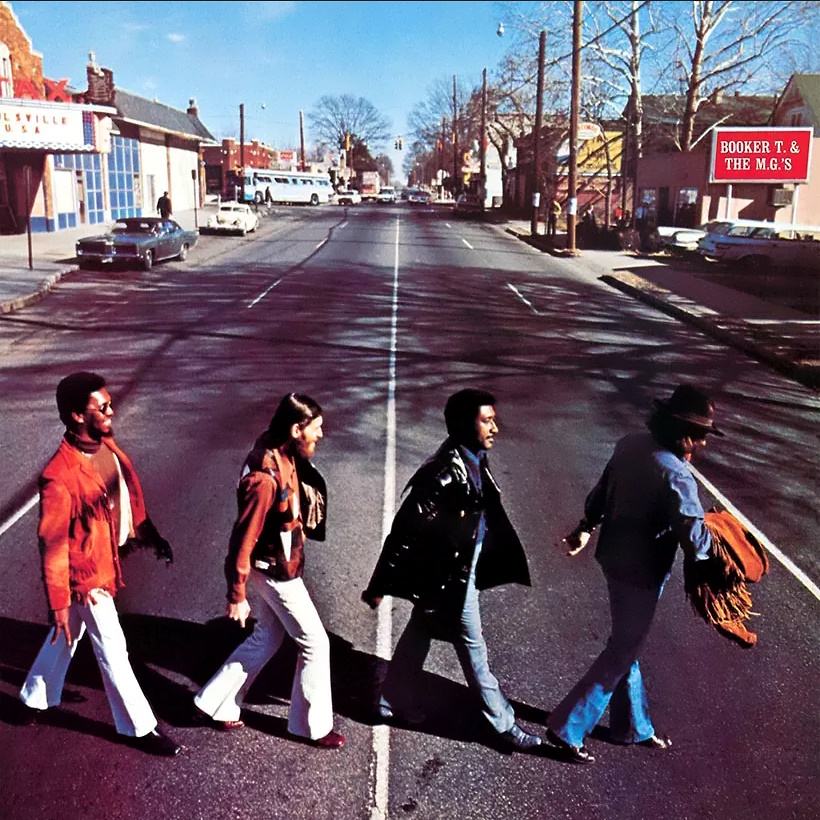|
| ||||||||||||||||||||||||||||||||||||||||||||||||||||||||||||||||||||||||||||||||||||||||||||||||||||||||||||||||||||||||||||||||||||||||||||||||||||||||||||||||||||||||||||||||||||||||||||||
|
The News Today
April 30, 2023 EXCLUSIVE: Paul McCartney's home dubbed 'Birthplace of the Beatles' is explored in new BBC show The family’s post-war council house was where Paul, his songwriting partner John Lennon and bandmates George Harrison and Ringo Starr would create the sound that changed music for ever by Sanjeeta Bains, Features Writer for the Mirror
When Mike McCartney first saw his brother Paul on TV, he could only think of one thing: Where had his thick accent come from?
“I could not believe how Scouse our kid sounded,” Mike, 79, says. “I said to him after, ‘What was that all about?’ “He said he was putting it on so they would all sound more authentically Scouse. But only Ringo really had a strong accent, and George. We never did… Mum wouldn’t allow it.”
Matriarch Mary McCartney was very particular, setting high standards for herself, her children and her home.
The family’s post-war council house – 20 Forthlin Road in Allerton, south Liverpool – would become the birthplace of the Beatles.
It was where Paul, his songwriting partner John Lennon and bandmates George Harrison and Ringo Starr would create the sound that changed music for ever. It was the only home on the street with a phone – Mary was a midwife and always on call. It was also the only house in the area with a living room that had mismatched wallpaper, but wallpaper of the highest quality.
And it was here that Paul and John wrote I Saw Her Standing There in November 1962, a month after Love Me Do was released.
The story of the house is explored in new six-part BBC series, Hidden Treasures of the National Trust. The programme follows the experts and conservators at work across Britain, as they breathe new life into fragile marvels and battle to keep the past alive. The distinctive wallpaper around its fireplace at Forthlin Road quite literally provided the backdrop to one of the most significant cultural moments in history.
Months before – and after – that first TV appearance, the Beatles turned the room into a makeshift music studio and often rehearsed there, fuelled by cups of tea and bacon butties.
And Paul’s younger brother Mike and his camera were there to capture it all.
Mike says: “My mum wanted the best of what we could afford – but we could only afford end-of-roll paper so we had three different lots of paper in our living room. I never saw it at anyone else’s house, just ours.”
The wallpaper was from heritage brand Sanderson, but the National Trust – which bought the house in 1995 – could only track down two of the three designs Mary had.
“For years, I’ve been saying, ‘You’ve got to sort the wallpaper out!’” Mike says. “It’s intrinsic to our memories of 20 Forthlin Road and our mum.”
Mary died of breast cancer at the age of 47 in 1956, a year after the family moved to Forthlin Road.
Paul and Mike continued to live there with their father Jim until 1964, when the Beatles became so huge fans camped out on their doorstep all day.
But for those nine years, the house was filled with music – with Paul writing songs inspired by the cherished memories of his loving mum.
Dad Jim was also a musician. Mike says: “My dad loved music and was in a swing band, Jim Mac’s Jazz Band, but he needed to make money so he gave it up for factory work.”
Jim wanted his boys to have the chance to hone their own musical talents and bought Paul a guitar and Mike a banjo – but no one could have prepared him for what came next.
The success of The Beatles centres on the partnership of Lennon and McCartney.
Mike says: “My first memory is of John walking down our street in drainpipe jeans and sporting sideburns. He’d walk over Strawberry Fields from his house to rehearsals at our house. He was the eldest of us all. Very cool and very quiet. John would never say two words if one would do.
“Paul and John were destined to find each other and work together. They were successful because they were so different, so they complemented each other like two sides of the same coin.
"For example, I remember when they came up with the Beatles' song Getting Better - Paul came up with the lyrics: "it's getting better and getting better all the time”, and then John shot back ", it can't get much worse."That's how it was. "
George also went to the same school as Paul and Mike.
“We met George on the bus on the way to school,” Mike recalls. “Then Paul met John and started writing with him and brought George in to the band. I was the drummer, then I broke my arm and Pete Best got the job, and then Ringo.”
Mike can’t recall Ringo ever going to the house and there are no pictures of him at Forthlin Road. He joined the band in 1962 after Best was kicked out.
The younger McCartney brother also went on to find success in a band called The Scaffold, then later as Mike McGear. The Scaffold are best known for their 1968 Christmas No.1, Lily the Pink, and also the hit Thank You Very Much from the same year, which was later used in a Roses chocolate advert.
Performing on Top of the Pops, Mike met The Rolling Stones, The Kinks, Gerry and the Pacemakers and Jimi Hendrix. The latter even played guitar on one of Mike’s singles, So Much In Love, which also featured his brother.
Mike reveals: "I remember going into the De Lane Lea studios in London, and he was sat on the floor, and he’d just done his guitar solo. I sat on the floor with him, and he asked how was that. I said it was really good, but you came in the wrong bit and he said, 'I don't know the song - tell me where to come, so I did. I sat on the floor and tapped Jimi Hendrix’s knee!
"I expected a big entourage of people with him, quite outrageous, but it was nothing of the sort. He came to the studio on his own with just his guitar - he was a gentleman - the loveliest, nicest, quietest man.”
Mike went on to marry Rowena Horne in 1982 and Paul, who attended the wedding with his then-wife Linda, was his best man. The couple have three boys, Josh, Max and Sonny.
Mike says he is still regularly in touch with Paul and they “speak on the phone every couple of days”.
He also told how the last time they were together was “at a big posh house somewhere in London” for his niece Stella’s birthday.
But Mike’s memories of 20 Forthlin Road are bittersweet.
“We only had one year of mum in that house, then she died of cancer,” he says. “But the music she inspired Paul to write happened between those four walls and will stay with us.”
National Trust cultural heritage curator Katie Taylor was tasked with recreating the wallpaper in the parlour at 20 Forthlin Road - just as Mike remembered it.
Katie says “ It was thanks to Mike’s photos we knew what exactly the inside of the house looked like but the recreation of this one significant feature remained sadly elusive. The National Trust had been trying to find this wallpaper for twenty years.
"But I'm thrilled we have now restored the living room as it was when Mike and Paul lived there. It's important to make sure all our National Trust properties are as authentic as possible.
"It may be a council house and less grander than many National Trust properties but its significance cannot be overstated. What happened shaped not just Liverpool's history not just British history but global history. "
The story of 20 Forthlin Road is just one of the many fascinating stories of National Trust properties in the new BBC series.
Hidden Treasures of the National Trust, starts May 12, BBC Twon at 9 pm. Dark Horse Records and the estate of George Harrison reissues "Stairsteps - 2nd Resurrection"
 April 29, 2023 McCartney Aftermath - This Is Why The Beatles Left Paul by Derek Taylor, Beatles Press Officer
Happy Birthday Klaus Voormann!
 April 28, 2023 Beatlemania still reigns: On July 17, 1965 the "Beatles VI" is in the #1 spot on Billboard while "Beatles '65" is at #23 spot and "The Early Beatles" is at #58.
Sir Paul McCartney's stage designs go on show by Chris Long, PA Media via BBC News
A series of sketched stage designs which Sir Paul McCartney created for Beatles manager Brian Epstein's theatre have gone on show.
The drawings, which the then-Beatle created in 1966, were designs for backdrops at London's Saville Theatre, which Epstein had leased.
The previously unseen sketches were given to Liverpool Beatles Museum by an anonymous donor, who bought them for £25,000 at auction.
Museum owner Roag Best said they were "a total one-off".
Mr Best said Sir Paul was invited to come up with the designs in 1966 by Epstein, who had put on concerts by artists including the Bee Gees, The Jimi Hendrix Experience and Chuck Berry at the theatre.
One of his designs, featuring stars and stripes, was used as the backdrop for Motown legends The Four Tops.
The designs were annotated, including one with a warning of "slow moving machinery", one with the note "this way up" alongside a sketch of an upside-down house and another reading: "This piece of the set falls on the stage, revealing red curtains through which performers emerge, smiling."
Another design showed 12 mirrors for "the audience to glimpse themselves in", while a further sketch with glasses and moustaches on the backdrop has the note: "Plain comedy set. Comedian enters through mouth, not smiling, crawling."
Mr Best said the sketches had "never been seen in public before".
"We were contacted by the owner... who said he’d had the pleasure of these designs on his wall for two years and wanted other people to be able to share in it," he said.
"He is a collector and had spotted this at auction with a reserve of £3,000, but ended up paying £25,000.
"This is a total one-off and I think Beatles fans and art connoisseurs will love to see it."
Liverpool artist Anthony Brown, who unveiled the designs at the museum, said he had seen Sir Paul’s work before and it made "absolute perfect sense that he would do something like that".
"I think the designs are good; some are more complicated than others," he said.
"I think the most perfect one is the one they used for the backdrop for the Four Tops."  April 27, 2023 Flashback to the film production of "How I Won The War" starring John Lennon
 April 26, 2023 Paul McCartney's Wings album "Red Rose Speedway" is all the richer at 50 with a loving remaster The 50th anniversary edition of the album does justice to its emotional depth for a new generation of vinyl lovers by Kenneth Womack for Salon
This past March, the Recording Industry Association of America (RIAA) announced that for the first time since 1987, vinyl outsold compact disc releases. In the U.S., some 41 million vinyl records were sold last year in comparison to 33 million CDs. It's an incredible resurgence, fueled largely by an increase in younger demographics having discovered and fallen in love with the vinyl experience.
Released this month in celebration of Record Store Day, Paul McCartney and Wings' "Red Rose Speedway" offers a particular case in point. Recut at half-speed by Miles Showell at Abbey Road Studios, the album showcases why audiophiles adore vinyl so much. Thanks to numerous technological advances, this new 50th anniversary edition of "Red Rose Speedway" offers a vast improvement over previous editions, which felt muted and constrained —particularly in its compact-disc format.
Originally released on April 30, 1973, "Red Rose Speedway" marked a key moment in Wings' fledgling career. The band's first album "Wild Life" had been lackluster by McCartney's standards, exerting pressure on the group to deliver a bona fide hit. For Wings, the light at the end of the tunnel began to illuminate with "Hi, Hi, Hi," which landed a hard-rocking autumn 1972 hit single. And things were about to get even better. Much better.
McCartney had originally envisioned "Red Rose Speedway" to be a double-album that would highlight the band's breadth, including vocals from Denny Laine and wife Linda. McCartney had amassed considerable material in the years since completing sessions associated with "Ram" (1971). But when it came to putting out a double-album, EMI wasn't having it. Subsequent events would prove that the label was right, setting McCartney and Wings up for a renaissance of immense proportions with the streamlined, single-record version of "Red Rose Speedway."
The new half-speed remaster underscores the LP's crisp dynamic range, overall warmth, and instrumental power and finesse. Take "Little Lamb Dragonfly," the epic cut that closes the album's first side. The song found its genesis at the McCartneys' Scottish farm. "There was one lamb we were trying to save," Paul recalled. "The young ones get out into the weather and collapse from exposure; you find them and bring them in. We stayed up all night and had him in front of the stove, but it was too late, and he just died. So I had the happy job of clearing it up. When they go dead, they kind of go like a stuffed toy . . . these little lambs. It was very early in the morning, and no one was up, and I had my guitar there, and I couldn't really say much to this lamb. But I started, 'I have no answer for you little lamb / I can help you out / but I cannot help you in.' And it came from there. Just not being able to do anything about it was the idea of that song" (quoted from Allan Kozinn and Adrian Sinclair's "The McCartney Legacy").
The resulting song was a composition of breathtaking emotional depth. In Miles' hands, the song enjoys an even richer sonic range. The same could be said for "My Love," the chart-topping single that would pilot "Red Rose Speedway's" course. The wistful romantic ballad was punctuated by a heartfelt guitar solo. McCartney had been ready to record it himself when Henry McCullough stepped up with an idea of his own. "He played the solo on 'My Love,' which came right out of the blue," McCartney recalled in a 2010 interview. For McCullough, the "My Love" solo was "a stroke of luck, a gift from God really, and you get that in music."
Soaring on the wings of the "My Love" single, "Red Rose Speedway" scored a No. 1 hit. It's difficult to imagine a higher-priced double-album accomplishing the same feat. That summer, the non-album single "Live and Let Die" also made its way to the upper echelons of the American charts. In Rolling Stone, Lenny Kaye wrote, "I find 'Red Rose Speedway' to be the most overall heartening product McCartney has given us since the demise of the Beatles. After much experimentation with how best to present himself, Paul has apparently begun a process of settling down, of working within a band framework that looks to remain stable for at least the next vehicular period."
As he concluded his review, Kaye couldn't help making a reference to "A Hard Day's Night": "As for the particulars of this latest album, suffice it to say that Paul's grandfather would've liked it. It is, after all, very clean." In its own way, the half-speed edition of "Red Rose Speedway" is not only very clean, but yields new sonic textures for a new generation of vinyl-loving listeners.
Ottawa Beatles Site footnote: Paul McCartney is interviewed about the album at his official website.  April 25, 2023 From Synthesiser to AI: A brief history of music’s love-hate relationship with technology by Tom Taylor for Far Out Magazine
Concluding: “What makes a great song great is not its close resemblance to a recognisable work. Writing a good song is not mimicry, or replication, or pastiche, it is the opposite. It is an act of self-murder that destroys all one has strived to produce in the past. It is those dangerous, heart-stopping departures that catapult the artist beyond the limits of what he or she recognises as their known self.” So, if history tells us anything, maybe an AI boycott might come shortly before it has its first hit. Ottawa Beatles Site Footnote to the above article - Syrinx were early pioneers of the Moog synthesier From Wikipedia: "Syrinx was a Canadian electronic music group active from 1970 to 1972. Propelled by the compositions of keyboardist John Mills-Cockell and backed by saxophonist Doug Pringle and percussionist Alan Wells, the group broke musical ground with their innovative use of the Moog synthesizer and their world music inspirations. Their song "Tillicum" received national attention as the theme music for the television series Here Come the Seventies."
 April 24, 2023 "We would write, record, and mix two or three songs a day": Youth on collaborating with Paul McCartney by Will Groves for Music Radar As CVs go, it's not a bad one. Youth, AKA, Martin Glover, can lay claim to production credits with The Orb, Crowded House and Pink Floyd, while his highly sought-after remixing services have benefited the like of U2, PM Dawn, INXS, James, Primal Scream and many, many more. Oh, and his bass-playing gigs include Kate Bush's seminal Hounds of Love album, Black Grape and, of course, the band which he co-founded and which saw him rise to prominence, Killing Joke. But perhaps his most notable collaboration was also, paradoxically - at least at the time - one of his lowest-profile gigs. The Fireman eventually produced three albums - 1993's Strawberries Oceans Ships Forest, Rushes in 1998 and 2008's Electric Arguments - the first of which was entirely uncredited to either Youth or his sideman on that debut, one James Paul McCartney.
For McCartney's part, it's arguable that his best work has been the product of collaboration, ideally with a partner able to challenge 'one of the greatest songwriters in the last 100 years'. There's Lennon, obviously, but McCartney has also profitably worked with songwriting and production partners from the starry likes of Stevie Wonder, Michael Jackson and Elvis Costello to less high-profile but perhaps more challenging collaborators like Nigel Godrich and, yes, Youth.
Happily then, as Youth laughs in a new interview with the excellent tape-op magazine, "I'm known as a challenging producer, or so my manager tells me. I get asked to work with artists who are difficult to work with and who get stuck in their ways. I'm quite happy to do that," though the resulting Fireman workflow sounds far from tense.
In 1974 Badfinger failed to block the release of their ASS album
 April 21, 2023 With AI now doing excellent voice algorithms, could AI overtake the Beatles musical canon?
 April 20, 2023 Giles Martin Talks Legacy of The Beatles: They ‘Were Less Successful When I Was Growing Up’ Martin's list of credits grow by the day, and he's a high-profile champion of spatial audio. by Lars Brandle for Billboard
Giles Martin is a chip off the old block, a real rarity in the behind-closed-doors world that is the studio profession. The multiple Grammy Award-winning British producer, composer and arranger learned his way around the desk, initially as a sidekick to his late father, Sir George Martin, one of most famous producers of them all.
Every career has its sliding doors moment. Martin, like many who make a career in music, had youthful dreams of playing in a rock band, and pursued rugby union (cracking reserve grade, just behind the sport’s elite league). When health problems hit his father, and threatened to end his career prematurely, the son stepped up.
George Martin, so-often called the “fifth Beatle” for his extensive work with the Fab Four, endured debilitating hearing loss later on, a product of long-term exposure to loud noise.
“I just learned it from him? You know, actually, I didn’t want to do what he did. I didn’t want to be a producer,” Giles tells Billboard. “I was a songwriter and I was in bands. He was incredibly discouraging of me doing that.”
When Martin was a teen, his father’s condition began affecting his work. “He didn’t want to tell anyone because he needed to carry on working. He wasn’t a very wealthy man, my dad. He was worried about not being able to work. So I’d be his ears on sessions with Ultravox or, you know, these ‘80s bands, and then moving on. And most people just thought it was a pain in the ass and didn’t realize what I was actually doing.”
The Martins made a great team. “I would know what notes he couldn’t hear anymore,” he explains. “I’d know when the notes were running out for him. I could read them. And I learned a lot.”
Hearing loss, sadly, comes with the turf. George’s ears were ruined by speakers cranked, over many years. “He used to say Jeff Beck and the White Album killed them,” Giles explains. “There’s no rock star that I know that hasn’t got some sort of bad hearing loss.”
When George Martin died in 2016, at the age of 90, he held the record as the producer with the most No. 1 songs on the Billboard Hot 100 chart, with 23.
Giles has continued to learn and create. His list of credits grows by the day, and includes classic Beatles special editions, from Revolver, to Sgt Pepper’s Lonely Hearts Club Band, Let It Be and others, all of which dropped with great fanfare in recent years, plus The Chemical Brothers’ latest cut “No Reason,” and catalog releases with INXS, The Rolling Stones and many more.
As the studio work mounts up, Giles has become a wanted man in the music industry. He’s been tapped by Universal Music Group to serve as head of audio & sound, based at Abbey Road Studios; as executive music director for INXS and Petrol Records; and as Sonos Sound Experience lead.
But it’s his work with the Beatles catalog that makes most of the noise, with fans at least. “The Beatles were less successful when I was growing up. Yeah, way less successful,” he recounts. The revival has had many chefs, from Oasis, to DSPs, and “suddenly, the Beatles became cool.”
Working on those historic recordings, “I generally don’t take for granted ever,” he admits. “But I have a sort of momentum with the fans and with the Beatles themselves where they kind of look forward to me doing stuff as opposed to dreading it. Yeah. So that helps.”
Martin, meanwhile, is championing spatial audio, a way of creating and mixing sound in 360 degrees around a listener. It’s the future, and it’s here.
Speaking from Sonos headquarters in Santa Barbara, CA, Martin has been closely involved in the development of the Era 300 (US$749), the audio specialist’s new in-the-house spatial audio speaker, part of a rollout that includes the Era 100 (US$399), an upgrade of the best-selling Sonos One.
“I’m so excited about that speaker not in a sort of marketing PR way,” he says. “I just really really like what it does to music. I think we made something here that makes sense.” The product completes the experience that begins with those works mixed in the studio, “there is an openness to it. There’s an immersion to it. It’s really exciting,” he says.
Long days, and even longer nights in the studio aren’t for everyone. “My obvious avenue to this was so privileged and accessible because my dad lost his hearing, and I had to listen for him,” he notes. The entry level for a studio career typically begins with “an audio engineering place, but argue and challenge and go to lots of gigs or go and find artists. Go and find singers and be proactive, and make good music. And then on top of that, is the key thing that I learned, which completely changed my career around more everything else, is that you have to be fully accountable for everything you do. No one gives a shit about the process. They want the result the end of it.” That end result must be nothing short of outstanding. “That’s what I’d say to any kid now — there’s no excuse.” From The Beatles Monthly Book, July 1968...
 April 19, 2023 Paul McCartney Earns His First Hit On Billboard’s Dance Charts by Hugh McIntyre for Forbes Paul McCartney is back on the Billboard charts this week with a new hit that helps him accomplish something he’s never done before–which is hard to believe is still possible at this point for someone so successful.
The former Beatle debuts on two of Billboard’s dance charts with a new single titled “Say Say Say.” This is a remarkable achievement for the superstar, who has never before appeared on either of the two charts mentioned below during his illustrious six-decade-long career.
“Say Say Say” is an updated version of the song McCartney originally released with Michael Jackson in 1983. This time around, McCartney and Jackson are both credited, along with producer Kygo, who created the accompanying music for the original vocals. The new version is a fast-paced dance number that has clearly resonated with fans and listeners and introduced the cut to a new generation.
The new version of “Say Say Say” opens at No. 16 on the Hot Dance/Electronic Songs chart, which ranks the most popular tracks in the U.S. that fall under those two genres. The list takes into account streams, sales, and radio play. McCartney earns the second-highest start of the frame on the tally, behind only Bebe Rexha’s “Call on Me.”
The same song also opens on the Dance/Electronic Digital Song Sales chart, which looks specifically at pure purchases of tunes in these genres. “Say Say Say” debuts at No. 12 on this ranking, starting slightly higher than its debut on the Hot Dance/Electronic Songs chart. The trio still comes in second, however, as Ava Max’s song “Cold as Ice” earns the honor of the top debut of the week by opening at No. 5.
It is worth noting that while McCartney is new to both of these charts, he has made it to Billboard’s other two dance-focused rankings in the past. The legendary singer-songwriter has placed a trio of tunes on the Dance Club Songs chart, including the original version of “Say Say Say” back in the ‘80s. He has also landed on the Dance/Mix Show Airplay chart once, alongside Kanye West and Rihanna on “FourFiveSeconds” in 2015. The Beatles Most Overlooked Single - From Me To You | 60th Anniversary from Andrew of Parlogram Auctions The Beatles 3rd single was their first undisputed number 1 single in the UK and truly marked the beginning of Beatlemania. In this video we document that record's history from it being written on the tour bus, to the recording and mixing sessions and hear what song from Rubber Soul nearly replaced it. We look into the confusion surrounding the McCartney/Lennon credit and also cover the recent discoveries of live shows recorded a week before the single's release. We also find out why the song flopped in the U.S. and of course tell you what we think it the best sounding pressing. All that and more in this packed video!  April 18, 2023 Recording In India A Special Report by Mal Evans for The Beatles Monthly Book, March 1968
In 1974, Canadian folk singer Gordon Lightfoot's album "Sundown" goes #1 and nudges out Paul McCartney's album "Band On The Run" to the #2 position
 April 17, 2023 The Beatles Magical Mystery Tour by Mal Evans and Neil Aspinall
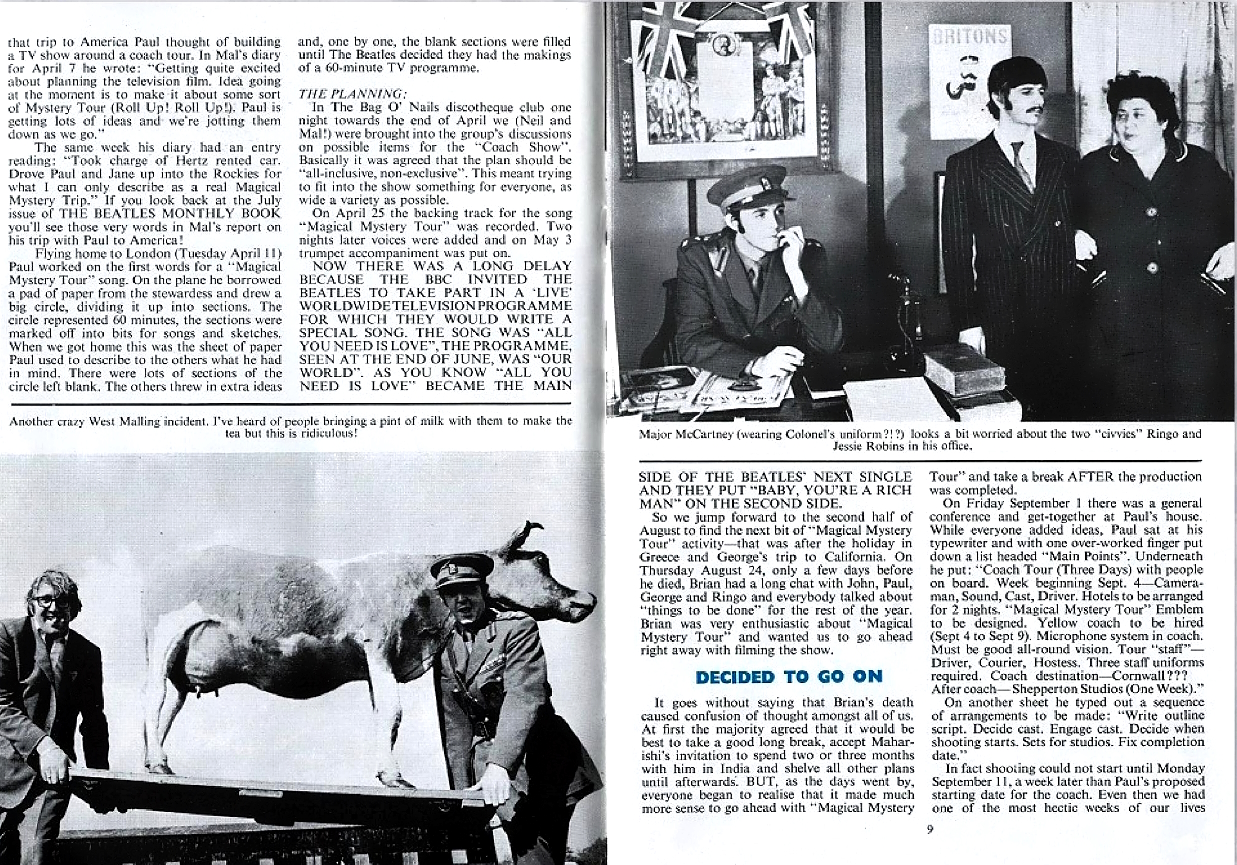
 April 16, 2023 Ringo Starr: ‘I Got Lucky When Mark Joined the Band’ Mark Rivera releases a new book called "Sideman In Pursuit of the Next Gig" by Tara Klein for Spin It’s 1975 Brooklyn and 22-year-old musician Mark Rivera is loading his car with a bass, a sax, an amp, a gig bag, and a suitcase to go play some gig he’s not too excited about, wearing a cheesy-ass monkey suit, no less. Mark was gigging seven nights a week. Whether it was bass, sax, guitar, or even vocals, Mark would do it, even if he wasn’t getting paid. He opens his suitcase and takes out a joint that was hiding in between a pair of socks and underwear. It was going to be a long drive, but little did he know he was about to embark on the high of his life–the musician’s life—one that would eventually have his name associated with such legends as John Lennon, Paul McCartney, Ringo Starr, Billy Joel, Foreigner, Elton John, Simon and Garfunkel, Hall and Oates, and Peter Gabriel.
It was clear from a young age that Mark had music in his blood. Always tapping and keeping rhythm. He even had a rhythm to the way he walked, purposely dragging one foot. He was obsessed with counting and numbers, especially the number five, which made learning and playing the sax come naturally to him. In his teens he was offered a rare opportunity to be a part of the Brooklyn Borough-Wide Band practice where he played sax every Saturday for two hours. Mark also played his sax in the hallways of his apartment where he grew up, allowing the reverb to take over his entire being.
But the true catalyst to Mark’s pursuit didn’t come until he saw Sonny Rollins live on stage. The young teen was awe-struck by Rollins, the crowd, the sidemen and from that point on Mark knew he was meant to be a musician. “I’d only been playing saxophone for a couple of years, but something inside was telling me that I wanted to be like this man—to stand on stage, surrounded by great players and in front of an amazing audience, and just put it out there,” Mark says.
Fast forward to today, in February Mark released his book Sideman: In Pursuit of the Next Gig chronicling his incredible life as a musician. To give you an idea of how far he’s come, Ringo Motherfuckin’ Starr wrote the forward.
We got a chance to chat with Mark about his incredible journey.
Most recent live show/tour:
Billy Joel’s Madison Square Garden Residency. Opening up Fallsview Casino. Getting ready for SOFI with Billy & Stevie Nicks.
What or who inspired you to pursue a life in music?
The Beatles, Jimi Hendrix, Traffic, The Young Rascals, The Four Tops.
Tell us about your training:
I started playing my Father’s Spanish guitar when I was about seven, then started playing saxophone at about eight. Studied throughout elementary and junior high school and attended the High School of Performing Arts (the Fame school). I left two weeks before graduation to play in a band (at 18) and my mom picked up my diploma. (That made her very happy.)
What were your goals and dreams as a kid?
To be in a band like the four guys on The Ed Sullivan Show (February 9th 1964)…
Your first “big break” in the business:
Playing with Sam & Dave in 1974, performing with John Lennon 1975 and then when I met Robert John “Mutt” Lange in 1975 (tycoon)…
We’d love to hear a story that exemplifies what life’s like on the road…
Foreigner 4 Tour 1981-82.
Thanks to Mutt Lange I was introduced to Mick Jones and Lou Gramm of Foreigner. This was one of the most amazing shows that I remember. Foreigner, Lover Boy, Scorpions, and Iron Maiden: A Day On The Green, July 18, 1982, Bobby Mayo and me sidemen… We flew into the venue in two separate helicopters. The pilots were VietNam Vets and Dennis Elliot asked the one that we were in to pull a “90 Degree” which means to kinda fly in sideways and he was happy to oblige.
What are the top three things that you can’t perform without?
Top Three Things I need EVERY NIGHT:
Where does your energy come from?
My energy comes from the spirit my parents instilled in me, as well as my faith. And without a doubt the thrill that our audiences give us every night.
Any writing/producing credits that make you feel especially proud?
I’m proud of the fact that Ringo played on a song that I co-wrote on my album Common Bond: “Money, Money, Money.”
Musicians you’d like to collab with?
I would Love to work with Stevie Windwood. He was and still is one of my biggest influences. I’d also LOVE to play/work with Dave Grohl and Tommy Shaw.
How can we hear/see your work?
I’m putting together a bunch of Q&As for my book Sideman: In Pursuit Of The Next Gig which will include a bunch of friends performing with me. Those dates will come up on my website
MarrRivera.com as well as my Facebook (Mark Rivera Music) and Instagram (@markriveramusic) pages.
Any advice for young musicians?
For any young (or older) musician all I can say is, follow your heart and listen closely to where it’s leading you. There’s no right or wrong…
Hey, as Mick said “It’s Only Rock n‘ Roll”.
What are some of the records you worked on, what was your favorite?
Foreigner 4, Billy Joel’s Innocent Man, and my favorite Peter Gabriel’s So.
Who’s a genius in the studio?
The two that come to mind that I’ve had the pleasure to have worked with are Phil Ramone and Robert John “Mutt” Lange. They both just seemed to know exactly what the song needed to be complete. I think that the truly great producers know when the song is “done.”
What’s the craziest experience you ever had in a recording session?
Back in 1981 I did a session with Benny Mardones at Right Track Studios. The song was “The Dreamer.” It was another one of those times that I was home just for three or four days and got the call. So i show up around 9:00 p.m. and we were just catching up (for a couple of hours) so it was looking like it was gonna be a LONG night…
Benny’s vocal was powerful and he kept trying to get me to challenge his intensity.
This went on for over an hour and he’d have me come into the control room with my horn and he’d scream some ideas into my ears and I’d play it and l’d lose the “vibe” once I walked back out to record. Finally, Benny came out and joined by the mic and said, “We gotta set up some speakers and have you play to them out here.” So we DID. Now I’m playing harder and he’s singing scats challenging me as we go. As it turns out, it’s probably my favorite solo… July 24, 1965 Cash Box promo for the Beatles new single "Help!" b/w "I'm Down"
A funny cartoon about the Rolling Stones!
60 Years Ago Today: The Beatles Meet The Rolling Stones!!! by Music News for VermilionCountyFirst.com (originally published with audio clips on April 13, 2023)
It was 60 years ago today (April 14th, 1963) that the Beatles and the Rolling Stones first met. The Beatles, who were new on the scene in London, had heard about the group through word of mouth, and were in the audience at the Stones' show in Richmond at the Crawdaddy Club at the Station Hotel. Shortly thereafter, George Harrison personally recommended that Decca Records — the same label that had passed on the Beatles — sign a deal with the still-unknown Stones. In 1988 when Mick Jagger inducted the Beatles into the Rock and Roll Hall of Fame, he recalled first laying eyes on the group while on stage, remembering, "We were playing a little club in Richmond and I saw right in front of me, there they were — THE FAB FOUR. The four-headed monster. They never went anywhere alone. And they had on the most beautiful long, black leather trench coats." Jagger joked that, "I thought to myself, 'If I have to learn to write songs to get one of those, I will.'"
The two bands, which were pegged as being rivals in the rock press, were actually very close. John Lennon and Paul McCartney wrote the Stones' sophmore single, "I Wanna Be Your Man" — which the Stones chose as their second number on December 8th, 2012 at the kick-off of their 50 & Counting shows in Brooklyn, New York. The concert also fell on the 32nd anniversary of John Lennon's murder. Throughout the '60s, McCartney and Jagger coordinated their record release schedules and staggered their releases, so that they wouldn't have overlapping hits, which would force fans to pick one band over the other.
Keith Richards was an immediate fan and friend of The Beatles. He admits that following manager Andrew Loog Oldham’s brief that the Stones become the opposite of the lovable “Mop Tops” was ingenious and important in separating the Stones from all the other British beat groups that followed in the Beatles wake: “There was no competition between the bands, per se, y’know — but in the greater world, the Beatles were the “Fab Four,” y’know? As I say, that’s wearing the ‘white hat.’ So the only other (laughs) place to go is to wear the ‘black hat’ (laughs), y’know? And at the same time, we were pretty natural, and I think all we really did was, we didn’t ‘showbiz’ ourselves up.”
Mick Jagger admitted that the Beatles' opened all the doors for the Stones by recreating the music business in the early-'60s: "They were both rivals and they were also, I mean, they were also showing the way, 'cause they were the first at this kind of. . . They were kind of trailblazers in a lot of ways, and they went to the United States first, y'know, they showed the way, they were big international stars — because in England, most people have never really been stars outside of England. You had your little patch and that was it. And the Beatles kind of showed you could be big internationally."
The Stones' late-drummer Charlie Watts remembered that as big as the Rolling Stones got, they never penetrated the global psyche the way that the Beatles did: "The Beatles, the phenomena of them was something else. But I don't think, I don't think you could put the same sort of madness that they had going (on the Rolling Stones). I think there was at concerts where you'd turn up and play, but I mean generally where you had every joke on television was a Beatle joke, or something — or The Brady Bunch would say 'I'm going to a (Beatle concert).' Y'know, on that level."
In 2005 when the Stones performed as the Super Bowl's halftime act the year after McCartney, he echoed Lennon's 1970 statement that the Stones did everything the Beatles did a year later: "It's not bitchy, but if you look at the career of the Beatles and the Stones, they always do stuff a year after we do. So we do Sgt. Pepper and about a year later they do Satanic Majesties, they do their psychedelic album. The Beatles come to America, about a year later the Stones do. So I like it. They're holding true to form."
Over the decades, The Beatles and The Stones have enjoyed both a personal, and at times professional, relationship:
The Beatles' inner-circle on the mid-'60s "Swingin' London" club scene included Mick Jagger, Keith Richards, Brian Jones and the Animals' Eric Burdon.
George Harrison was at Keith Richards' house just prior to Jagger and Richards' infamous 1967 drug bust.
Jagger and Richards attended several Beatles recording sessions, including the legendary orchestral overdub of the group's "A Day In The Life" track.
In 1967, the Stones' late co-founder Brian Jones played saxophone on the Beatles' "You Know My Name (Look Up The Number), which was eventually released in 1970 as the B-side to "Let It Be."
Lennon and McCartney contributed backing vocals to the Stones' 1967 single "We Love You," and Jagger returned the favor by attending the "All You Need Is Love" global satellite broadcast.
That summer, Jagger and his girlfriend Marianne Faithfull traveled with the Beatles to Bangor, Wales for a weekend lecture with the Maharishi Mahesh Yogi. It was there that the Beatles learned of the death of their manager, Brian Epstein. Around that time, the Beatles and the Stones tossed around the idea of starting their own joint record label.
John Lennon made his first-ever solo appearance at the Stones' December 1968 taping of their Rock And Roll Circus, performing "Yer Blues" with the makeshift band called the Plastic Mac, which included Keith Richards on bass, Eric Clapton on lead guitar, and the Jimi Hendrix Experience's Mitch Mitchell on drums. For a brief time in 1969, the two bands shared a manager, the American-born accountant Allen Klein.
In July 1969, Paul and Linda McCartney, who was once romantically linked to Jagger, attended the Stones' comeback gig at London's Hyde Park. It was at that show that the Stones premiered their new single "Honky Tonk Women," which was rumored to be inspired in part by Linda, who according to legend was "the divorcee in New York City."
In 1971, both McCartney and Ringo Starr — who were not on speaking terms — attended Mick and Bianca Jagger's wedding in St. Tropez.
During the summer of 1971, John Lennon and Yoko Ono visted the Stones in France during the recording of Exile On Main St.
Lennon and Jagger collaborated several times in the studio. In 1973 Jagger added guitar to Yoko's Approximately Infinite Universe album, and in 1974 Lennon produced a version of Jagger singing "Too Many Cooks," which has only recently been released.
In 1979 Ringo Starr and former Stones bassist Bill Wyman performed together on Jerry Lewis' Muscular Dystrophy Telethon.
In 1981, Stones guitarist Ron Wood co-wrote produced several tracks for Starr's Stop And Smell The Roses album. Keith Richards also took part in the sessions.
In 1986 McCartney performed onstage with Jagger and David Bowie, playing acoustic guitar during the Prince's Trust Concert, when the pair performed their hit remake of "Dancing In The Street." Jagger, who was unhappy with his performance, wouldn't let his and Bowie's portion air in America.
Julian Lennon performed with Keith Richards in 1986 during the filming of Chuck Berry's 60th birthday concert film, Hail! Hail! Rock N' Roll. He later recorded a cover of the Stones 1967 hit, "Ruby Tuesday. His brother Sean Lennon was briefly romantically linked to Mick Jagger's daughter, Elizabeth Jagger.
In Keith Richards' 2010 autobiography, he revealed that he and McCartney had actually struck up a close friendship starting earlier in the decade.
In 2012 Paul McCartney — along with Rod Stewart — served as Ron Wood's best man at his wedding to Sally Humphreys.
On March 27th, 2013 Wood and McCartney joined McCartney's son James McCartney onstage during his performance at London's Ambassador Club.
On February 15th, 2015, Keith Richards introduced Paul McCartney's performance of "Maybe I'm Amazed" on NBC's Saturday Night Live – 40th Anniversary Special.
Last October 14th, while performing in L.A., Mick Jagger took a swipe at Paul McCartney during the Stones' concert at SoFi Stadium. Jagger was commenting on the former-Beatle's recent take on the Stones to The New Yorker, when he offered up, "I'm not sure I should say it, but they're a blues cover band, that's sort of what the Stones are. . . I think (the Beatles') net was cast a bit wider than theirs."
While chatting with the crowd at the Stones gig — Jagger couldn't help but poke "Macca" when he said, "There's so many celebrities here tonight, of course, y'know? Naturally. Megan Fox is here, she's lovely. Leonardo DiCaprio, Lady Gaga. Kirk Douglas — aah, misread that one. Uh, Paul McCartney is here; he's going to help us — he's going to join us in a blues cover later."
Paul McCartney has reportedly supplied bass to an upcoming track on the Stones' still-unannounced studio album.
 April 15, 2023 Promotional ad for Elton John's cover of "Lucy In The Sky With Diamonds" in the November 30, 1974 edition of Cash Box
Promotional ad found in the February 28, 1976 edition of Cash Box promoting George Harrison's new Dark Horse label. The album "Stairsteps - 2nd Resurrection" is produced by Billy Preston, Robert Margouieff and the Stairsteps.
 April 14, 2023 ‘The Beatles’ Second Album’: The US Takeover Continues by Paul Sexton for uDiscover Music
Being a Beatles fan in America in 1964 was life-fulfillingly exciting for their millions of new fans. But in terms of their release schedule, it was also a bit confusing. Especially for those new converts lapping up all the information coming from across the ocean about their UK singles and albums.
Capitol’s US release of the less than poetically-titled The Beatles’ Second Album hit record stores on April 10, 1964. It was the follow-up to Meet The Beatles!, released less than three months earlier, but was actually their third American LP, if you include Vee-Jay’s opportunistic Introducing…The Beatles. That appeared in two pressings with differing track listings in the early months of that momentous year.
As Capitol played catch-up with the group’s existing success across the Atlantic, The Beatles’ Second Album was another hybrid release, just as Meet The Beatles! had been. The latter release was sitting pretty at No.1 in the US, where it reigned for 11 weeks, as the second album made its appearance.
Now, American fans could get their hands on the five remaining tracks from With The Beatles — their second British album — that had not been used on the first US release. These were augmented with various UK b-sides such as “Thank You Girl” and “You Can’t Do That.” The hit “She Loves You” and its flip side, “I’ll Get You,” were also included.
Another great attraction was the inclusion of two songs from the Long Tall Sally EP which was not yet out even in the UK. They were the Little Richard title track and “I Call Your Name,” the Lennon-McCartney song later covered by the Mamas and the Papas. One particular talking point, from the second album’s release day onwards, was Capitol’s decision to remix all the tracks with added echo and reverb for the American market.
Whatever the pros and cons of the collection, The Beatles’ Second Album was an instant smash. It replaced Meet The Beatles! at the top of the Billboard survey in early May. It spent five weeks at No.1 and 55 on the chart as a whole. Within two months of its reign beginning, the soundtrack of A Hard Day’s Night would continue the quartet’s American takeover. Its 14-week run at the top lasted until late October.
uDiscover Music is operated by Universal Music Group (UMG). Some recording artists included in uDiscover Music articles are affiliated with UMG. The Beatles From Breakfast to Bedtime
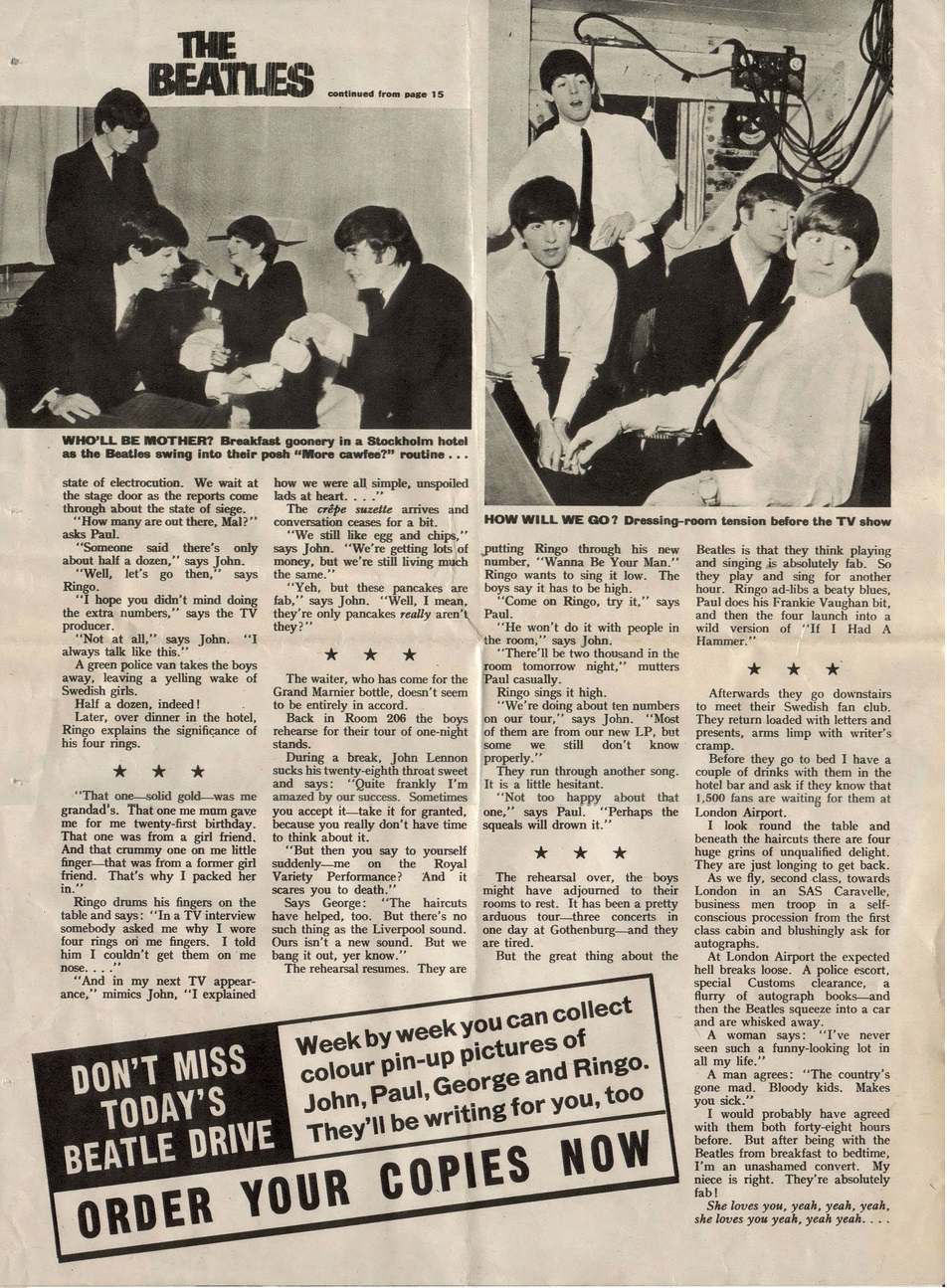  April 13, 2023 Harry Nilsson's "The Point" aired in 1971 was rebroadcasted a second time on December 7, 1974 on ABC television. The zany cartoon was originally narrated by Ringo Starr!
The Beatles' legend comes to life with Ed Sullivan by Lou O'Neill Jr. for Circus magazine
 April 12, 2023 from Andrew at Parlogram Auctions 15,015 views Apr 9, 2023 It's been over 40 years since the original EPs collection was issued and we think its high time for a new one. In this video we discuss how and why it should be done plus what bonus EPs could be added to make this a wonderful collector's set. Take a look and tell us what you think about the idea. John and Yoko: "Two Virgins"
In the Cash Box magazine, this is John and Yoko's advertisement for their "Two Virgins" LP. The publication date for the ad is January 18, 1969.
 April 11, 2023 Spotlight on Ukraine with Klaus Voormann: "MAKE PEACE NOT WAR."
In 1973 Billy Preston receives Gold Records as presented by Dick Clark
Photographs of Badfinger from Hit Parader Magazine, September 1972
 April 10, 2023 Beatle roadie Mal Evans critiques the White Album recording sessions in the November 1968 edition of The Beatles Monthly Book
The Iconic Rickenbacker 325 Has a Story Like No Other Electric Guitar by Rod Brakes for Guitar Player Favored by John Lennon, this short-scale model was the first in Rickenbacker’s defining Capri range
Rickenbacker’s 325 has a story like no other guitar. It’s hard to believe this quirky short-scale semi-hollowbody was a catalyst for the American firm’s meteoric success in the mid '60s (as people who’ve struggled to get to grips with the diminutive 325 regularly agree).
But after falling into the nimble hands of a young John Lennon, this breakthrough design – the first in luthier extraordinaire Roger Rossmeisl’s brand-defining Capri range – helped raise Rickenbacker’s status from Californian guitar pioneer to global rock ’n’ roll icon.
By a strange twist of fate Lennon acquired the first ever production 325 Capri. And thousands of miles away from California to boot.
Having been exported to Rossmeisl’s homeland Germany in October ’58, it was hanging up for sale in a Hamburg music store when the Beatle happened to purchase it in November 1960.
This guitar – serial number V81 – was one of eight instruments in the first batch of 30 that appeared sans f-holes. Built in early ’58, that initial run comprised 325-style triple-pickup vibrato-equipped models bar one dual-pickup/non-vibrato guitar (number V111).
By mid-’58, Rickenbacker had expanded the Capri range to include three other short-scale models: the dual-pickup/non-vibrato 310, dual-pickup/vibrato-equipped 315, and triple-pickup/non-vibrato 320.
325s are easily identifiable by their f-holes, as distinct from long-scale Rickenbacker Capris, which typically sport a slash/cat’s eye soundhole. The exceptions are the Rose-Morris export models that were shipped between ’64 and ’67 after the U.K. firm signed a distribution deal in December ’63.
All Rose-Morris Capris have f-holes and were deemed ‘Special’ orders. Thus, a U.K.-bound 325 was logged as a 325S.
At the same time, Rose-Morris advertised these guitars using its own catalogue number, 1996.
Similarly, there was the 335S/1997 and 345S/1998 long-scale Capris, 615S/1995 solidbody, and 4001S/1999 bass.
The Rose-Morris 1993 12-string Capri was soon added to the range, inspired by George Harrison’s recent acquisition of a prototype 360/12.
After Lennon acquired his second 325 (serial DB122) in ’64 he was also gifted a unique 12-string – a one-of-a-kind 325/12 (albeit without a vibrato) – though this model never went into regular production.
The Rose-Morris export deal coincided with the explosion of the Beatles in America following their record-breaking television debut on The Ed Sullivan Show in February ’64 when around 73 million people tuned in to watch.
The electric guitar industry suddenly boomed. And in a complete reversal of fortune Lennon almost single-handedly revived the ailing short-scale Capri.
Whereas there are no 325s recorded as shipped during ’62 and ’63 due to a lack of interest, in ’64 Rickenbacker found itself struggling with unprecedented levels of demand.
Interestingly, Rose-Morris Capris were increasingly seen in the hands of British Invasion guitarists who then reimported their unique Rickenbacker sound to the U.S., further fueling the demand on home turf.
When the 325 recommenced production in ’64, design updates included a split-level ’guard, small black ‘K.K.’ knobs and an Ac’cent vibrato in place of the original single-layer pickguard, large ‘cooker’ knobs and Kaufmann Vib-Rola.
Rickenbacker’s ubiquitous blend knob (a.k.a. the Compensator control) was developed in the early ‘60s and was also included on the revamped 325, along with a sturdier dual truss rod system.
Thanks to Vintage 'n' Rare Guitars (opens in new tab) in Bath, U.K. for showing us this 1964 Rickenbacker 325S Rose-Morris model 1996.  April 9, 2023 Happy Easter from the Ottawa Beatles Site!
Ringo adds four more shows to his Spring Tour From Ringo's Official Facebook pages (as announced on April 7th)
Abbey Road engineer Ken Scott on recording The Beatles: “I was there when Eric Clapton played the solo on While My Guitar Gently Weeps, but it was just another day at the office so it didn't mean anything at the time” by Neville Marten for MusicRadar
Ken Scott joined Abbey Road Studios during the making of The Beatles’ third album, A Hard Day’s Night, the first on which all songs were written by John Lennon and Paul McCartney. He witnessed the band’s transition from live act playing its repertoire to tape, to pioneering the kind of musical, studio and production techniques that would change recording forever, with albums such as Rubber Soul, Sergeant Pepper’s Lonely Hearts Club Band, and The Beatles (aka The White Album).
When the group disbanded in 1970, Ken briefly worked with George Harrison, John Lennon and Ringo Starr, before heading off to assist such legends as David Bowie, Elton John, Mahavishnu Orchestra and Jeff Beck.
He recently embarked on a project to film The History Of The Beatles Recording Techniques (opens in new tab). Working alongside Fab Dupont, producer and co-owner of plugin designer and provider of recording technique tutorials Puremix, it would be a mammoth task.
“Fab and I were talking about how the recording techniques that The Beatles used changed everything,” begins Ken. “So we split it into four sections: the Please Please Me era, the Drive My Car era, The White Album era, and the Abbey Road era.
“We went into Abbey Road Studio Two, the main one that The Beatles used, and did a five-camera shoot using the same gear that they did - the REDD desks (heard on every album up to Abbey Road) and the TG desks (used on Abbey Road itself), the same microphones, and as close as we could get to the same instrumentation.
“For the playing we used musicians from New York Beatles tribute band The Fab Faux. And even though I worked with The Beatles from A Hard Day's Night through to The White Album, albeit with a break in the middle, there were some things that were a revelation even to me.” Scott joined Abbey Road as a ‘tape op’, or tape operator. “We were actually called button pushers,” he confides, “because all we did was sit at the tape machine and when the engineer said, ‘Play’, we'd hit play. When he said ‘Record’, we’d hit record.”
Ken worked as assistant engineer from side 2 of A Hard Day's Night through to Rubber Soul, but was then promoted and went away to learn mastering for almost two years.
“Yes, then suddenly I was moved back to work on the band’s Magical Mystery Tour album,” he recalls. “My first session, sitting behind a board with no idea what I was doing, was on Your Mother Should Know. It was awful. A couple of days later I did the orchestra and choir for I Am The Walrus, which went a lot better.
“As it turns out, it didn't matter that I messed up Your Mother Should Know because they'd already recorded it at another studio. So we went back to the original, did overdubs and mixed it.”
When The Beatles began writing more complex songs that required more sophisticated mixes, the limitations of Abbey Road’s four-track setup meant that the bouncing of takes from track to track was essential.
“That was a question of making decisions,” Scott explains. “When you've filled up four tracks and you're bouncing all four down to one other, to free them up for more recording, there's no changing them later. So you have to make the decision of what it's going to sound like, really early on. Luckily, more often than not it worked.
By 1966 the band had decided that touring was impossible. Screaming audiences meant they couldn’t hear themselves, and as their music became more refined it was difficult to perform live. The album Rubber Soul is widely seen as the transition point.
“Yes, the big jump came with Rubber Soul. As they got bigger they got offered different amps and pedals to try out, before anyone else saw them.You also had George with the sitar on Norwegian Wood, and on Yes It Is (B-side of Ticket To Ride), he used the DeArmond volume pedal for the volume swells, one of the first occasions it was used. ”
As the sound of each album changed, the clean tones of George’s various Gretsch guitars, his Hard Day’s Night Rickenbacker 12-string, and John’s own short-scale Rickenbacker gave way to more strident-toned Epiphone and Gibson guitars. Occasionally John and George used Fender Stratocasters, and later Harrison acquired his Let It Be rosewood Telecaster. They also received more powerful Vox amps, often with built-in distortion, then later moved to Fender amplification. These changes all impacted on the sound, so does Ken feel the instrument changes were deliberate?
“Sometimes yes, they had a certain sound in mind so they would use a specific setup. But as often as not it was just different things at different times,” he muses. “Someone would just pick something up and play it.”
On later albums, since he lived just round the corner from the studio, Paul would sometimes come in and lay his bass parts down over the ready recorded tracks.
“That was very much a Sgt Pepper thing,” says Ken. “Then later, on the White Album, sometimes the others would play bass. On several tracks there are two bass players. One would be playing a regular four-string, the other the six-string Fender, and although they weren't always playing exactly the same thing, it worked. It gives a unique bass sound.”
Lennon and McCartney’s musical personalities began to blossom, too, Paul being the conventionally clever one and John the off-the-wall genius. This was plain to see in Peter Jackson’s recent Get Back documentary.
“Paul was exceedingly patient, and would keep on going until it was the way he wanted it,” explains Ken, “whereas John would prefer to get it over with as quickly as possible. But that movie also showed the fun that they used to be in the studio.The original version had been cut so it showed them arguing all the time. Of course, someone's temper would flare up, but when you spend six months working on an album that's going to happen. But for instance, when Ringo left in the middle of The White Album, when he came back the whole studio was filled with flowers that George had sent in. It was amazing.”
One notable moment in pop music history is when Harrison brought Eric Clapton to Abbey Road to play the solo on While My Guitar Gently Weeps. Was Ken there? If so, what does he recall of the occasion?
“Well, I was at the session,” he confesses, “but it was just another day at the office so it didn't mean anything at the time. It's become part of history, but I don't remember anything about it. Chris Thomas, who was George Martin's assistant, remembers nothing about it. John Smith, my assistant engineer, remembers nothing about it. I've actually planned to do some regression therapy, hypnotism, to try and get back there and see if I can recall it. So I would love to be able to answer that question, but at the moment I can't.”
From the mid-’60s onwards The Beatles were musically on top of the world. There surely must have been a sense that between the band, its producers and engineers, they were making musical history…
“Not in the slightest,” Scott exclaims. “Obviously you know that there is importance to what you're doing. But to think that I would be talking about the records 60 years on… It was just rock and roll. Generally the artist had to come up with an album every six months, and if people were still talking about that when the next one came out, you've done your job.”
As their musical personalities and confidence blossomed, the band’s demands on the studio staff became immense, especially with tracks like McCartney’s sophisticated Penny Lane, Lennon’s complex Strawberry Fields Forever, and Harrison’s Within You Without You, which was laden with sitar and additional Indian musicians. So did Scott ever dread going into the office?
“The only reason for dreading it would be boredom, because they weren't working fast, they would take three days just to get a basic track. And so much of it was experimentation. You never quite knew what was going to happen. But because they were experimenting all the time it gave me freedom to experiment, too. So I got to learn my craft with this one amazing band.”
Once The Beatles had split, Scott carried on working with John, George and Ringo.
“We'd finished doing All Things Must Pass (Harrison’s first solo album), but George was producing other Apple acts. So right in the middle of that we did Ringo’s single It Don't Come Easy, which was my only time working with him outside of The Beatles. George had recorded the basic tracks for All Things Must Pass but two four-tracks wasn’t enough, we needed 16-track. Trident Studios had 16-track so we transferred there and continued the overdubs and mixes. When it came to the mixing part, Phil Spector (producer) would come by every now and again and pass comment. With John we mixed Give Peace A Chance, which he’d recorded in Canada. Then I recorded Cold Turkey. Other than that it was just like working with The Beatles.”
George didn't really play slide guitar in The Beatles. Yet, between the split and releasing All Things Must Pass less than a year later, he came out as a brilliant and unique slide guitarist.
“I think he learned to do it during that time, because he was taking influences from all over the place, hanging out with Eric Clapton, picking up things from him, Delaney and Bonnie and those kinds of people. Then there was the whole Indian thing. I think all of these things just came together, and he came out playing slide the way he did.”
It’s perhaps easy to forget the significance of Abbey Road Studios itself in all this. Its location in St John’s Wood in London, so close to McCartney’s own home, the sound of the equipment, and the people and culture inherent in such an established enterprise.
“The place itself was exceedingly important,” stresses Scott. “We considered then that it was behind the times because we didn't have eight-track recorders when other places did. It was old gear and the electronics engineers still wore white coats. But looking back it was so important. The technicians were amazing. They kept everything up to 110% of what it was capable of doing. They looked after it all so well, which kept us, the engineers and assistants, working properly. Number two studio is completely unique as well. So yeah, Abbey Road itself was a big part of it.”  April 8, 2023 Flashback to Ringo's "Son of Dracula" - a musical horror movie The article below is from the October 1974 edition of Hit Parader and was written by Hank Fish.
 April 7, 2023 John Lennon: Imagine mosaic unveiled at Strawberry Field by the BBC
A mosaic inspired by John Lennon has been unveiled as the centrepiece of a new bandstand on a site that inspired a much-loved Beatles song.
The Imagine mosaic has been laid at Strawberry Field in Woolton, Liverpool, which gave its name to the band's 1967 single Strawberry Fields Forever.
It was inspired by the memorial to Lennon which was laid in New York's Central Park in 1985.
The site's mission director said it was "a message of peace and hope".
Major Kathleen Versfeld, who has responsibility for the Salvation Army site, added that the mosaic was "a culmination of hard work and dedication by so many creative people from across the globe".
Lennon spent his childhood in nearby Menlove Avenue and as a young boy, he played in the grounds of Strawberry Field, which was then a children's home.
Strawberry Fields Forever, which appeared on The Beatles' Magical Mystery Tour album, was based on his memories of the site.
After he was killed in New York in 1980, a garden in the shape of a teardrop was built in Central Park in New York on the site where his widow Yoko Ono scattered his ashes.
The garden, which was named Strawberry Fields, was opened by Ono in 1985 and included the original Imagine mosaic, which was inspired by Lennon's 1971 single and album.
The Liverpool site, which remains in Salvation Army ownership, now features an exhibition which tells the story of Lennon's life.
The new mosaic, which measures about 21ft (6.4m) in diameter, has been created from 390,000 black and white Italian marble tiles and took four artists over 15 weeks to lay.
The bandstand which houses it has been built in a design based on the drum which featured on the cover of The Beatles' 1967 album, Sgt. Pepper's Lonely Hearts Club Band.
Mjr Versfeld said it was "a beautiful new addition to our attraction" and would open to the public later in the year.
Related link: The Beatles: How a schoolboy made the band's earliest known UK concert recording by Samira Ahmed for the BBC
The earliest known full recording of The Beatles playing a live concert in the UK, at the point they were becoming the biggest band in the nation, has been revealed by BBC Radio 4's Front Row, almost exactly 60 years after it was made. The hour-long quarter-inch tape recording was made by 15-year-old John Bloomfield at Stowe boarding school in Buckinghamshire on 4 April 1963 when the band played a concert at the school's theatre. They had been booked by fellow pupil David Moores, who had written to manager Brian Epstein. Epstein, perhaps recognising the connection to an important Liverpool family - the Moores family owned the Littlewoods football pools and retail business - agreed to the booking for a fee of £100, and Moores raised the funds by selling tickets to schoolmates. Bloomfield was a self-confessed tech geek keen to try out a new reel-to-reel tape recorder. Now in his 70s, he revealed the existence of the tape when I went to Stowe to make a Front Row special about the 60th anniversary of the concert. On the cusp of fame It was a unique Beatles gig, performed in front of an almost entirely male audience. And crucially, despite loud cheers and some screaming, the tape is not drowned out by the audience reaction. It captures the appeal of The Beatles' tightly-honed live act, with a mixture of their club repertoire of R&B covers and the start of the Lennon/McCartney songwriting partnership, with tracks off their debut album Please Please Me, which had been released barely two weeks earlier, on 22 March. They kicked off with the album's opening track I Saw Her Standing There and then segued into Chuck Berry's Too Much Monkey Business. Beatles historian Mark Lewisohn and I are the only people to have heard the full recording after Bloomfield agreed to play it for the first time since the recording was made. Part of it was played on Front Row on Monday (3 April). Speaking about its significance, Lewisohn said: "The opportunity that this tape presents, which is completely out of the blue, is fantastic because we hear them just on the cusp of the breakthrough into complete world fame. And at that point, all audience recordings become blanketed in screams. "So here is an opportunity to hear them in the UK, in an environment where they could be heard and where the tape actually does capture them properly, at a time when they can have banter with the audience as well. "I think it's an incredibly important recording, and I hope something good and constructive and creative eventually happens to it. "I didn't even know this tape existed until you told me about it, and I think I had to pick myself up off the floor." 'From a different planet' The band arrived late from a recording at the BBC Paris Studios and, used to playing two half-hour sets, rattled through more than 22 songs in an hour. Remarkably, they are heard taking requests from the schoolboys, who shouted out the names of songs that had been released just two weeks earlier. The banter between the band and audience reveals John Lennon doing joke voices, the huge popularity of Ringo Starr, and the fact that George Harrison had lost his voice and was unable to sing. Bloomfield said the show made a big impact on him. "I would say I grew up at that very instant," he said. "It sounds a bit of an exaggeration, but I realised this was something from a different planet." Although Stowe was a boys' school at the time, some girls were watching the Fab Four from the back. "It wasn't until they started playing that we heard the screaming, and we realised we were in the middle of Beatlemania," Bloomfield said. "It was just something we'd never even vaguely experienced." Tuck shop tour Afterwards, the band were taken for a meal in the tuck shop and were shown Bloomfield's typically spartan dorm room. In 2020, when the school put up a blue plaque to celebrate the Beatles' visit, Sir Paul McCartney recalled how shocked they'd been. "Good old working class boys like us had never visited an establishment like Stowe and we were shocked to see the stark living conditions," he said. Bloomfield has kept the recording for all these years, but had never publicly revealed its existence until now. Visiting the school theatre again, he said he was embarrassed to have made the tape, but seeing the Beatles had changed his life and he found it emotional listening to it again, 60 years on. Samira Ahmed's special report on The Beatles at Stowe School is on Front Row on BBC Sounds.  April 6, 2023 Neil Aspinall critiques Mal Evans in a report for the Beatles Monthly Book, May 1967
 April 5, 2023 John Lennon’s lover May Pang recalls being set up by Yoko Ono by Michael Kaplan for the New York Post
May Pang was almost the Yoko Ono of Yoko Ono’s marriage. The then-22-year-old was working as an assistant to Ono and John Lennon when, at Ono’s own request, she reluctantly became Lennon’s girlfriend in 1973. As Pang remembers Ono putting it, “He needs someone nice, like you.” But Ono was likely not expecting things to go as well as they did, or for Pang to almost break up her marriage to the former Beatle. Looking back, Pang — a lifelong Beatles fan and subject of the new documentary “The Lost Weekend: A Love Story,” in theaters April 13 — told The Post, “It’s almost surreal. In one way, Yoko took advantage because I was naïve. But she also gave me a gift. John and I fell in love.” Beyond the expected sexual liaisons, their time together included gunplay, stoned-out jam sessions, Paul McCartney playing spy for Yoko, drunken carousing through the nightclubs of Hollywood, and at least one house trashing. It began in 1969 when 19-year-old Pang fluked into a job as an office assistant for Apple Records, the Fab Four’s label. “I asked if the Beatles ever come here,” Pang, now 72 and living in Queens, recalled. “[The office manager] just chuckled and said, ‘No.’” But he was wrong. In 1970, Lennon and Ono relocated from London to New York and visited the office. “Apple’s VP said to me, ‘Get your ass upstairs and see what they need,’” Pang recalled. What they needed was an assistant. Pang landed the gig. It was heady work for a first-generation Chinese American who grew up in Spanish Harlem and, previously, had gotten no closer to rock stars than dancing to their records. Early tasks included procuring flies from restaurant dumpsters for Ono’s art film “Fly.” The footage captured actress Virginia Lust, allegedly sedated, as some 200 flies, shown one at a time, exploring her body. But the most outrageous assignment came from Ono in 1973.
It seemed like a typical morning in the couple’s Manhattan apartment at the Dakota building when, Pang told The Post, “Yoko said, ‘John and I have not been getting along. He is going to start going out with other people. I think you will be good for him.’”
Astonished, Pang protested. She did not want to be the girlfriend of her married, 32-year-old boss. “Yoko said, ‘You should [do it].’ Then she walked out of the room,” Pang recalled.
She did not know it at the time, but, she now believes, “Yoko wanted me to be his girlfriend so she could control the relationship.”
With neither Pang nor Lennon naturally interested, the arranged romance started slow.
After a week Lennon stole a kiss from her in the Dakota elevator. “A week later, he got to second base,” she said. “Days after, he hit a home run.”
As for the quality and frequency of the sex, she euphemistically says in the documentary, “It was cock-a-doodle-do all the time … John Lennon charmed the pants off of me. After we made love [for the first time], I started to cry.”
Things accelerated in September 1973. Early one afternoon, Lennon said, “We have to get out of New York, May. Just the two of us. Away from Yoko.”
By 6 p.m. that day, they were en route to LA.
So began an 18-month-long affair that has come to be known as John Lennon’s Lost Weekend.
“We fell in love with each other,” said Pang. “We were like a couple of kids. His favorite thing was to go to IHOP and eat blueberry pancakes.”
They moved into a Bel-Air mansion, on loan from legendary record executive Lou Adler (Carole King, the Mamas, and the Papas).
Life was idyllic.
Pang photographed Lennon continually (an exhibit of her Lost Weekend era photos runs April 8 and 9 at City Winery).
They wore each other’s clothing and rubbed elbows with LA royals such as Warren Beatty, Cher, and Elizabeth Taylor.
For Pang’s 23rd birthday, in October 1973, Lennon bought her an orange Plymouth Barracuda.
He drew pictures that showed her speeding, as he sat in the backseat, screaming, “Help.”
But there was also a wild side. Unbound from Ono’s sensible restraints, Lennon hit Tinseltown hard — and not always to the best effect.
“It was a rehash of my youth,” Lennon once said. “Acting like a teenager in Hollywood.”
On one occasion, he drunkenly turned up at a hot LA nightclub called the Troubadour with a tampon tied around his head.
According to the Guardian, he proceeded to “make a supreme fuss at the ticket counter” for comped drinks — and stiffed the waitress who called him “some jerk with a Kotex around his head.”
Another night at the Troubador, things got wild when Lennon and his pals were smashed on Brandy Alexanders.
“It was a comeback show for the Smothers Brothers [a comedy duo canceled by CBS due to off-color humor],” recalled Pang, who did not drink alcohol. “We were at a table with Pam Grier, Peter Lawford, and Harry Nilson [a hell-raising musician whose 1974 “Pussy Cats” album Lennon produced].
“Harry heckled the Smothers Brothers and got John to join in. All of a sudden, the Smothers’ manager came over and grabbed John by the collar. John didn’t like it and the table went flying.”
Lennon and Nilson were shown the door.
Prior to the dust-up, Lennon showily made out with Pang.
Photographers had a field day.
Back in New York, Ono was keeping tabs on the relationship.
“She’d call 20 times a day,” said Pang. “Sometimes it would be at 4 a.m. And the calls were over nothing. She would say, ‘I just went for a walk.’ I would say, ‘And?’ But there would be no and.”
According to the doc, Ono even had a hand in a surprise reunion between Paul McCartney and Lennon in LA.
“John was not responding as Yoko wanted,” said Pang, meaning that she hoped Lennon would tire of Pang and return to her. “She called on Paul to see what was happening with us. She told Paul, ‘Oh, I don’t mind John coming home.’ John never knew, but Yoko sent Paul to check us out.”
While life in LA was not all play — Lennon recorded his album “Rock ‘n’ Roll” during this period, with notorious producer Phil Spector — even efforts to work skidded off the rails.
“Phil liked poppers,” Pang recalled, referencing capsules of alkyl nitrate that were snapped open and caused a quick high via inhalation of the fumes. “And he popped them under everyone’s nose. He was a nightmare.”
Pang told The Post that the craziest Spector session ended with him shooting a gun in the studio lounge while chatting with Lennon.
“Everybody hit the ground; I ran toward the gunshot,” said Pang. “I entered the lounge and heard John say, ‘If you’re going to shoot me, shoot me. But don’t f–k with my ears. I need them.’”
That night, back at Adler’s house, following a drunken scuffle with Spector and Spector’s bodyguard, a vodka-blasted Lennon flipped.
“He threw a chair through the window and broke a gold record,” said Pang. “The next morning, John told me that they took his glasses and tied him up with Lou’s neckties. He didn’t know his whereabouts. Phil’s bodyguard sat on him. John thought there was going to be an all-male ménage à trois.”
After about six months in LA, the couple returned to New York — but not to Ono, Pang said.
“John was with me. We moved into a one-bedroom apartment on East 52nd Street. It’s where Bob Gruen shot the famous photo of John on the roof, wearing a T-shirt that said ‘New York City.’ I took a photo of Bob taking the photo,” she remembered.
They lived as an unabashed couple and Lennon, according to Pang, made his preference for her clear.
At an off-Broadway premiere of a musical based on “Sgt. Pepper’s Lonely Hearts Club Band.” Ono turned up and Pang recalled that she “whispered to John, ‘Do you want me to give up my seat?’ He bluntly said, ‘No! Let her sit in the back.'”
Then things became serious: “In January 1975, after visiting Mick [Jagger] and Bianca [Jagger] at Andy Warhol’s house in Montauk, we found a house to buy there. I think Yoko got wind of how close we became. If we bought the house, it would have been the end.”
Later that month, on a Friday night, Lennon went to the Dakota.
Ono had set up an appointment with a hypnotist, ostensibly to help him quit smoking.
“He headed it for the door and I knew it was not good,” said Pang, adding that Lennon promised to come back but spent the weekend with Ono. When they reconvened on Monday, Pang said, “John told me, ‘Yoko is allowing me to come back.’ I asked whose idea it was. He said ‘Nobody’s.’ That was the end. It hit me hard.”
Pang soon ceased working for Lennon and Ono and secured a job at Island Records. Still, over the next five years, there were phone conversations and sexual intimacies between her and Lennon.
“Calls would be sudden,” said Pang. “The last one was on Memorial Day Weekend 1980. He called from Cape Town and said, ‘We have to find a way for us to get together.’”
Some six months later, Lennon was fatally shot by Mark David Chapman in front of the Dakota.
“I was at a friend’s house and heard on the radio that John was shot,” Pang said. “I went cold and called a friend to make sure I heard it correctly. I next heard that he was dead. I dropped the phone and screamed. I later spent a lot of time crying by myself and spoke with him spiritually. I’d say, ‘I can’t believe you’re not here.’ We never had closure, and I don’t have closure to this day.”
Though Pang has mostly been out of touch with Ono since the Lost Weekend, she heard from a mutual friend, the late ’60s radical Jerry Rubin, how Ono really felt about her backfired plan.
“Jerry told me Yoko was surprised my relationship with John lasted more than two weeks,” said Pang, who has two children with her former husband, music producer Tony Visconti. “Her plan was for it to really be a lost weekend. But it wasn’t that. She did not expect us to fall in love.”  April 4, 2023 From The Little Red Caboose: WART-FM radio broadcasts of Ringo Starr's albums "Goodnight Vienna" and "Beaucoups of Blues"
 April 3, 2023 Introducing The Beatles - The Story of the World's Most Counterfeited LP by Andrew of Parlogram Auctions In this video we untangle the complicated story of The Beatles first U.S. album and its record label Vee-Jay. We also show you how to tell the difference between an original and counterfeit copies as well as many rarities and variations. In addition, we take a look at Vee-Jay's other Beatles albums, as well as Capitol's replacement album, 'The Early Beatles'. From the Beatles Monthly Book...
 April 2, 2023 In 1969 American actor, composer, musician Theodore Meir Bikel does a cover version of "Piggies" that George Harrison wrote for the Beatles "White Album"
 April 1, 2023 Legendary Booker T who covered a plethora of Beatles songs does "(I'm Sittin') On The Dock of the Bay" and his instrumental hit song "Hang 'Em High (Parts 1 & 2)" Booker T. & The M.G.s mock up of the Beatles Abbey Road album which they entitled "McLemore Avenue" in 1970
From Wikipedia:
McLemore Avenue is a 1970 album by Booker T. & the M.G.s, consisting entirely of mostly instrumental covers of songs from the Beatles' album Abbey Road (released only months earlier, in September 1969). The title and cover are an homage to the Beatles album, 926 East McLemore Avenue being the address of the Stax Studios in Memphis, as Abbey Road was for London’s EMI Studios, which were soon renamed Abbey Road Studios. As a nod to Abbey Road's medley, most of the M.G.s' selections are arranged into their own medleys (with the exception of "Something", which was released as a single and reached number 76 in the US).
Booker T. Jones said, "I was in California when I heard Abbey Road, and I thought it was incredibly courageous of The Beatles to drop their format and move out musically like they did. To push the limit like that and reinvent themselves when they had no need to do that. They were the top band in the world but they still reinvented themselves. The music was just incredible so I felt I needed to pay tribute to it." Parlogram Auctions presents: "Beatles Albums You Never See | Vinyl Rarities From Around the World" In this video we return to the incredible Beatles Museum and Francis' amazing Beatles vinyl collection. In this episode we look at original, rare and unusual album pressings of Beatles albums from: West and East Germany, The Czech Republic, Sweden, Switzerland, Turkey, South Africa, Australia, New Zealand, Denmark, Ecuador, Spain, The Netherlands, Italy, Israel and Japan. The Mona Lisa Twins cover the Beatles "Tell Me Why" Brad Mehldau Plays The Beatles' "Golden Slumbers" (a bit of a jazz version) 
Archived News
July 2000 - June 2003
January 2014 - June 2019 June 5, 2019 - November 2019 December 2019 - October 2020 September 2022 - October 2022 November 2022 - December 2022 January 2023 February 2023 - March 2023
|
|
|
|
| | |||||||||||||||||||||||||||||||||||||||||||||||||||||||||||||||||||||||||||||||||||||||||||||||||||||||||||||||||||||||||||||||||||||||||||||||||||||||||||||||||||||||||||||||||||||||||

